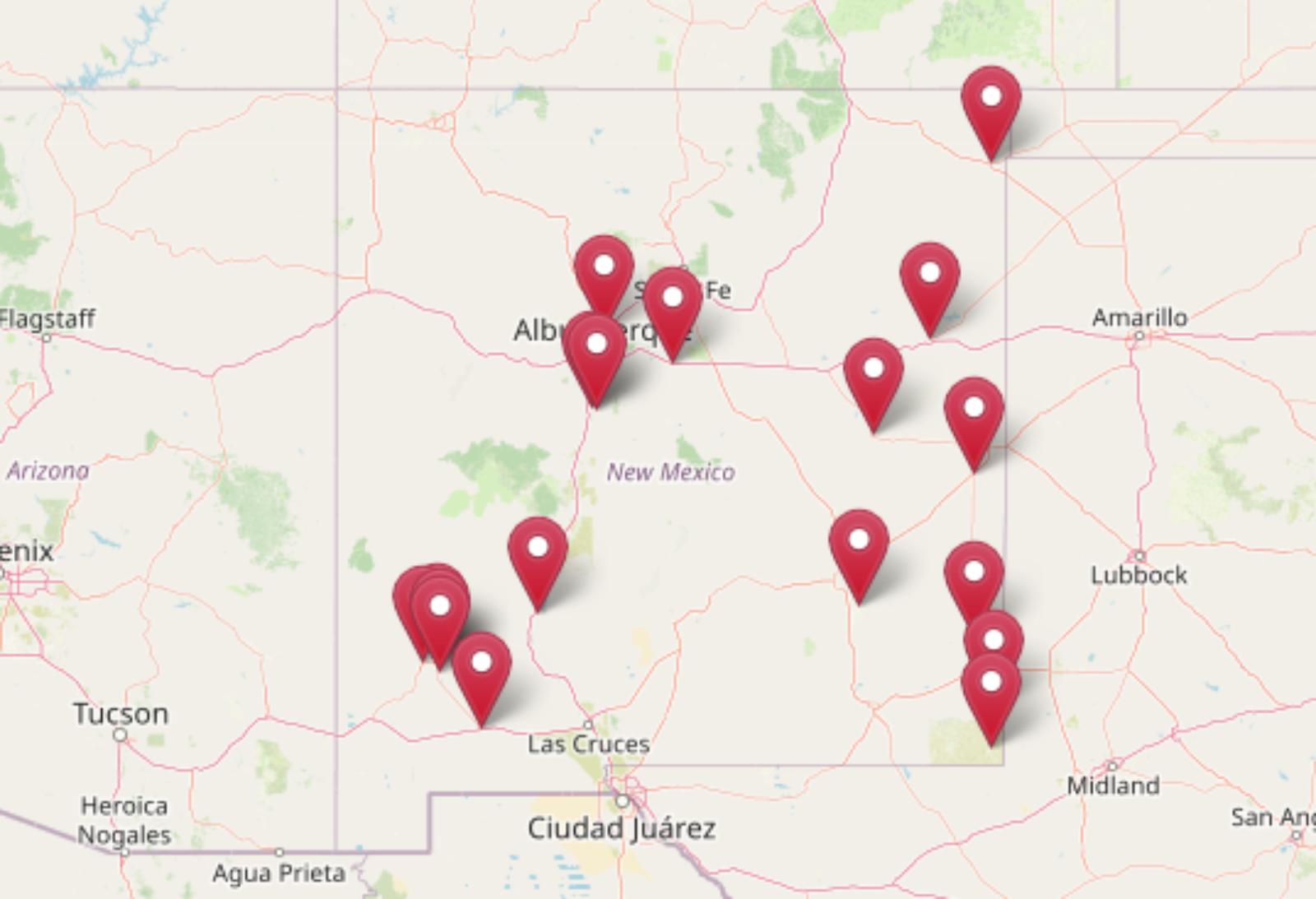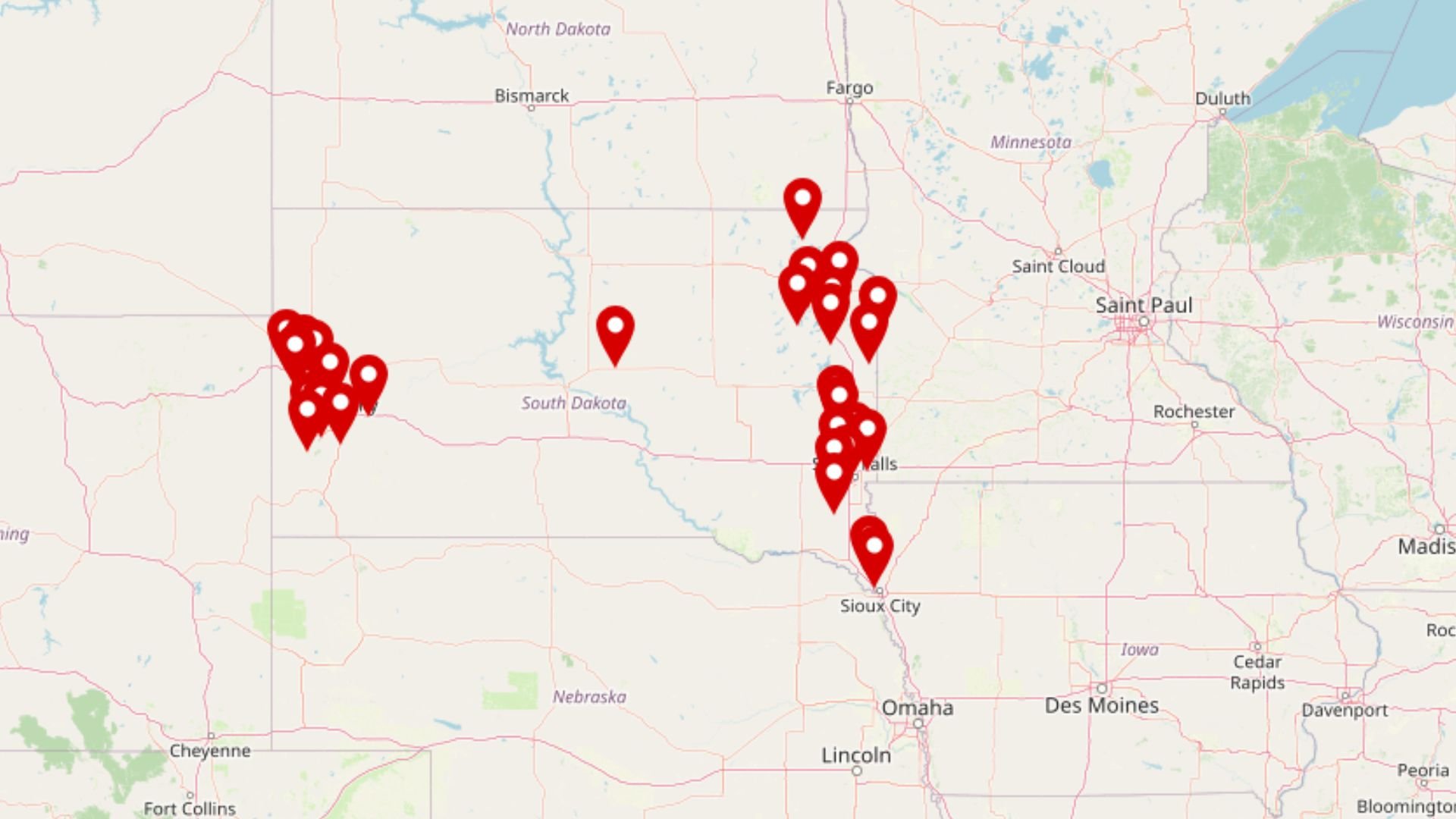
Using the latest Zillow Home Value Index data, we’ve ranked the 30 most expensive towns in South Dakota based on current home prices. These communities showcase the evolving real estate market across the Mount Rushmore State. From Black Hills tourist destinations to growing commuter towns near Sioux Falls, each location tells a story of demand, desirability, and market dynamics.
The data reveals surprising price appreciation across small towns throughout the state. Many communities have doubled their home values since 2010, driven by tourism, proximity to job centers, and the growing appeal of rural living. Whether you’re considering a move, tracking investment opportunities, or simply curious about South Dakota’s housing trends, this ranking provides insight into where home prices have climbed highest and fastest.
30. Sturgis – 101% Home Price Increase Since 2014
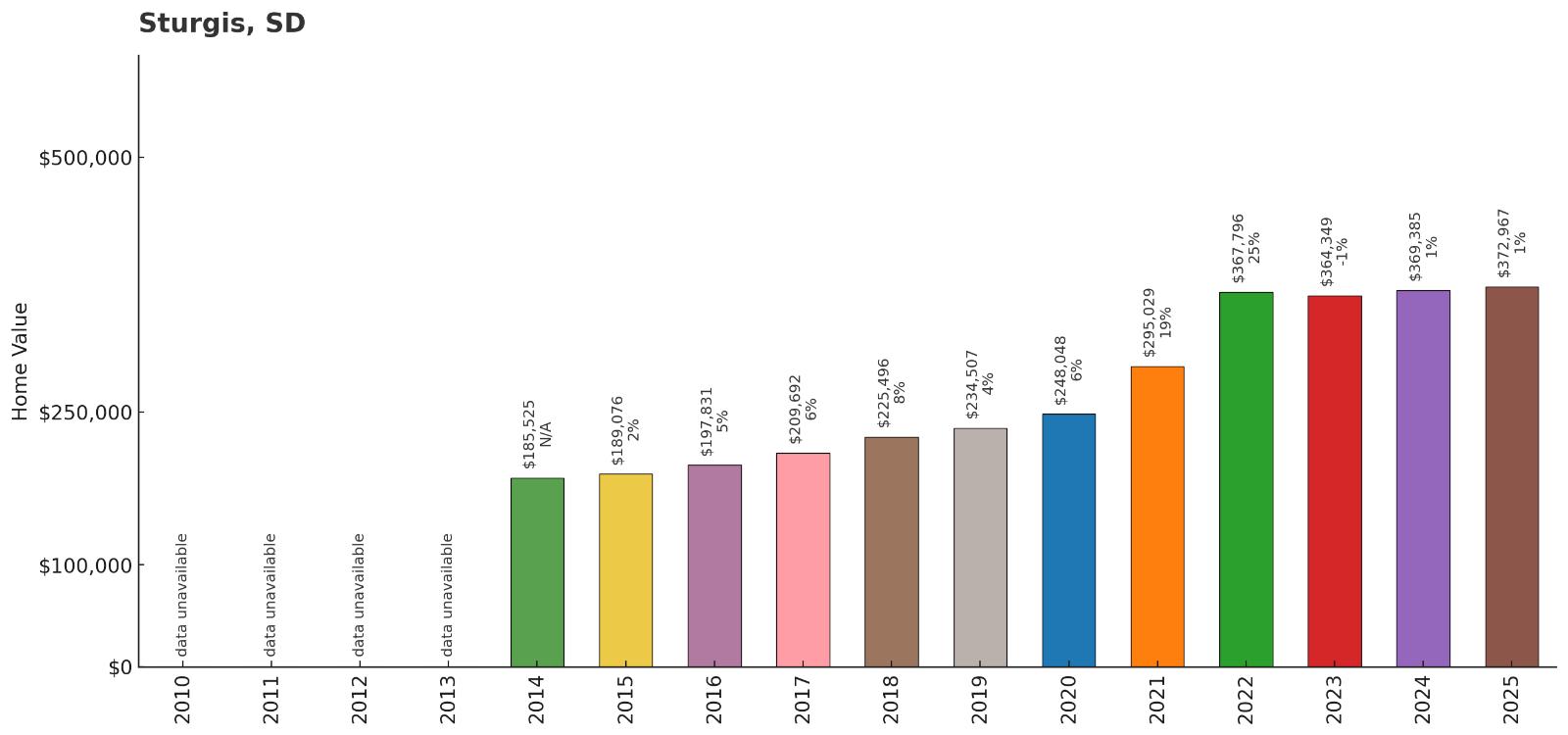
- 2010: N/A
- 2011: N/A
- 2012: N/A
- 2013: N/A
- 2014: $185,525
- 2015: $189,076
- 2016: $197,831
- 2017: $209,692
- 2018: $225,496
- 2019: $234,507
- 2020: $248,048
- 2021: $295,029
- 2022: $367,796
- 2023: $364,349
- 2024: $369,385
- 2025: $372,967
Sturgis has experienced impressive growth since 2014, with home values more than doubling to reach $372,967 by 2025. The most dramatic surge occurred in 2021 and 2022, when prices jumped nearly $120,000 in two years. Current values reflect the town’s enduring popularity and limited housing supply during peak motorcycle rally seasons.
Why Sturgis?

Why Are People Willing to Pay So Much to Live Here? What’s Special About It?
Sturgis offers a unique combination of small-town charm and international recognition through its famous motorcycle rally. Residents enjoy year-round access to Black Hills recreation, from hiking and fishing to proximity to Mount Rushmore and Deadwood. The town provides a stable community base with seasonal economic benefits from tourism.
Unlike purely tourist-dependent areas, Sturgis maintains essential services and infrastructure that support year-round living. The rally brings global attention and economic activity that supports local businesses and property values. Many buyers appreciate the authentic Western atmosphere and the investment potential tied to the area’s tourism economy.
How Sturgis Rose to Prominence
Sturgis began as a military outpost in 1878, named after Civil War veteran Samuel D. Sturgis. The town developed around Fort Meade, which provided economic stability and attracted settlers to the northern Black Hills region. Early industries included agriculture, ranching, and small-scale mining operations that supported the growing community.
The transformation to motorcycle mecca began in 1938 when the Jackpine Gypsies Motorcycle Club organized the first Sturgis Rally. What started as a local racing event gradually grew into the world’s largest motorcycle rally, drawing hundreds of thousands of visitors annually. This evolution created a unique economic model where the town maintains a quiet, rural character most of the year while hosting a massive international event each August.
3 Interesting Tidbits
1. Rally Economics – The annual Sturgis Rally generates over $800 million in economic impact for South Dakota, with much of that flowing through the host town.
2. Fort Meade Legacy – The historic Fort Meade, established in 1878, now houses a museum and veteran’s facility, maintaining the town’s military heritage.
3. Bear Butte Sacred Site – The nearby Bear Butte State Park contains a mountain sacred to several Native American tribes and offers hiking with panoramic views of the northern plains.
29. Tea – 71% Home Price Increase Since 2016
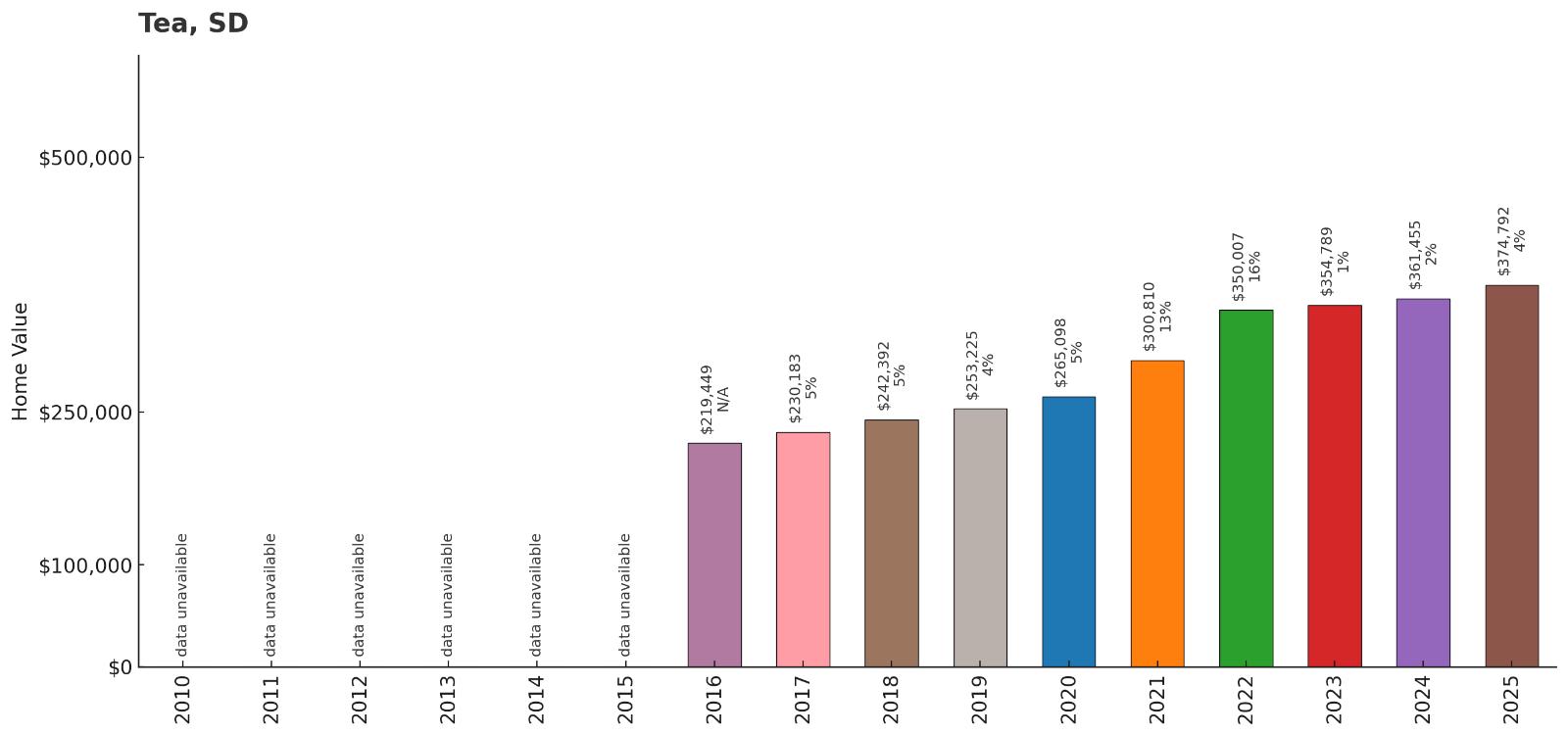
- 2010: N/A
- 2011: N/A
- 2012: N/A
- 2013: N/A
- 2014: N/A
- 2015: N/A
- 2016: $219,449
- 2017: $230,183
- 2018: $242,392
- 2019: $253,225
- 2020: $265,098
- 2021: $300,810
- 2022: $350,007
- 2023: $354,789
- 2024: $361,455
- 2025: $374,792
Tea has shown steady appreciation since 2016, with home values climbing 71% to reach $374,792 in 2025. The strongest growth occurred during 2021-2022, reflecting the broader pandemic housing boom. The community continues to attract buyers seeking suburban amenities near Sioux Falls with excellent schools and family-friendly atmosphere.
Why Tea?

Why Are People Willing to Pay So Much to Live Here? What’s Special About It?
Tea offers the perfect balance of small-town living with big-city access, sitting just 15 minutes from Sioux Falls. Families are drawn to the highly rated Tea Area School District, safe neighborhoods, and strong sense of community. The town provides modern amenities while maintaining its agricultural heritage and rural character.
Housing options range from affordable starter homes to luxury developments, attracting diverse demographics. The community features well-maintained parks, recreational facilities, and annual events that foster neighborhood connections. Many residents appreciate the short commute to Sioux Falls jobs while enjoying lower crime rates and quieter streets than urban areas.
How Tea Rose to Prominence
Tea began as a railroad settlement in the late 1800s, named after the Tea Creek that flows through the area. The town served as an agricultural shipping point for local farmers, with grain elevators and livestock facilities supporting the rural economy. Early settlers were primarily German and Scandinavian immigrants who established farming communities throughout Lincoln County.
The town’s modern growth started in the 1990s as Sioux Falls expanded outward, creating demand for suburban communities with good schools and affordable housing. Tea’s strategic location along Highway 17 made it an attractive option for commuters. The community embraced planned growth, developing residential subdivisions while preserving its small-town character and agricultural roots.
3 Interesting Tidbits
1. Creek Connection – The town takes its name from Tea Creek, which early settlers said resembled the color of tea as it flowed through the prairie.
2. Railroad Heritage – The original Chicago, Milwaukee & St. Paul Railroad depot still stands as a reminder of Tea’s transportation history.
3. Growth Management – Tea has carefully planned its expansion, maintaining agricultural buffer zones around residential areas to preserve its rural character.
28. Harrold – 6% Home Price Increase Since 2024
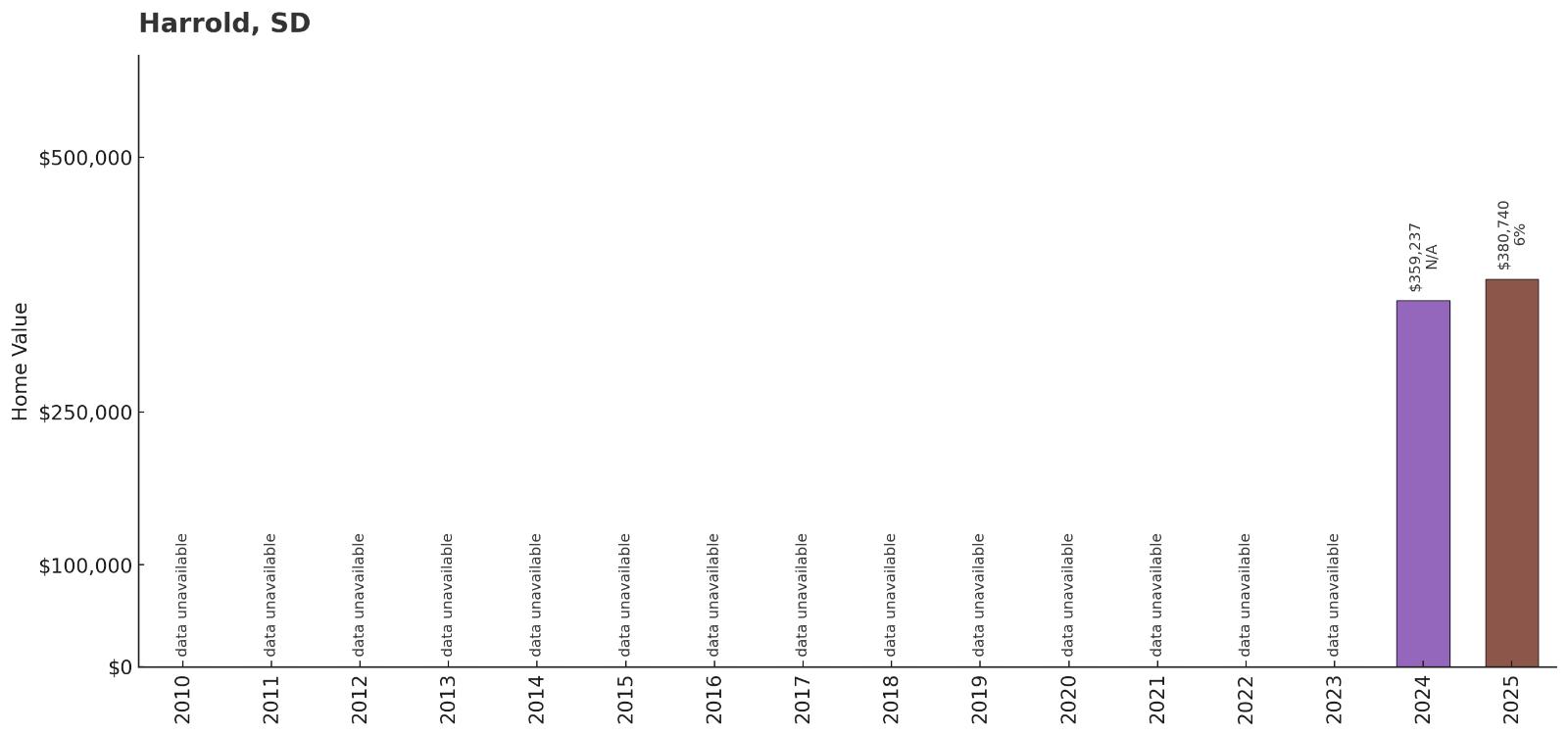
- 2010: N/A
- 2011: N/A
- 2012: N/A
- 2013: N/A
- 2014: N/A
- 2015: N/A
- 2016: N/A
- 2017: N/A
- 2018: N/A
- 2019: N/A
- 2020: N/A
- 2021: N/A
- 2022: N/A
- 2023: N/A
- 2024: $359,237
- 2025: $380,740
Harrold enters the ranking with limited data, showing a modest 6% increase from 2024 to 2025. Current values of $380,740 likely reflect a small housing market dominated by agricultural properties and rural estates. The community represents central South Dakota’s farming economy and wide-open spaces.
Why Harrold?

Why Are People Willing to Pay So Much to Live Here? What’s Special About It?
Harrold appeals to buyers seeking authentic rural living in central South Dakota’s agricultural heartland. The community offers vast open spaces, agricultural opportunities, and a peaceful lifestyle away from urban congestion. Properties typically feature larger acreage, providing privacy and room for farming, ranching, or recreational activities.
The area attracts those interested in agricultural ventures, hunting, and outdoor recreation. Hughes County’s prime farmland and water access from the Missouri River system add value for agricultural operations. Limited housing supply in this rural area means properties command premium prices when they become available.
How Harrold Rose to Prominence
Harrold developed as an agricultural community in the early 1900s, serving farmers and ranchers in Hughes County. The town’s location in central South Dakota made it a natural gathering point for rural residents needing services and supplies. Early economic activity centered on grain storage, livestock handling, and agricultural equipment sales.
The community remained stable throughout the 20th century, adapting to changes in farming technology and rural economics. Modern Harrold represents the enduring appeal of agricultural communities, where residents value self-reliance, wide horizons, and connection to the land. The area has benefited from interest in rural properties and agricultural investment opportunities.
3 Interesting Tidbits
1. Agricultural Hub – Harrold sits in some of South Dakota’s most productive agricultural land, with corn and soybean farming dominating the local economy.
2. Missouri River Access – The nearby Missouri River provides water resources and recreational opportunities for fishing and boating enthusiasts.
3. Rural Authenticity – The community maintains traditional rural values and lifestyle, attracting buyers seeking authentic agricultural experiences.
27. Lead – 114% Home Price Increase Since 2012
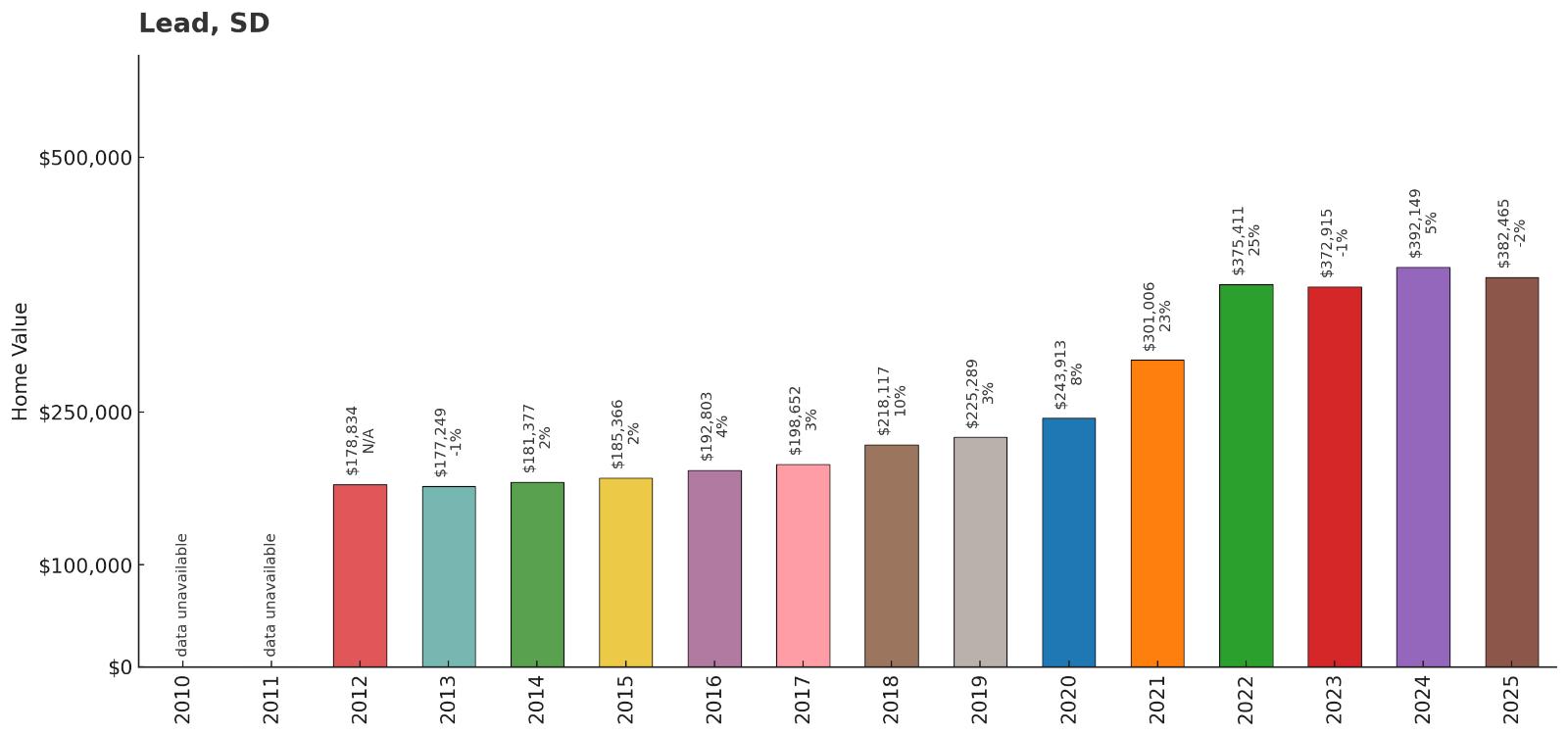
- 2010: N/A
- 2011: N/A
- 2012: $178,834
- 2013: $177,249
- 2014: $181,377
- 2015: $185,366
- 2016: $192,803
- 2017: $198,652
- 2018: $218,117
- 2019: $225,289
- 2020: $243,913
- 2021: $301,006
- 2022: $375,411
- 2023: $372,915
- 2024: $392,149
- 2025: $382,465
Lead has more than doubled in value since 2012, reaching $382,465 in 2025 despite some recent volatility. The strongest growth occurred between 2020 and 2022, when prices surged over $130,000 in two years. Current values reflect the town’s unique position as both a historic mining community and modern research center.
Why Lead?
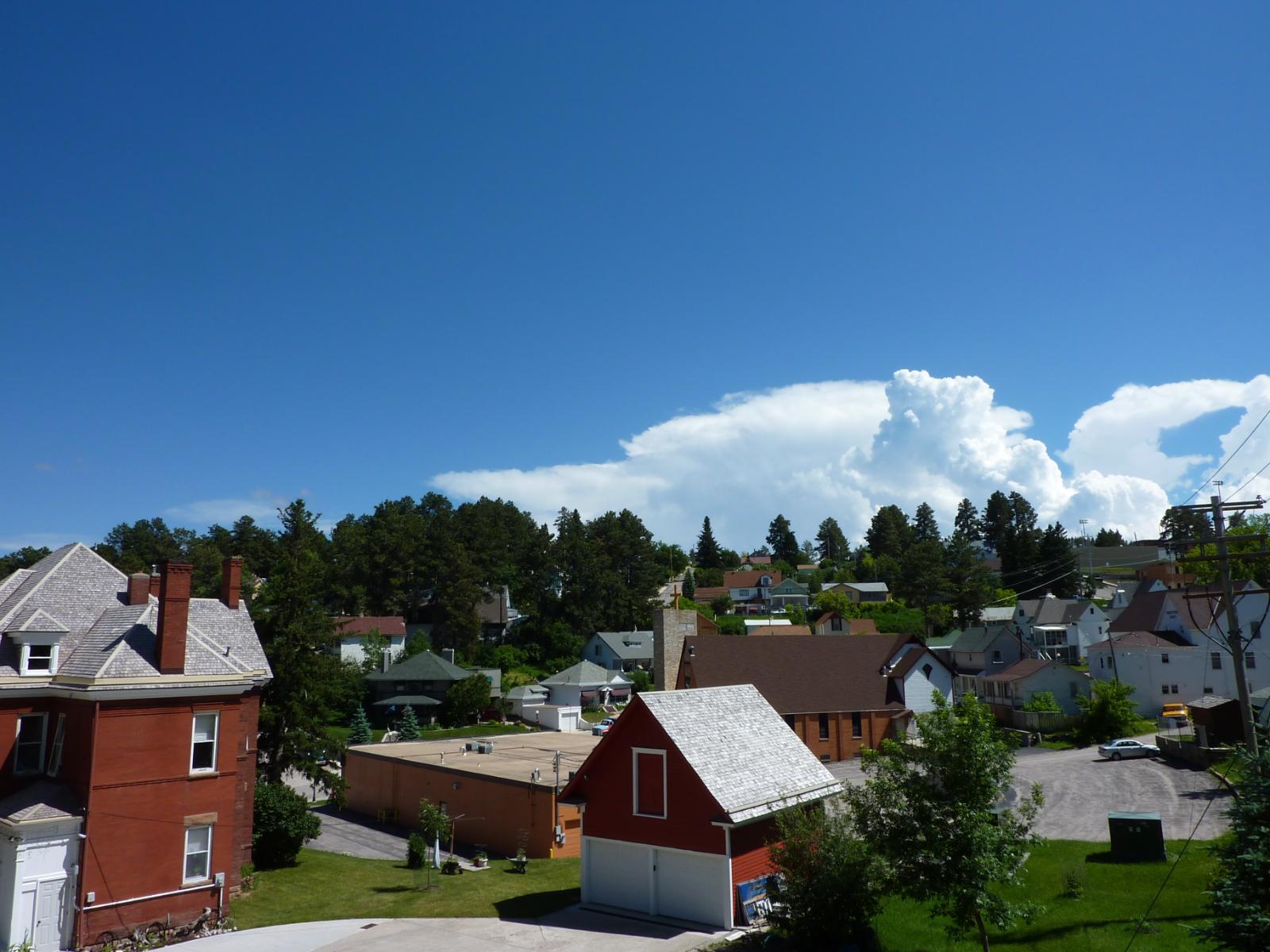
Why Are People Willing to Pay So Much to Live Here? What’s Special About It?
Lead offers a fascinating blend of mining heritage and cutting-edge science, home to the Sanford Underground Research Facility in the former Homestake Mine. Residents enjoy Black Hills living with unique employment opportunities in research, education, and tourism. The town provides affordable mountain living with access to world-class outdoor recreation.
The community features historic Victorian architecture, established neighborhoods, and a strong sense of local identity. Lead’s elevation and mountain setting create a cooler climate than surrounding areas, appealing to those seeking four-season mountain living. The ongoing scientific research facility provides stable, high-paying jobs unusual for a town this size.
How Lead Rose to Prominence
Lead was founded in 1876 during the Black Hills Gold Rush, built around the Homestake Mine discovery. The mine became one of the largest and longest-operating gold mines in the Western Hemisphere, producing over 40 million ounces of gold during its 125-year operation. The mining company created a company town with substantial infrastructure, schools, and housing for workers.
When the Homestake Mine closed in 2002, the community faced an uncertain future. However, the transformation to a world-class underground research facility breathed new life into Lead. The Sanford Underground Research Facility now conducts groundbreaking physics experiments, attracting scientists and researchers from around the world while preserving the town’s unique underground heritage.
3 Interesting Tidbits
1. Underground Laboratory – The former Homestake Mine now houses one of the world’s deepest underground research facilities, conducting dark matter and neutrino experiments.
2. Gold Legacy – During its operation, the Homestake Mine was the largest gold producer in North America, with mine shafts extending over 8,000 feet underground.
3. Science Tourism – The research facility offers public tours, making Lead a unique destination where visitors can experience both mining history and modern scientific research.
26. Davis – 10% Home Price Increase Since 2024
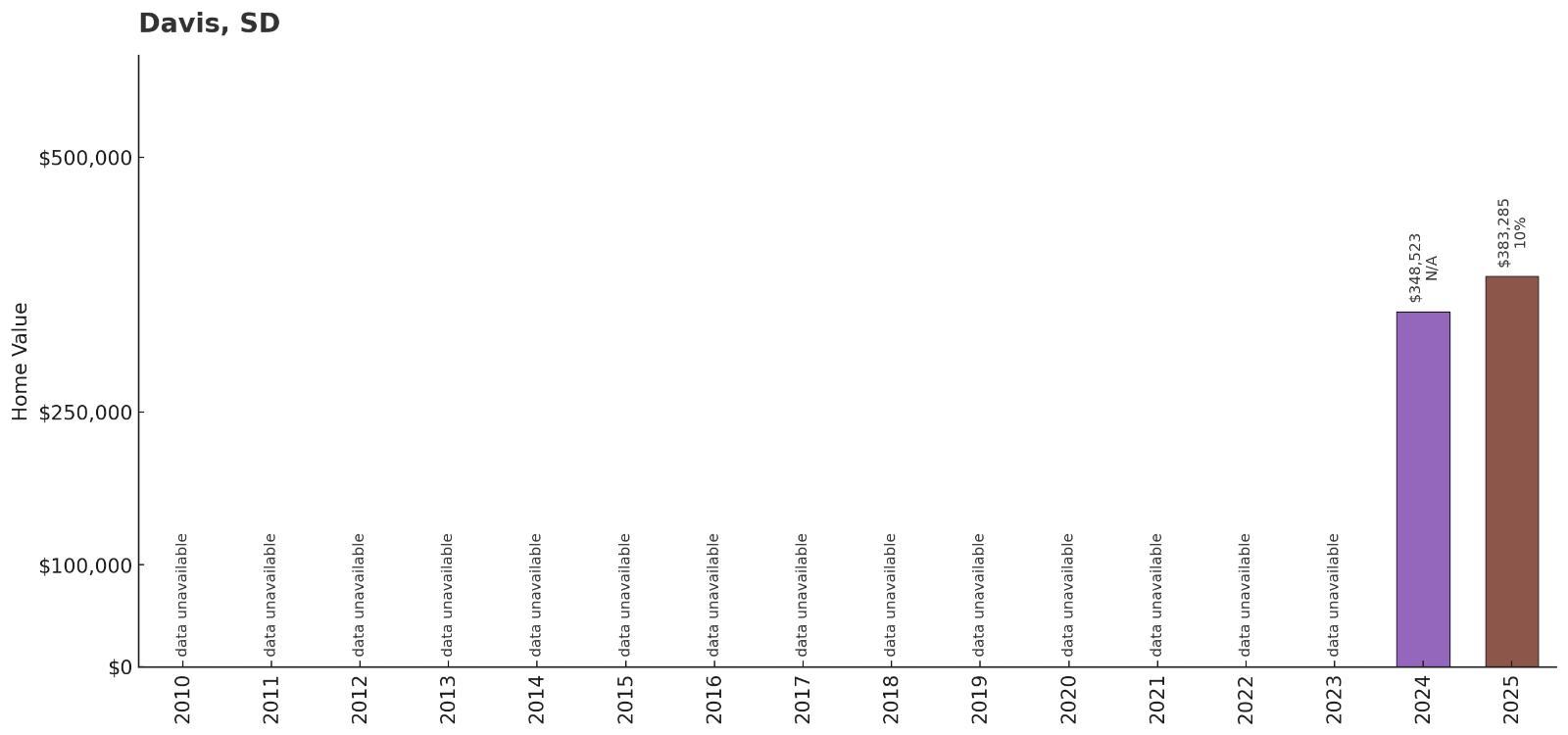
- 2010: N/A
- 2011: N/A
- 2012: N/A
- 2013: N/A
- 2014: N/A
- 2015: N/A
- 2016: N/A
- 2017: N/A
- 2018: N/A
- 2019: N/A
- 2020: N/A
- 2021: N/A
- 2022: N/A
- 2023: N/A
- 2024: $348,523
- 2025: $383,285
Davis shows a solid 10% gain from 2024 to 2025, reaching $383,285 in current home values. The limited data suggests a small rural market with recent appreciation, likely driven by agricultural land values and rural lifestyle appeal. The community represents Turner County’s agricultural economy and rural living opportunities.
Why Davis?

Why Are People Willing to Pay So Much to Live Here? What’s Special About It?
Davis attracts buyers seeking rural tranquility in southeastern South Dakota’s prime agricultural region. The community offers larger lots, agricultural opportunities, and a peaceful lifestyle away from urban development pressures. Properties often include farmland, providing both residential living and agricultural income potential.
The area appeals to those interested in farming, hunting, and outdoor recreation in Turner County’s rolling prairie landscape. Limited housing inventory in this rural setting means available properties command premium prices. Many buyers appreciate the authentic rural lifestyle and connection to South Dakota’s agricultural heritage.
How Davis Rose to Prominence
Davis developed as a small agricultural community in Turner County during the late 1800s homestead era. The town served local farmers with essential services including grain storage, equipment sales, and shipping facilities. Early settlers were primarily European immigrants who established farming operations across the fertile prairie.
The community has remained true to its agricultural roots while adapting to modern farming practices and rural lifestyle preferences. Davis represents the enduring appeal of small-town rural living, where residents value self-reliance, agricultural traditions, and wide-open spaces. Recent interest in rural properties has increased demand for the limited housing available in the area.
3 Interesting Tidbits
1. Prairie Heritage – Davis sits in some of Turner County’s most productive farmland, with corn and soybean operations dominating the agricultural landscape.
2. Small Town Appeal – The community maintains the authentic small-town atmosphere that many urban residents seek for rural retreats or retirement.
3. Agricultural Economics – The area’s economy remains closely tied to commodity prices and farming success, creating stability through agricultural diversity.
25. Jefferson – 107% Home Price Increase Since 2010
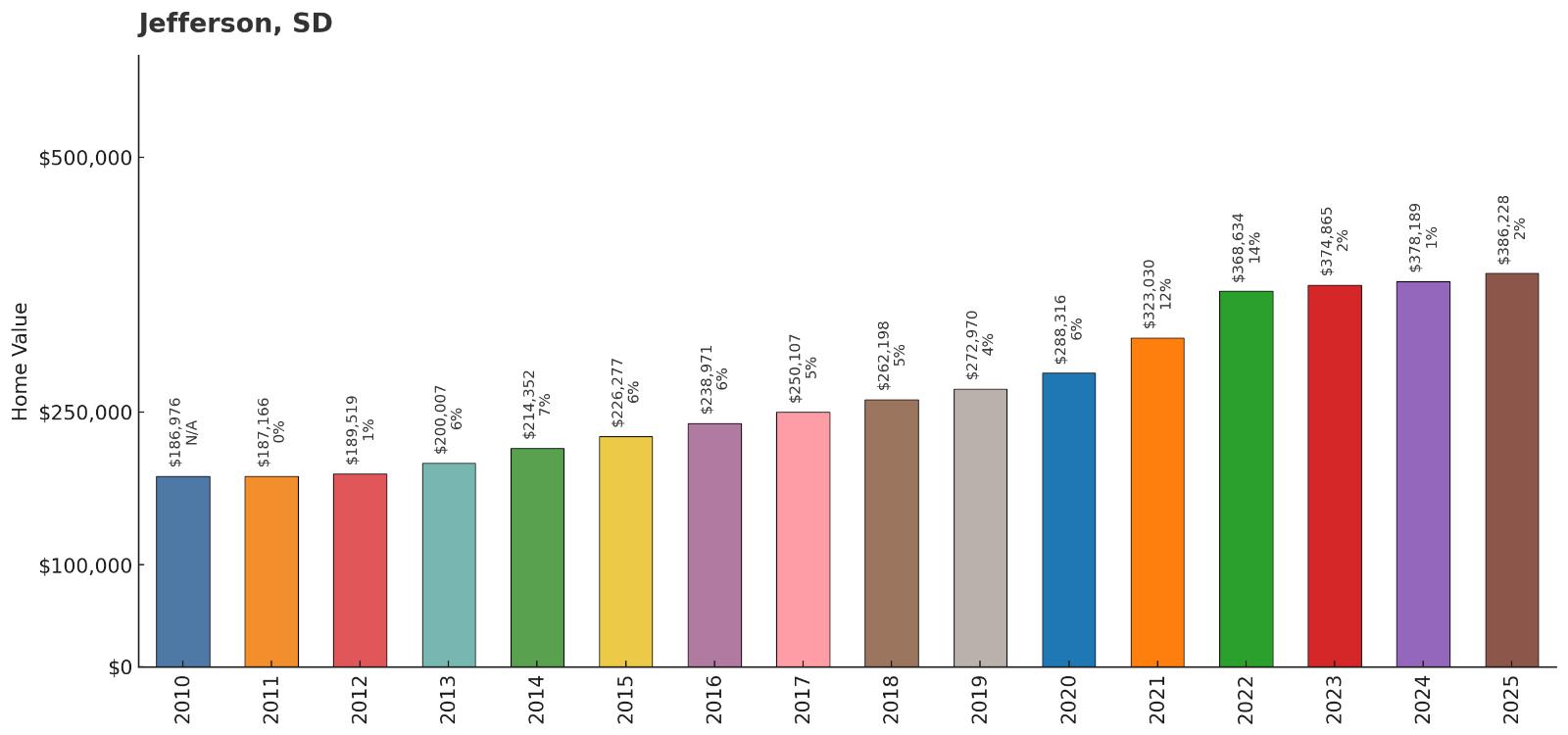
- 2010: $186,976
- 2011: $187,166
- 2012: $189,519
- 2013: $200,007
- 2014: $214,352
- 2015: $226,277
- 2016: $238,971
- 2017: $250,107
- 2018: $262,198
- 2019: $272,970
- 2020: $288,316
- 2021: $323,030
- 2022: $368,634
- 2023: $374,865
- 2024: $378,189
- 2025: $386,228
Jefferson has shown remarkable consistency, more than doubling in value since 2010 to reach $386,228 in 2025. The town experienced steady annual growth throughout the period, with acceleration during the 2021-2022 housing boom. This sustained appreciation reflects strong local demand and limited housing supply in Union County.
Why Jefferson?
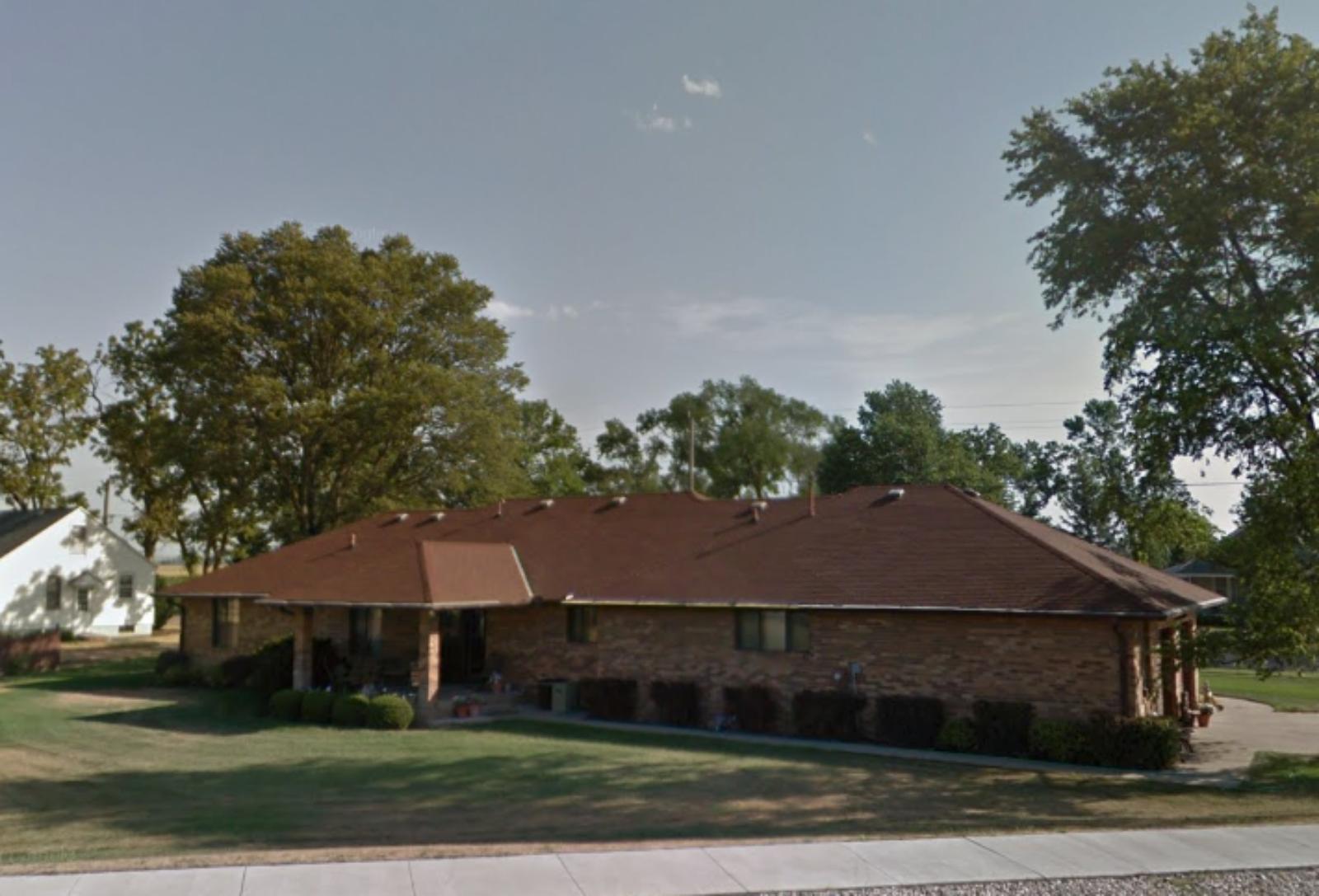
Why Are People Willing to Pay So Much to Live Here? What’s Special About It?
Jefferson provides small-town living with convenient access to both Sioux Falls and Sioux City markets, making it attractive to commuters from either metro area. The community offers affordable housing compared to urban centers while maintaining rural character and family-friendly amenities. Residents appreciate the excellent school district and safe neighborhoods.
The town features well-maintained infrastructure, local businesses, and community events that foster strong neighborhood connections. Jefferson’s location in Union County provides access to Missouri River recreation while remaining close enough to urban centers for employment and shopping. Many families choose Jefferson for its balance of rural lifestyle and suburban conveniences.
How Jefferson Rose to Prominence
Jefferson was established in the late 1800s as a railroad town serving agricultural communities in Union County. The town developed around grain elevators and livestock shipping facilities that connected local farmers to regional markets. Early settlers were attracted by fertile farmland and transportation access via the railroad system.
The community maintained steady growth throughout the 20th century as agricultural technology advanced and rural services consolidated. Jefferson’s strategic location between major metropolitan areas has become increasingly valuable as commuting patterns evolved. The town has successfully balanced growth with preservation of its small-town character and agricultural heritage.
3 Interesting Tidbits
1. Dual Metro Access – Jefferson residents can commute to either Sioux Falls or Sioux City, providing diverse employment opportunities from a single location.
2. Agricultural Innovation – The area has embraced modern farming techniques and technology, maintaining its agricultural economic base while increasing productivity.
3. Community Festivals – Jefferson hosts annual events that celebrate its agricultural heritage and bring together residents from across Union County.
24. Brandon – 119% Home Price Increase Since 2010
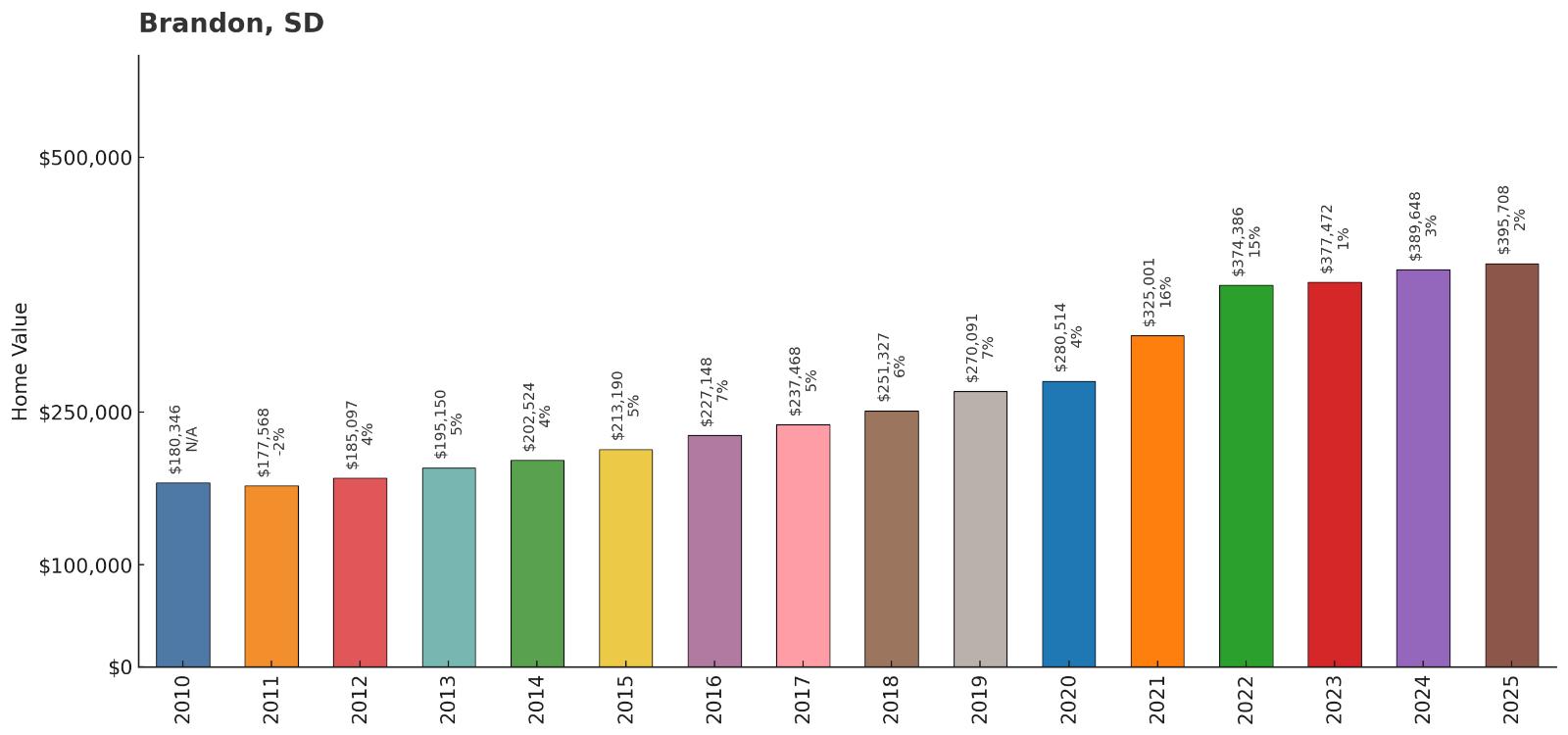
- 2010: $180,346
- 2011: $177,568
- 2012: $185,097
- 2013: $195,150
- 2014: $202,524
- 2015: $213,190
- 2016: $227,148
- 2017: $237,468
- 2018: $251,327
- 2019: $270,091
- 2020: $280,514
- 2021: $325,001
- 2022: $374,386
- 2023: $377,472
- 2024: $389,648
- 2025: $395,708
Brandon has delivered exceptional growth, more than doubling since 2010 to reach $395,708 in 2025. The community showed steady appreciation through 2020, then accelerated significantly during the pandemic housing boom. Current values reflect Brandon’s status as one of South Dakota’s most desirable suburban communities.
Why Brandon?
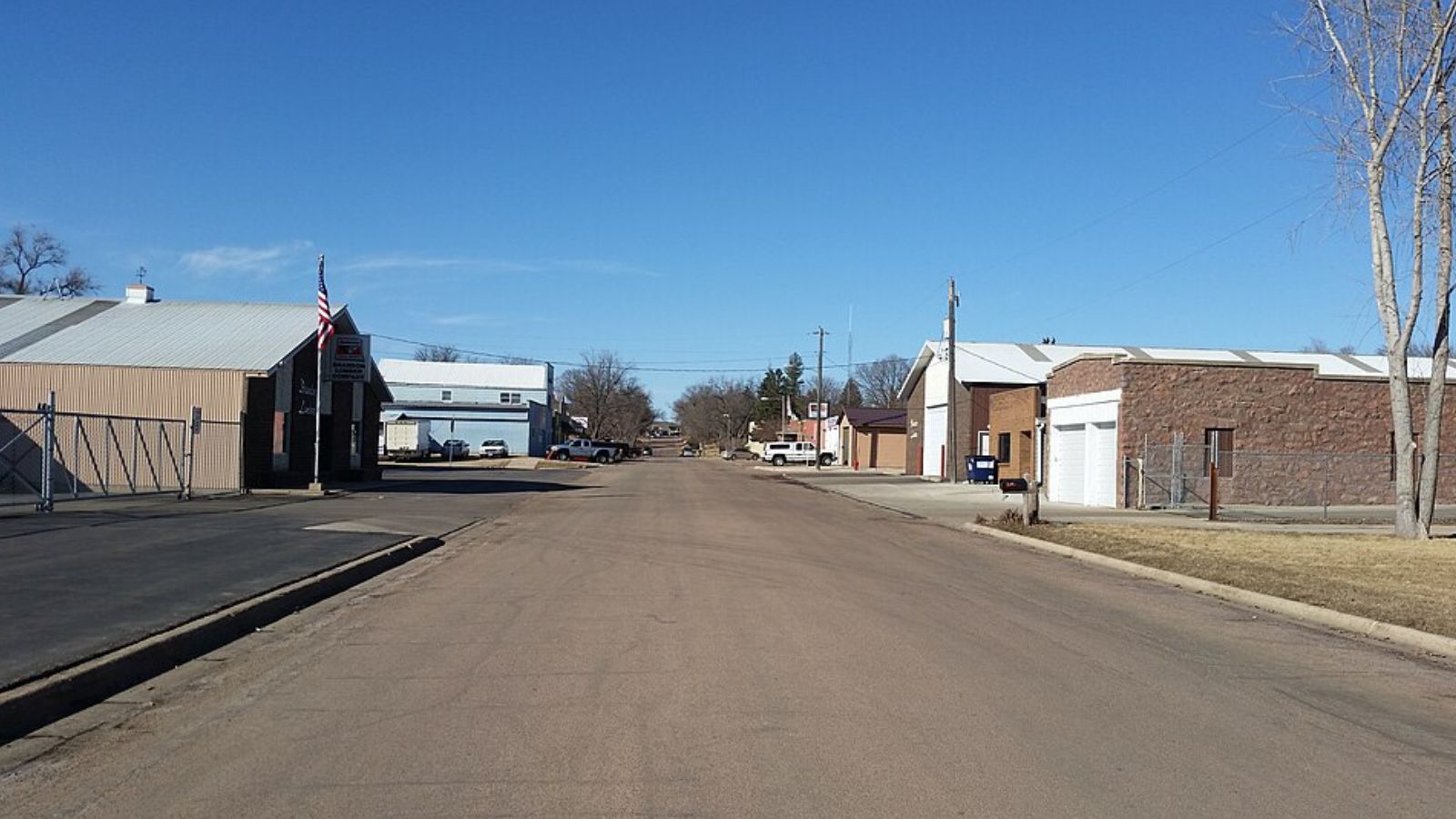
Why Are People Willing to Pay So Much to Live Here? What’s Special About It?
Brandon offers premium suburban living just minutes from Sioux Falls, combining excellent schools with family-friendly amenities and new housing developments. The community attracts professionals and families seeking modern homes, safe neighborhoods, and high-quality schools. Brandon provides urban conveniences while maintaining a strong sense of community.
The town features numerous parks, recreational facilities, and youth programs that appeal to active families. Shopping, dining, and entertainment options continue expanding as the community grows. Many residents appreciate Brandon’s planned development approach, which has created attractive neighborhoods while preserving green spaces and community character.
How Brandon Rose to Prominence
Brandon began as a small agricultural community in Minnehaha County, serving local farmers and rural residents. The town’s transformation started in the 1980s as Sioux Falls expanded eastward, creating demand for suburban communities with good schools and newer housing. Brandon’s location along Interstate 90 made it particularly attractive to commuters.
The community embraced planned growth, developing residential subdivisions, commercial areas, and recreational facilities to support its expanding population. Brandon has successfully managed rapid growth while maintaining high service levels and community amenities. The town has become a model for suburban development in South Dakota, balancing growth with quality of life.
3 Interesting Tidbits
1. Sports Complex – Brandon features one of the region’s premier youth sports facilities, attracting tournaments and teams from across the upper Midwest.
2. Planned Growth – The community has carefully managed its expansion, requiring developers to contribute to infrastructure and amenities as neighborhoods are built.
3. School Excellence – The Brandon Valley School District consistently ranks among South Dakota’s top performing districts, driving residential demand.
23. Chester – 92% Home Price Increase Since 2017
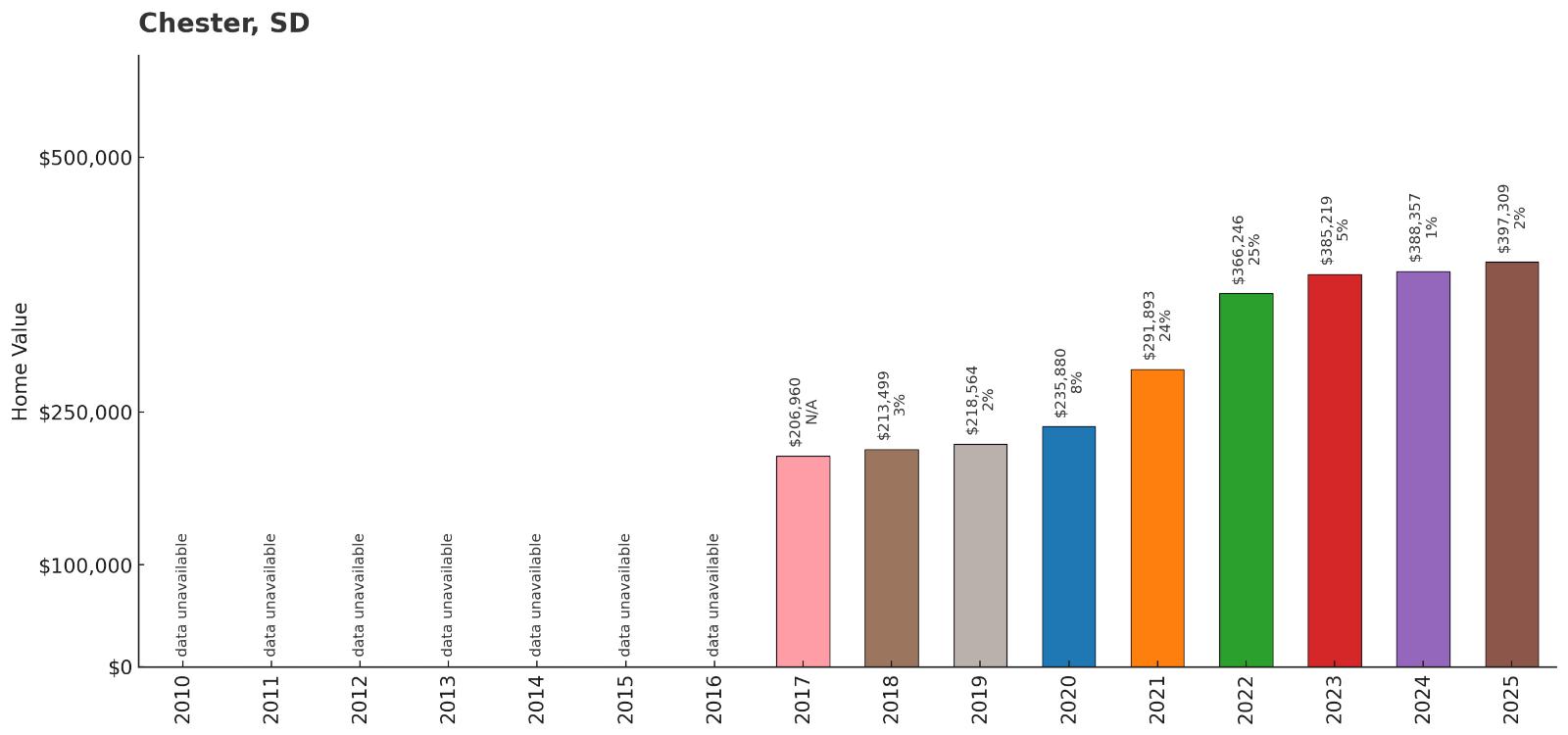
- 2010: N/A
- 2011: N/A
- 2012: N/A
- 2013: N/A
- 2014: N/A
- 2015: N/A
- 2016: N/A
- 2017: $206,960
- 2018: $213,499
- 2019: $218,564
- 2020: $235,880
- 2021: $291,893
- 2022: $366,246
- 2023: $385,219
- 2024: $388,357
- 2025: $397,309
Chester has shown impressive growth since 2017, nearly doubling to reach $397,309 in 2025. The most dramatic appreciation occurred during 2021-2022, when values surged over $74,000 in two years. Current prices reflect strong demand for rural Lake County properties and recreational opportunities.
Why Chester?
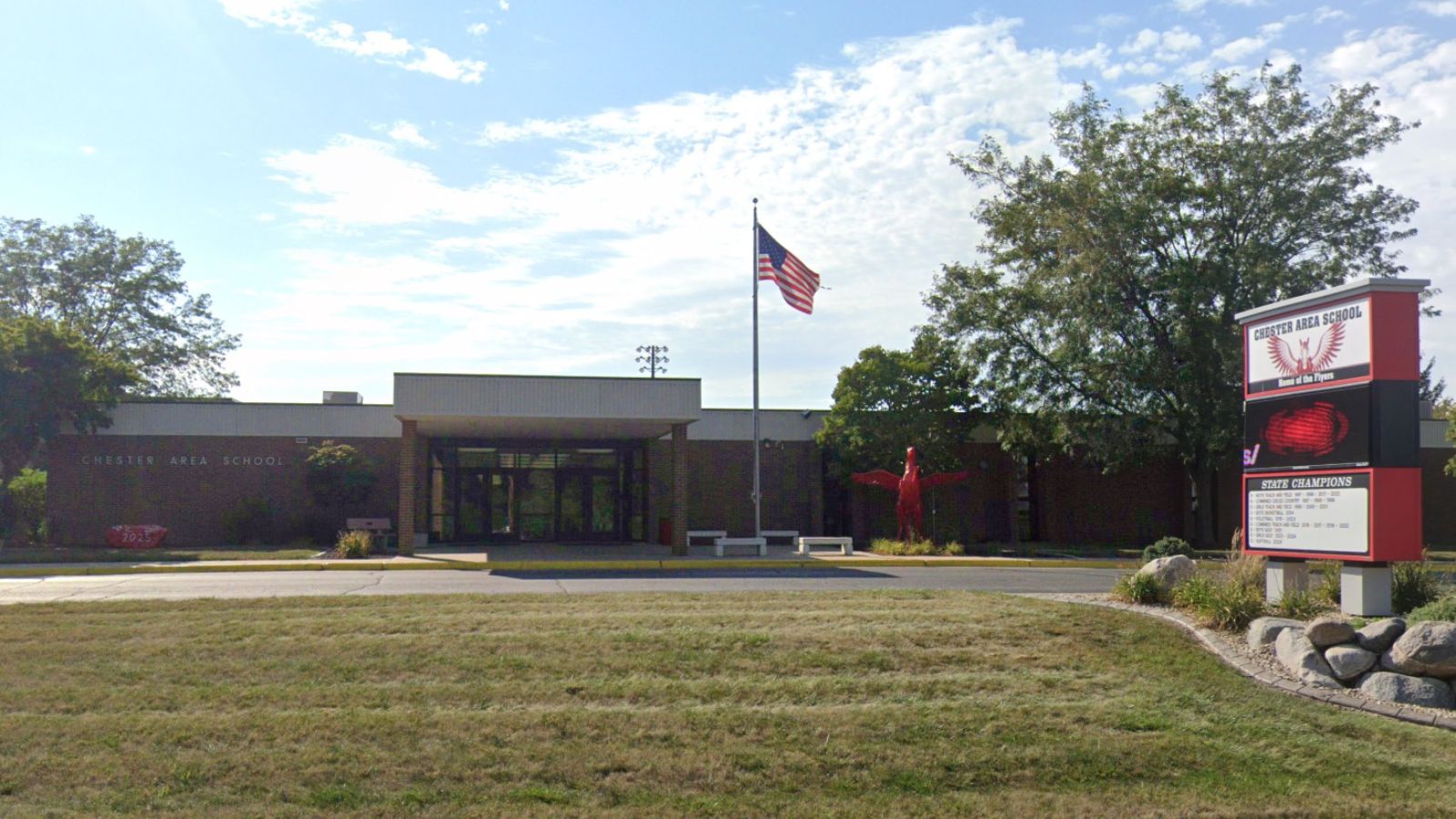
Why Are People Willing to Pay So Much to Live Here? What’s Special About It?
Chester appeals to buyers seeking small-town living in eastern South Dakota’s lake country, offering access to numerous recreational lakes and outdoor activities. The community provides a peaceful rural lifestyle while remaining within commuting distance of larger employment centers. Residents enjoy fishing, boating, and water sports on nearby Lake Madison and other area lakes.
The town offers affordable living compared to urban areas while maintaining essential services and community amenities. Chester’s location in Lake County provides four-season recreation and natural beauty that attracts both year-round residents and seasonal visitors. Many buyers appreciate the authentic small-town atmosphere and strong community connections.
How Chester Rose to Prominence
Chester was established in the 1880s as a railroad town serving agricultural communities in Lake County. The town developed around grain storage and shipping facilities that connected local farmers to regional markets. Early settlers were drawn by fertile farmland and access to natural lakes for water and recreation.
The community has maintained its agricultural base while developing recreational tourism tied to the area’s numerous lakes. Chester has benefited from increased interest in rural properties and recreational real estate. The town represents the enduring appeal of lake country living, where residents can enjoy both agricultural heritage and recreational opportunities.
3 Interesting Tidbits
1. Lake Access – Chester provides easy access to multiple recreational lakes, making it popular with fishing and boating enthusiasts.
2. Agricultural Heritage – The community remains connected to its farming roots while embracing recreational tourism opportunities.
3. Small Town Values – Chester maintains traditional small-town characteristics that appeal to those seeking authentic rural community experiences.
22. Eden – 63% Home Price Increase Since 2016
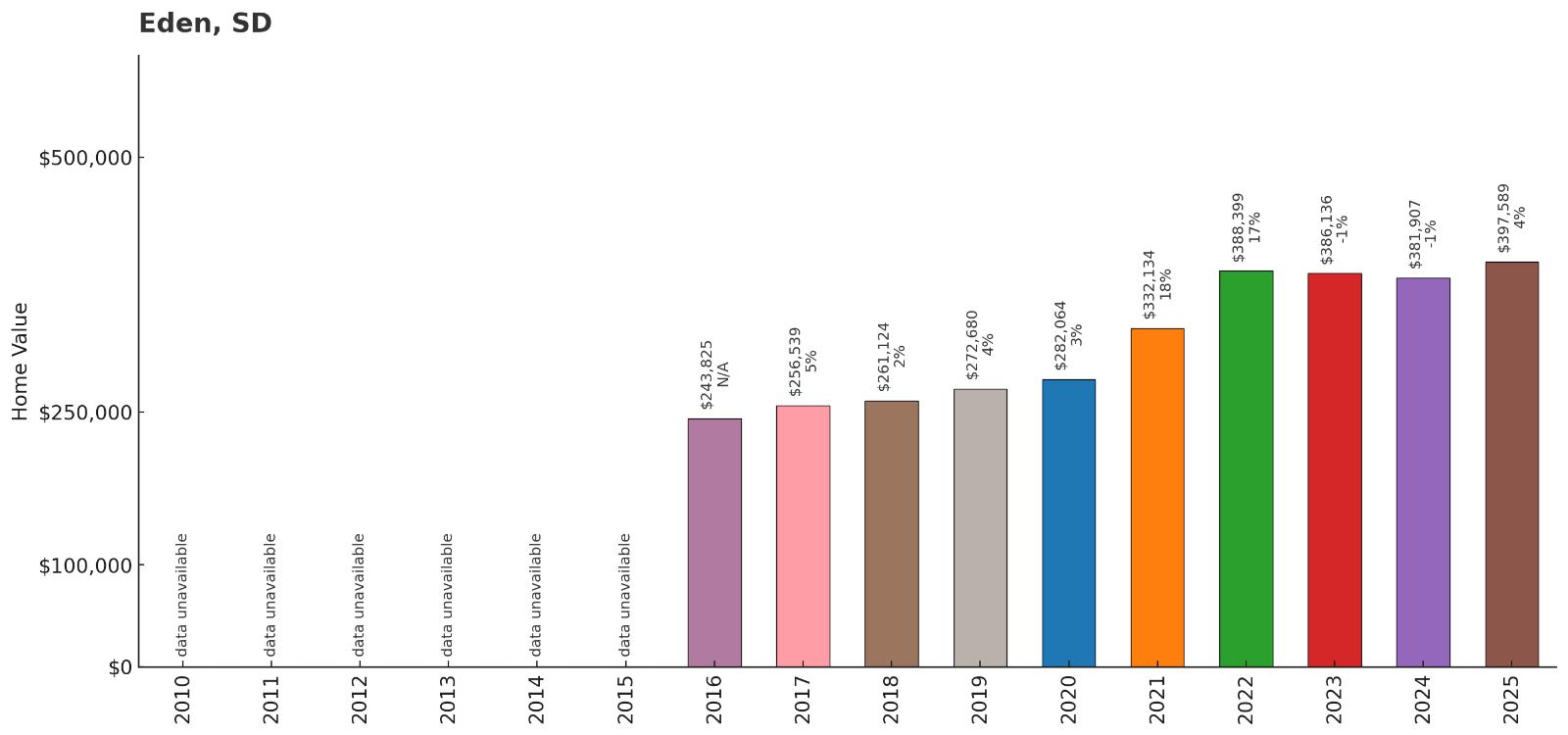
- 2010: N/A
- 2011: N/A
- 2012: N/A
- 2013: N/A
- 2014: N/A
- 2015: N/A
- 2016: $243,825
- 2017: $256,539
- 2018: $261,124
- 2019: $272,680
- 2020: $282,064
- 2021: $332,134
- 2022: $388,399
- 2023: $386,136
- 2024: $381,907
- 2025: $397,589
Eden has shown solid growth since 2016, reaching $397,589 in 2025 despite some volatility in recent years. The strongest appreciation occurred during 2021-2022, followed by slight corrections before recovering in 2025. Current values reflect demand for rural Marshall County properties and agricultural opportunities.
Why Eden?
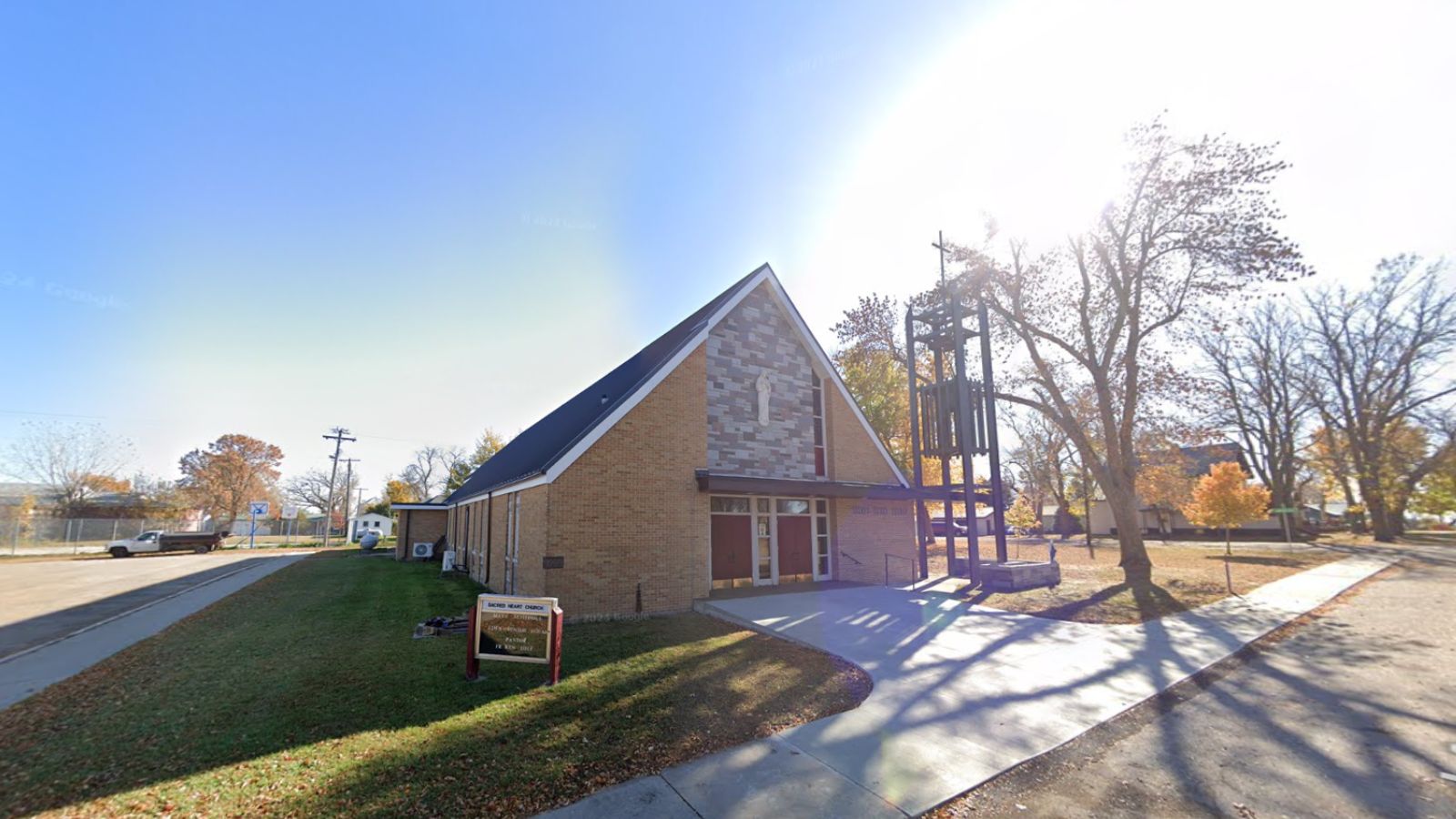
Why Are People Willing to Pay So Much to Live Here? What’s Special About It?
Eden attracts buyers interested in rural living in northeastern South Dakota’s agricultural region, offering larger properties and agricultural opportunities. The community provides peace and privacy while maintaining access to regional employment and services. Properties often include farmland or development potential that adds value beyond residential use.
The area appeals to those seeking authentic rural experiences, hunting opportunities, and agricultural ventures. Eden’s location in Marshall County provides access to glacial lakes and prairie recreation while remaining affordable compared to more developed areas. Limited housing supply creates premium pricing for available properties.
How Eden Rose to Prominence
Eden developed as a small agricultural community in Marshall County during the early settlement period. The town served local farmers with essential services and provided a gathering point for rural residents across the county. Early economic activity centered on grain storage, livestock handling, and agricultural supplies.
The community has adapted to changes in rural economics while maintaining its agricultural character. Eden represents the transformation occurring in small agricultural communities as buyers seek rural alternatives to urban living. The area has benefited from renewed interest in farming, rural lifestyles, and recreational property ownership.
3 Interesting Tidbits
1. Prairie Pothole Region – Eden sits in the Prairie Pothole Region, known for numerous small wetlands that support waterfowl and wildlife.
2. Agricultural Diversity – The area supports diverse farming operations including corn, soybeans, and cattle production.
3. Rural Authenticity – The community maintains traditional rural values and lifestyle that attract urban buyers seeking authentic agricultural experiences.
21. Hartford – 136% Home Price Increase Since 2010

- 2010: $169,146
- 2011: $165,772
- 2012: $171,130
- 2013: $182,369
- 2014: $190,714
- 2015: $199,136
- 2016: $212,066
- 2017: $232,109
- 2018: $244,140
- 2019: $266,087
- 2020: $277,043
- 2021: $330,895
- 2022: $377,236
- 2023: $385,718
- 2024: $393,635
- 2025: $399,855
Hartford has experienced remarkable growth since 2010, more than doubling to reach $399,855 in 2025. The community showed accelerating growth after 2017, with particularly strong gains during the 2021-2022 housing boom. Current values reflect Hartford’s appeal as a family-friendly community between Sioux Falls and the Minnesota border.
Why Hartford?
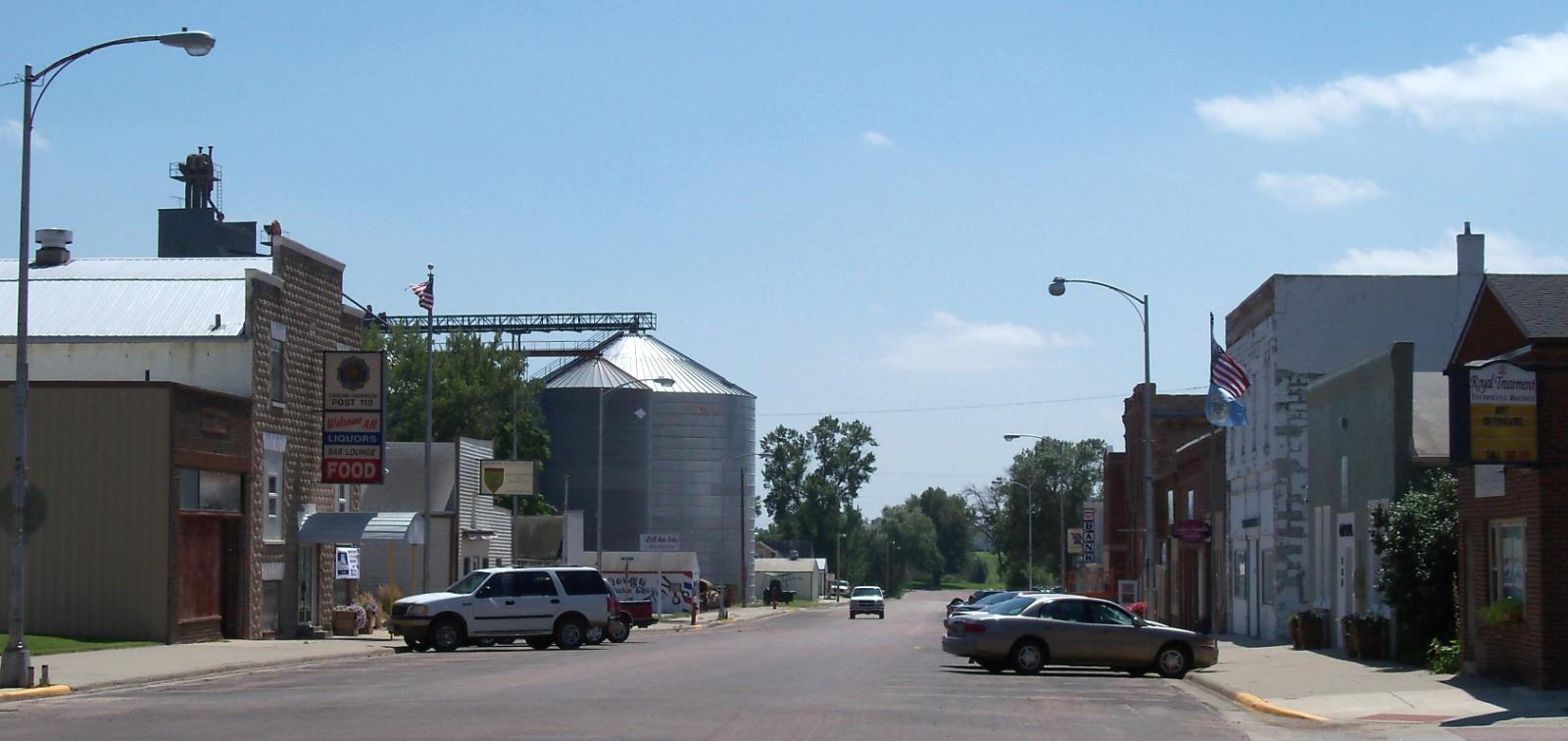
Why Are People Willing to Pay So Much to Live Here? What’s Special About It?
Hartford offers small-town charm with modern amenities, attracting families seeking affordable alternatives to urban living while maintaining access to regional employment. The community features excellent schools, safe neighborhoods, and a strong sense of community pride. Residents appreciate the balance of rural tranquility and suburban conveniences.
The town provides numerous recreational opportunities including parks, sports facilities, and annual community events that bring neighbors together. Hartford’s location in Minnehaha County offers easy access to Sioux Falls while maintaining lower housing costs and a more relaxed pace of life. Many families choose Hartford for its family-friendly atmosphere and educational opportunities.
How Hartford Rose to Prominence
Hartford was founded in 1879 as a railroad town serving agricultural communities in eastern Minnehaha County. The town developed around grain elevators and shipping facilities that connected local farmers to regional markets. Early settlers were primarily Scandinavian and German immigrants who established farming operations across the fertile prairie.
The community grew steadily throughout the 20th century as agricultural technology advanced and rural services consolidated. Hartford’s proximity to Sioux Falls became increasingly valuable as commuting patterns evolved and suburban development expanded. The town has successfully managed growth while preserving its small-town character and community-oriented lifestyle.
3 Interesting Tidbits
1. Annual Beach Bash – Hartford hosts a popular summer festival that includes live music, food vendors, and family activities that draw visitors from across the region.
2. School Pride – The West Central School District serves Hartford and surrounding communities, consistently ranking among South Dakota’s top performing rural districts.
3. Agricultural Heritage – The town maintains its agricultural connections while embracing modern residential development and family amenities.
20. Astoria – 69% Home Price Increase Since 2016
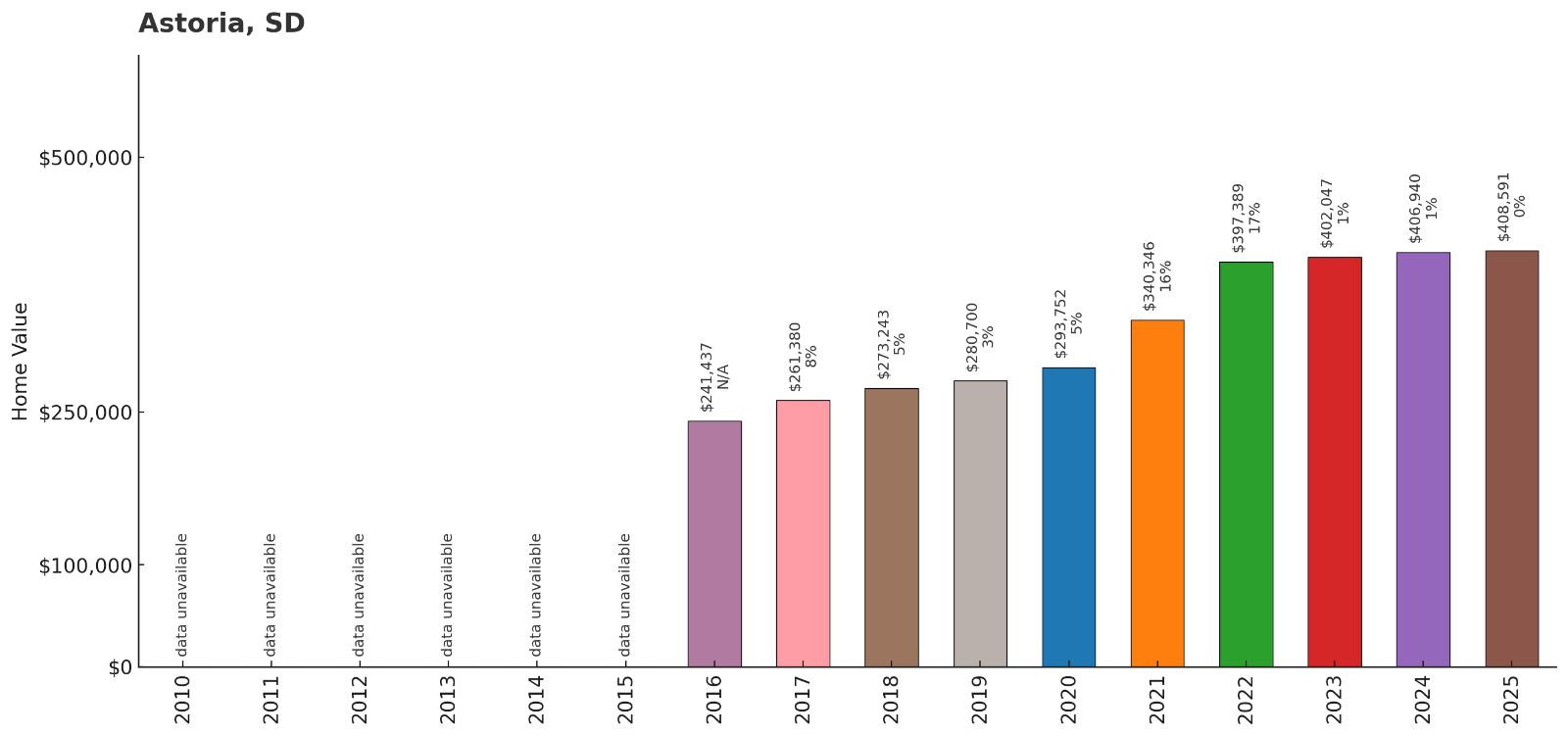
- 2010: N/A
- 2011: N/A
- 2012: N/A
- 2013: N/A
- 2014: N/A
- 2015: N/A
- 2016: $241,437
- 2017: $261,380
- 2018: $273,243
- 2019: $280,700
- 2020: $293,752
- 2021: $340,346
- 2022: $397,389
- 2023: $402,047
- 2024: $406,940
- 2025: $408,591
Astoria has shown consistent growth since 2016, reaching $408,591 in 2025 with particularly strong gains during 2021-2022. The community continues to appreciate steadily, reflecting demand for rural Deuel County properties. Current values demonstrate the ongoing appeal of small-town living in eastern South Dakota.
Why Astoria?
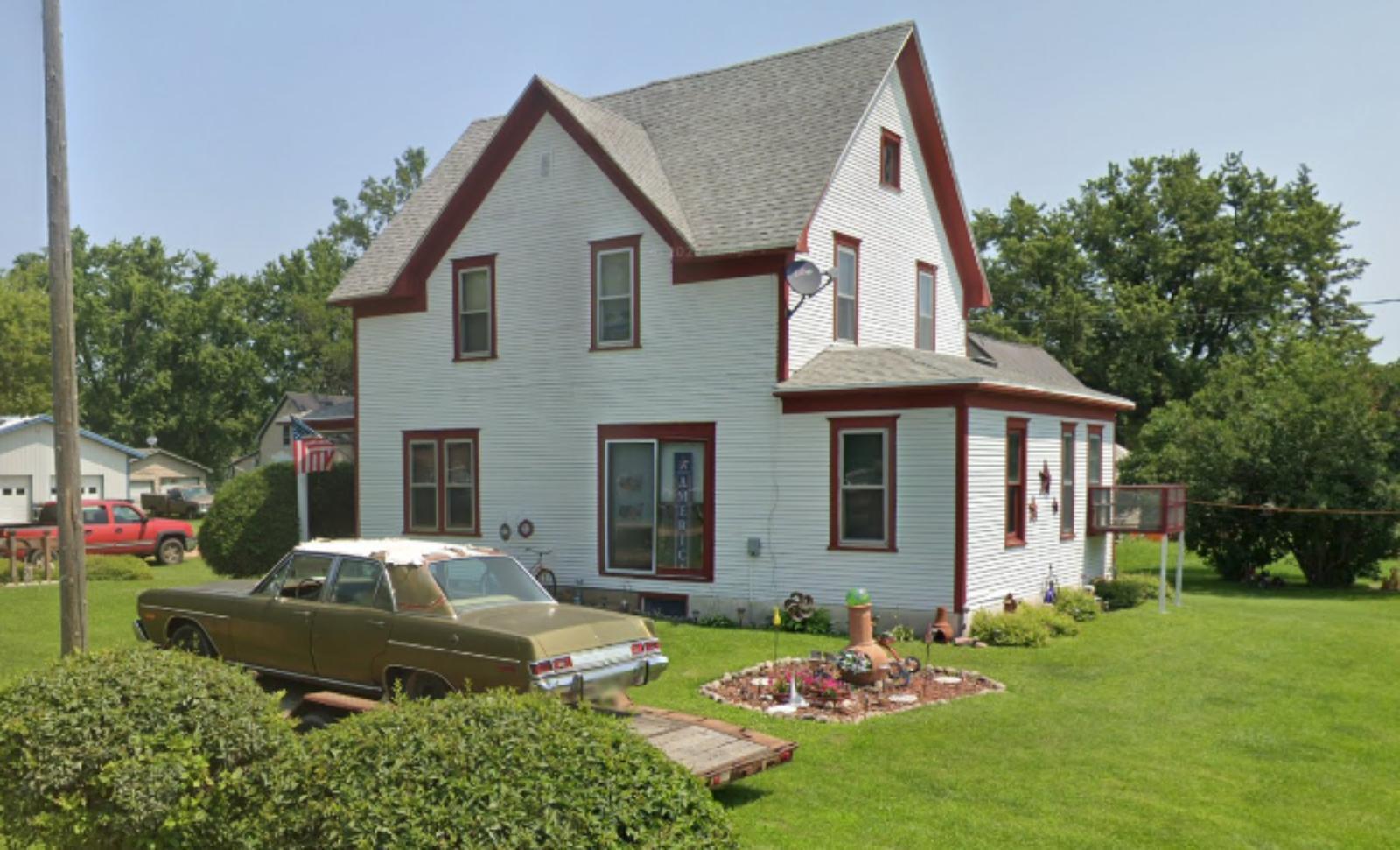
Why Are People Willing to Pay So Much to Live Here? What’s Special About It?
Astoria appeals to buyers seeking authentic small-town living in eastern South Dakota’s agricultural region, offering peace and tranquility away from urban development pressures. The community provides larger lots, rural character, and access to outdoor recreation including hunting and fishing. Residents value the strong community connections and traditional rural lifestyle.
The area offers agricultural opportunities and recreational land use while maintaining affordability compared to more developed regions. Astoria’s location in Deuel County provides access to glacial lakes and prairie recreation. Limited housing inventory creates premium pricing for available properties in this quiet rural setting.
How Astoria Rose to Prominence
Astoria was established in the late 1800s as a small agricultural community serving farmers in Deuel County. The town developed essential services for rural residents including grain storage, general merchandise, and agricultural supplies. Early settlers were attracted by fertile farmland and opportunities for agricultural development.
The community has remained true to its agricultural heritage while adapting to modern rural economics and lifestyle preferences. Astoria represents the enduring appeal of small agricultural communities where residents maintain connections to the land and traditional rural values. Recent interest in rural properties has increased demand for the limited housing available in the area.
3 Interesting Tidbits
1. Agricultural Hub – Astoria continues to serve as a service center for surrounding farms and agricultural operations in Deuel County.
2. Prairie Heritage – The community maintains its connection to the prairie landscape and agricultural traditions that shaped the region.
3. Rural Retreat – Astoria attracts buyers seeking peaceful rural living and escape from urban congestion and development pressures.
19. Whitewood – 106% Home Price Increase Since 2012

- 2010: N/A
- 2011: N/A
- 2012: $200,041
- 2013: $209,468
- 2014: $209,998
- 2015: $217,130
- 2016: $223,998
- 2017: $233,904
- 2018: $247,401
- 2019: $251,676
- 2020: $270,851
- 2021: $332,522
- 2022: $398,548
- 2023: $398,146
- 2024: $406,999
- 2025: $412,995
Whitewood has more than doubled since 2012, reaching $412,995 in 2025 after showing steady growth throughout the period. The strongest appreciation occurred during 2021-2022, when values jumped nearly $66,000 in two years. Current prices reflect the growing recognition of smaller Black Hills communities as desirable places to live.
Why Whitewood?
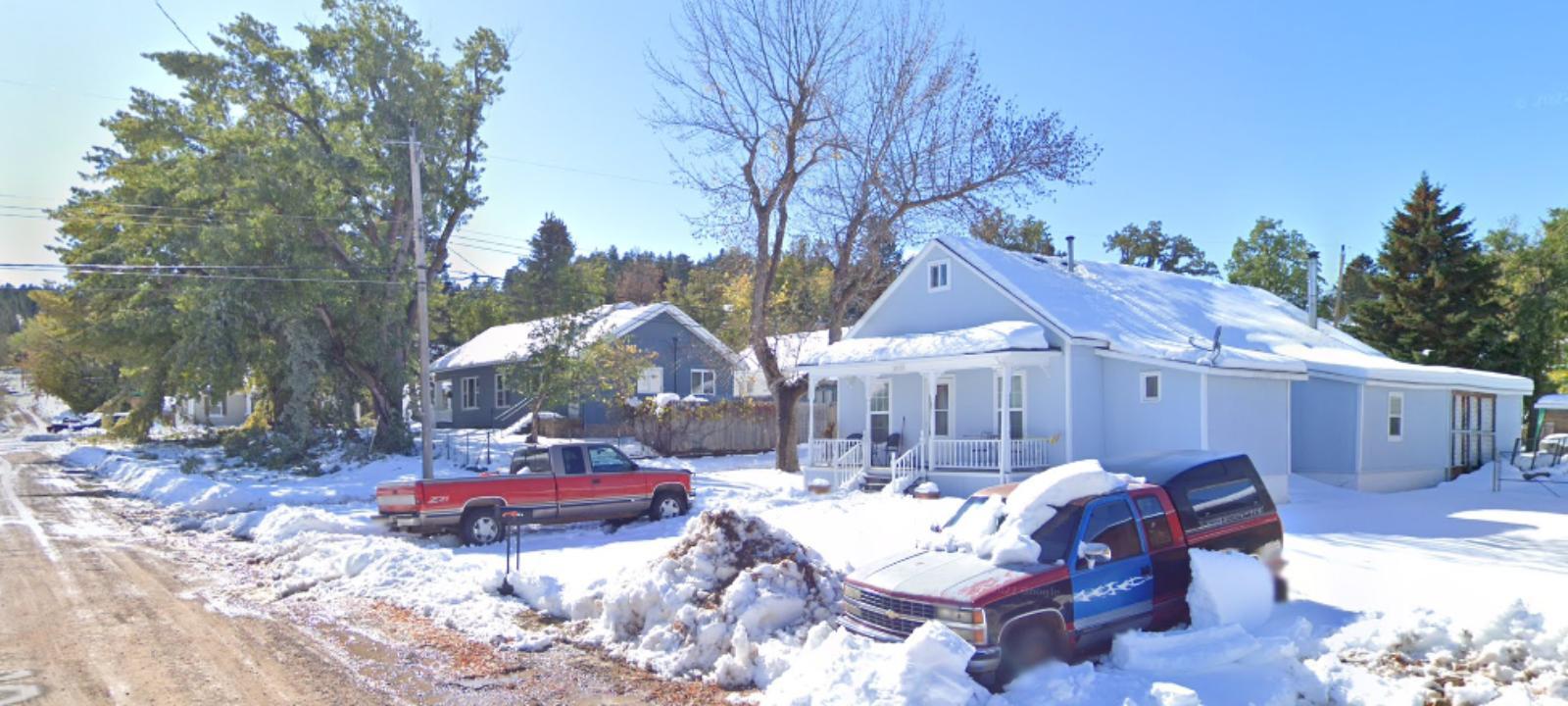
Why Are People Willing to Pay So Much to Live Here? What’s Special About It?
Whitewood offers authentic Black Hills living with access to outdoor recreation, historic attractions, and mountain lifestyle at more affordable prices than larger towns. Residents enjoy proximity to Deadwood, Spearfish Canyon, and numerous recreational opportunities while maintaining small-town character. The community provides a gateway to Black Hills adventure with lower housing costs than tourist-focused areas.
The town features mountain scenery, historic charm, and access to hiking, fishing, and winter sports throughout the region. Whitewood appeals to those seeking four-season mountain living with employment opportunities in tourism, mining, and regional services. Many residents appreciate the authentic Western atmosphere and connection to Black Hills heritage.
How Whitewood Rose to Prominence
Whitewood was founded in the late 1800s as a railroad and cattle shipping point during the Black Hills development period. The town served as a transportation hub connecting the northern Black Hills to regional markets via the railroad system. Early economic activity included cattle ranching, mining support services, and railroad operations.
The community adapted to changes in transportation and mining while maintaining its position as a service center for the northern Black Hills region. Whitewood has benefited from increased recognition of smaller Black Hills communities as desirable places to live, combining recreational access with community amenities and reasonable proximity to employment centers.
3 Interesting Tidbits
1. Railroad Heritage – Whitewood’s historic railroad depot reflects its important role in Black Hills transportation and cattle shipping.
2. Canyon Access – The town provides easy access to spectacular Spearfish Canyon, one of the Black Hills’ most scenic destinations.
3. Mining History – The area’s mining heritage connects to the broader Black Hills gold rush and development period of the late 1800s.
18. New Underwood – 128% Home Price Increase Since 2010
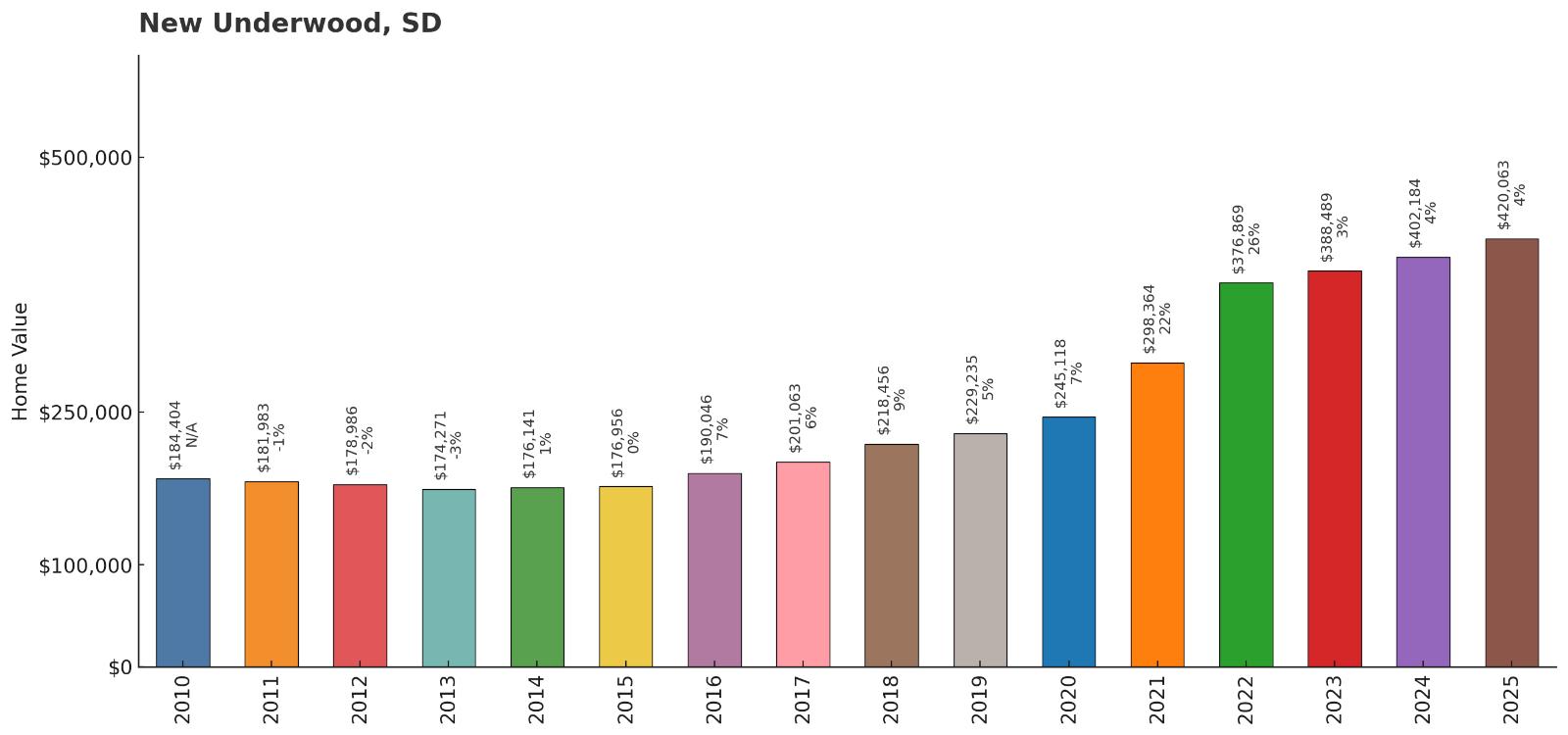
- 2010: $184,404
- 2011: $181,983
- 2012: $178,986
- 2013: $174,271
- 2014: $176,141
- 2015: $176,956
- 2016: $190,046
- 2017: $201,063
- 2018: $218,456
- 2019: $229,235
- 2020: $245,118
- 2021: $298,364
- 2022: $376,869
- 2023: $388,489
- 2024: $402,184
- 2025: $420,063
New Underwood has more than doubled since 2010, reaching $420,063 in 2025 after showing remarkable acceleration from 2020 onward. The strongest growth occurred during 2021-2022, when values surged over $78,000 in two years. Current prices reflect the town’s appeal as an affordable alternative near the Black Hills region.
Why New Underwood?

Why Are People Willing to Pay So Much to Live Here? What’s Special About It?
New Underwood offers rural tranquility with easy access to Black Hills recreation and Rapid City employment via Interstate 90. Residents enjoy small-town living with larger lots and affordable housing while maintaining convenient access to urban amenities and mountain recreation. The community provides a perfect balance of rural lifestyle and modern conveniences.
The town appeals to families seeking space, safety, and affordability while remaining within commuting distance of regional employment centers. New Underwood offers authentic Western character with modern infrastructure and services. Many residents appreciate the community’s growth potential while maintaining its small-town character and values.
How New Underwood Rose to Prominence
New Underwood was established in the early 1900s as a railroad town serving agricultural and ranching communities in Pennington County. The town developed around grain elevators and livestock shipping facilities that connected local producers to regional markets. The community served as a service center for ranchers and farmers across the area.
The town’s strategic location along Interstate 90 became increasingly valuable as commuting patterns evolved and people sought affordable alternatives to urban living. New Underwood has successfully attracted new residents while maintaining its agricultural heritage and small-town character. The community represents one of western South Dakota’s fastest-growing residential markets.
3 Interesting Tidbits
1. Interstate Access – New Underwood’s location along Interstate 90 provides excellent transportation access to both the Black Hills and eastern South Dakota.
2. Rural-Urban Balance – The community successfully combines rural lifestyle benefits with convenient access to urban employment and services.
3. Growth Management – New Underwood has experienced rapid residential growth while maintaining its agricultural heritage and community character.
17. North Sioux City – 72% Home Price Increase Since 2010
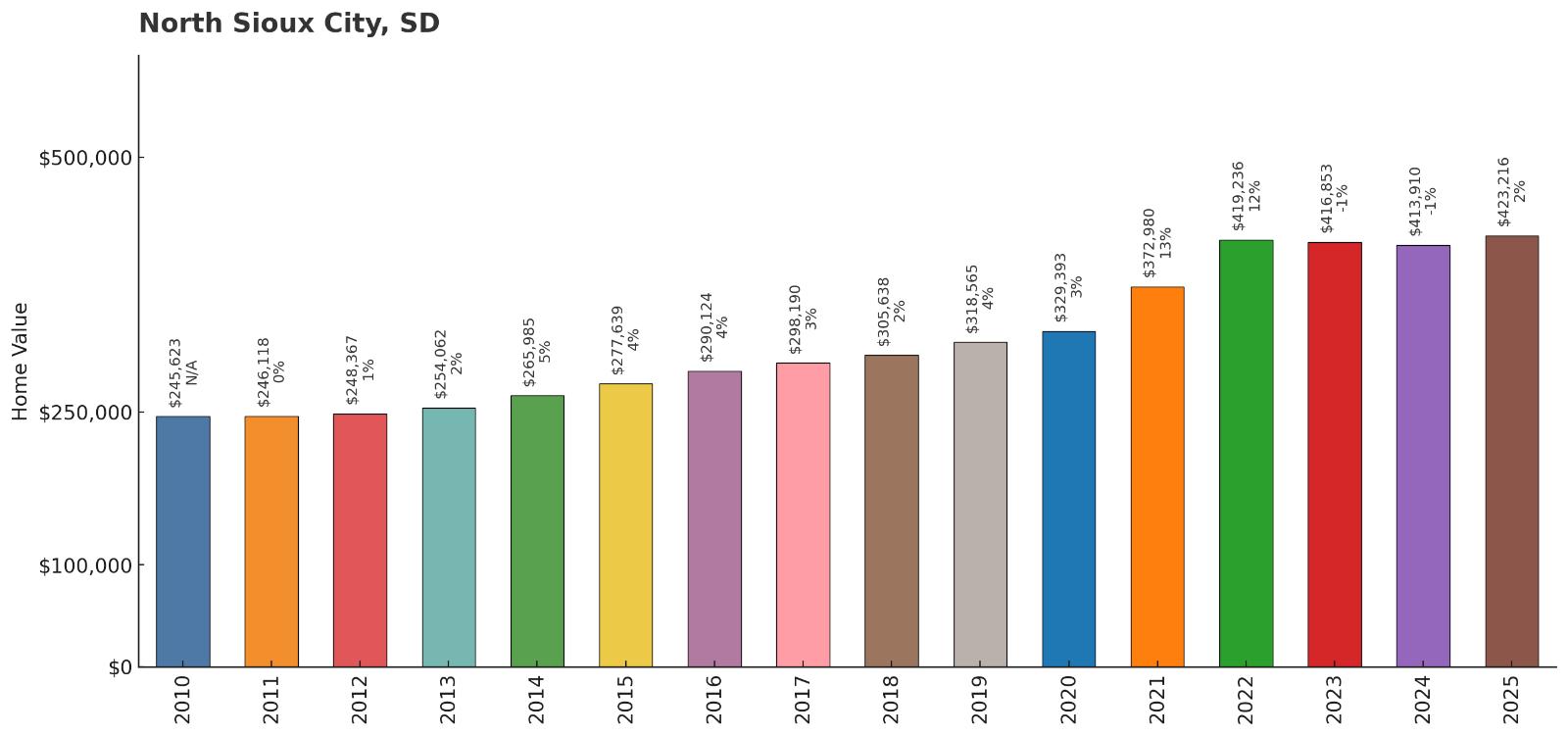
- 2010: $245,623
- 2011: $246,118
- 2012: $248,367
- 2013: $254,062
- 2014: $265,985
- 2015: $277,639
- 2016: $290,124
- 2017: $298,190
- 2018: $305,638
- 2019: $318,565
- 2020: $329,393
- 2021: $372,980
- 2022: $419,236
- 2023: $416,853
- 2024: $413,910
- 2025: $423,216
North Sioux City has shown steady growth since 2010, reaching $423,216 in 2025 with consistent annual appreciation throughout the period. The strongest gains occurred during 2021-2022, followed by slight corrections before recovering in 2025. Current values reflect the community’s unique position in the tri-state metropolitan area.
Why North Sioux City?
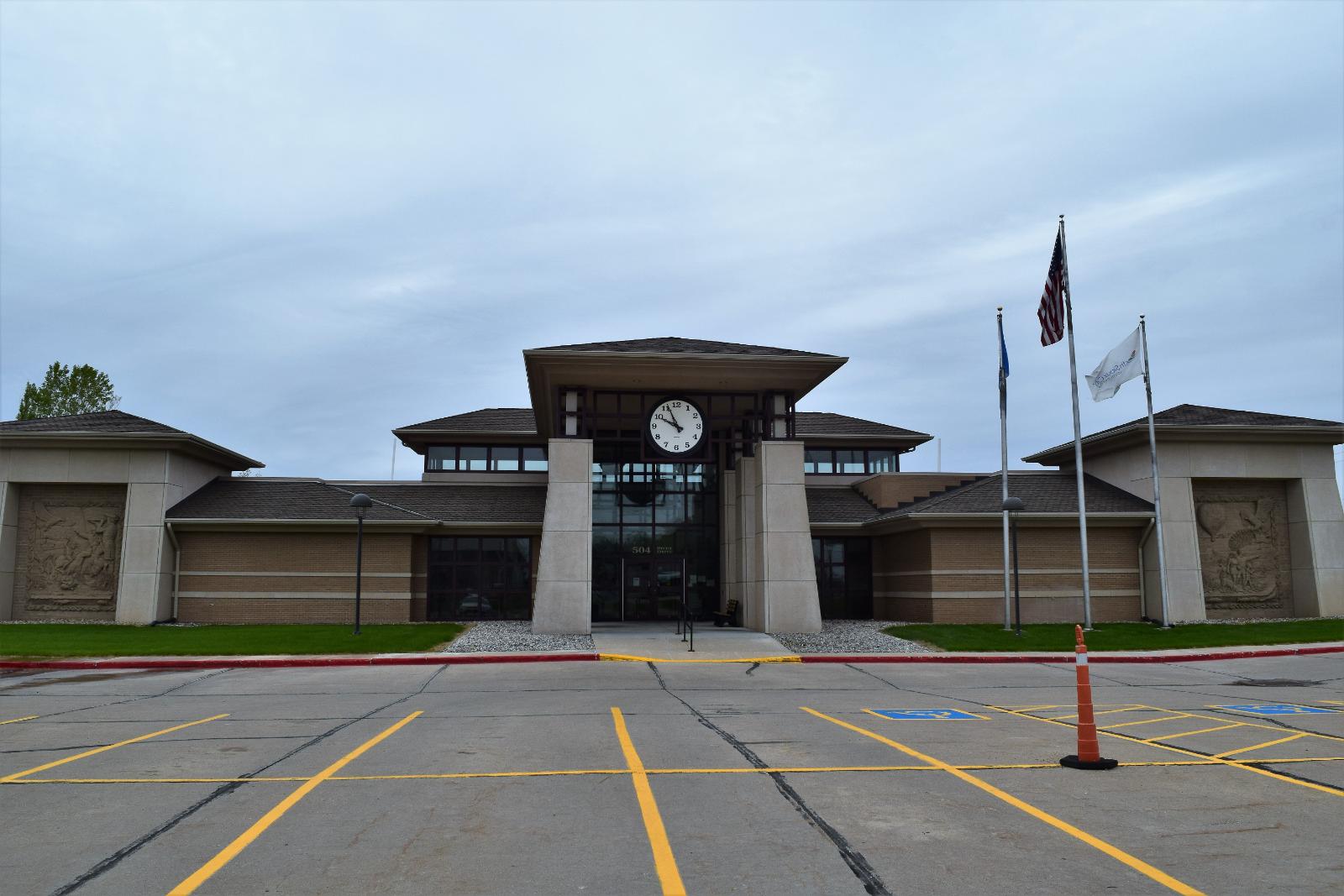
Why Are People Willing to Pay So Much to Live Here? What’s Special About It?
North Sioux City offers unique tri-state metropolitan access, allowing residents to work in South Dakota, Iowa, or Nebraska while enjoying South Dakota’s tax advantages. The community provides suburban amenities with Missouri River recreation and proximity to multiple employment markets. Residents benefit from competitive housing costs compared to larger metropolitan areas.
The town features modern infrastructure, quality schools, and recreational facilities while maintaining easy access to Sioux City’s urban amenities. North Sioux City appeals to professionals and families seeking metropolitan access without metropolitan housing costs. The community offers diverse employment opportunities across three states from a single residential location.
How North Sioux City Rose to Prominence
North Sioux City developed in the mid-20th century as a planned community taking advantage of its unique tri-state location near the confluence of the Big Sioux and Missouri Rivers. The town was designed to capture suburban development while providing access to the Sioux City metropolitan area across state lines.
The community grew rapidly as residents discovered the benefits of living in South Dakota while working in the broader tri-state region. North Sioux City successfully attracted families and professionals seeking suburban living with metropolitan access and South Dakota’s favorable tax environment. The town has become a model for strategic suburban development.
3 Interesting Tidbits
1. Tri-State Access – Residents can easily commute to employment opportunities in South Dakota, Iowa, and Nebraska from a single location.
2. Tax Advantages – Living in South Dakota provides significant tax benefits for residents working in neighboring states with higher tax rates.
3. River Recreation – The community offers access to Missouri River recreation including boating, fishing, and water sports.
16. Summerset – 86% Home Price Increase Since 2016
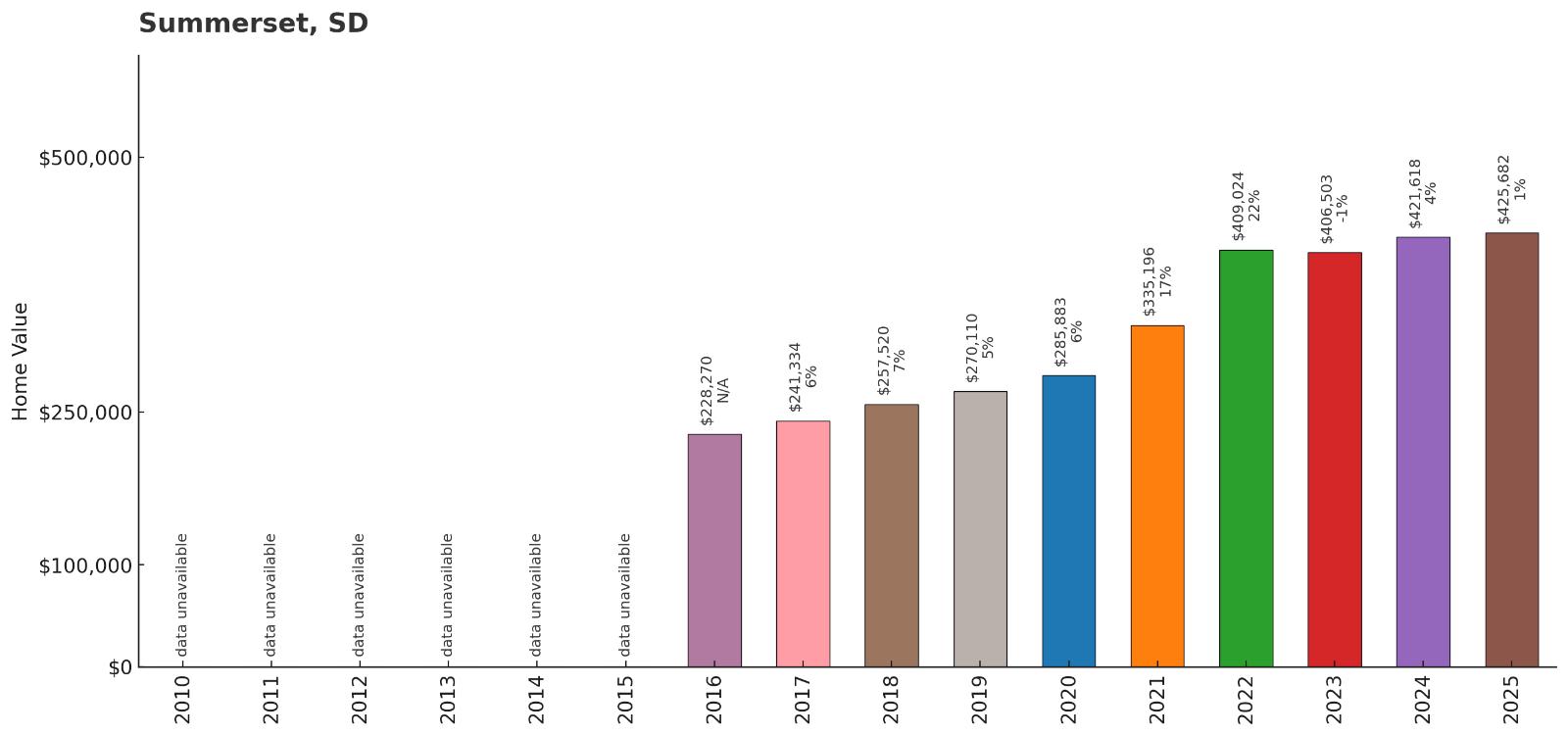
- 2010: N/A
- 2011: N/A
- 2012: N/A
- 2013: N/A
- 2014: N/A
- 2015: N/A
- 2016: $228,270
- 2017: $241,334
- 2018: $257,520
- 2019: $270,110
- 2020: $285,883
- 2021: $335,196
- 2022: $409,024
- 2023: $406,503
- 2024: $421,618
- 2025: $425,682
Summerset has shown strong growth since 2016, reaching $425,682 in 2025 with particularly impressive gains during the 2021-2022 period. The community continues to appreciate steadily, reflecting its appeal as a newer residential development near the Black Hills. Current values demonstrate successful suburban planning and market demand.
Why Summerset?

Why Are People Willing to Pay So Much to Live Here? What’s Special About It?
Summerset offers modern suburban living with Black Hills access, featuring newer homes, planned neighborhoods, and family-friendly amenities. The community provides contemporary housing options with excellent schools, parks, and recreational facilities. Residents enjoy suburban conveniences while maintaining easy access to Rapid City employment and Black Hills recreation.
The town was designed with modern suburban planning principles, creating attractive neighborhoods with amenities and green spaces. Summerset appeals to families and professionals seeking new construction homes and modern community features. The community successfully combines suburban lifestyle with proximity to natural attractions and outdoor recreation.
How Summerset Rose to Prominence
Summerset was developed in the early 2000s as a planned suburban community designed to serve the growing Rapid City metropolitan area. The development took advantage of available land between Rapid City and the Black Hills, creating a modern residential community with contemporary amenities and infrastructure.
The community was planned to attract families seeking new homes with modern features while maintaining access to regional employment and recreation. Summerset has successfully grown from an undeveloped area to a thriving suburban community that balances residential development with recreational amenities and natural preservation.
3 Interesting Tidbits
1. Planned Development – Summerset was designed from the ground up as a modern suburban community with comprehensive planning and amenities.
2. Black Hills Gateway – The community provides convenient access to Black Hills recreation while offering suburban amenities and services.
3. Modern Infrastructure – Summerset features contemporary utilities, broadband access, and infrastructure designed for modern residential needs.
15. Gary – 64% Home Price Increase Since 2018

- 2010: N/A
- 2011: N/A
- 2012: N/A
- 2013: N/A
- 2014: N/A
- 2015: N/A
- 2016: N/A
- 2017: N/A
- 2018: $262,359
- 2019: $275,542
- 2020: $290,626
- 2021: $354,148
- 2022: $423,118
- 2023: $409,023
- 2024: $420,141
- 2025: $431,557
Gary has shown impressive growth since 2018, reaching $431,557 in 2025 with particularly strong gains during 2021-2022. The community experienced explosive appreciation during the pandemic housing boom, followed by stabilization and continued growth. Current values reflect strong demand in this eastern South Dakota rural market.
Why Gary?
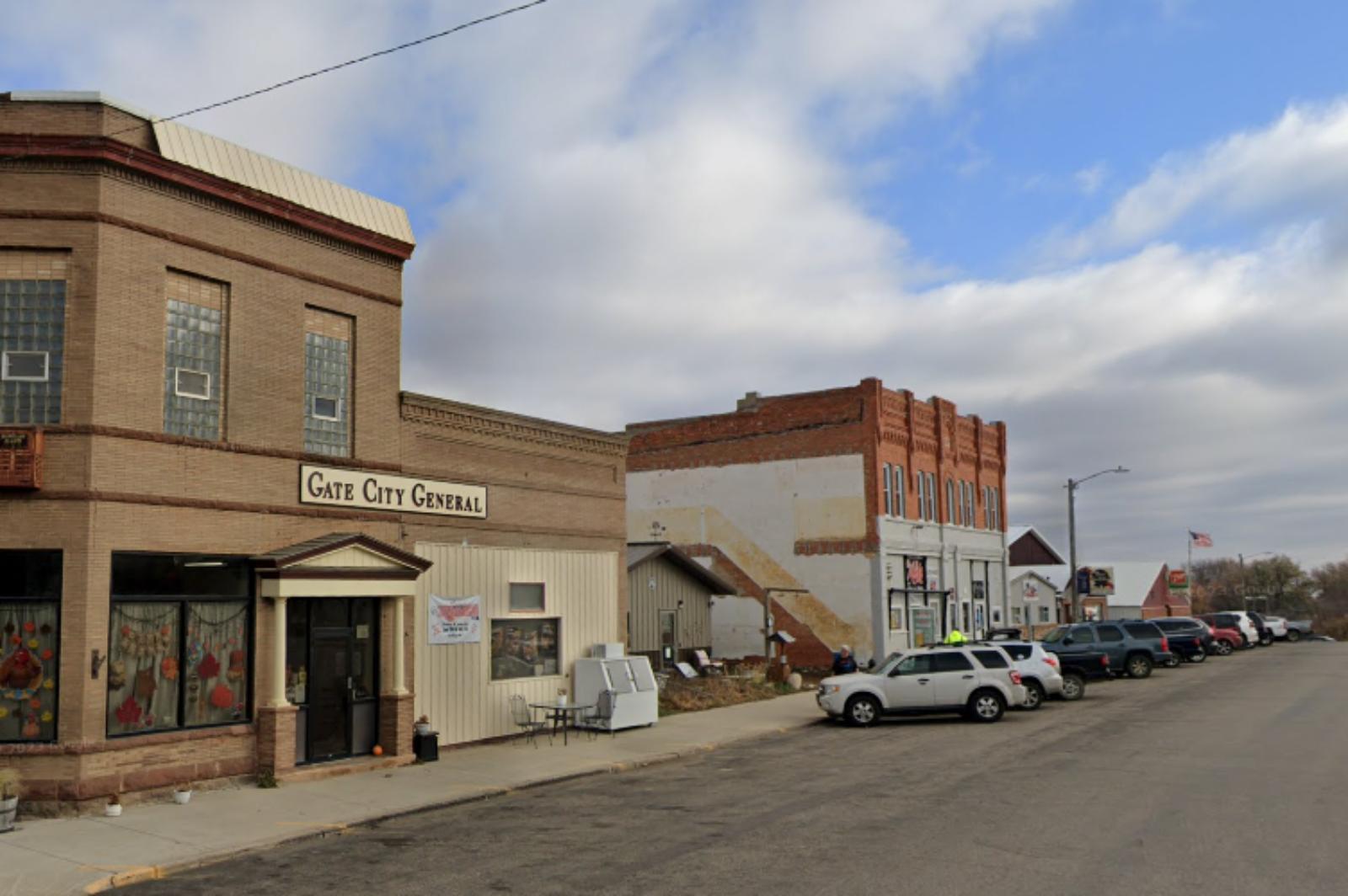
Why Are People Willing to Pay So Much to Live Here? What’s Special About It?
Gary attracts buyers seeking authentic rural living in eastern South Dakota’s agricultural region, offering peace, privacy, and larger properties than urban areas. The community provides agricultural opportunities and recreational land use while maintaining affordability compared to metropolitan markets. Residents value the traditional rural lifestyle and strong community connections.
The area offers hunting, fishing, and outdoor recreation in Deuel County’s prairie and wetland landscape. Gary appeals to those interested in farming, agricultural investment, or rural retreat properties. Limited housing inventory creates premium pricing for available properties in this quiet agricultural setting.
How Gary Rose to Prominence
Gary was established as a small agricultural community in Deuel County during the homestead era of the late 1800s. The town developed essential services for local farmers including grain storage, general supplies, and agricultural equipment. Early settlers were primarily European immigrants who established farming operations across the fertile prairie.
The community has remained connected to its agricultural heritage while adapting to modern rural economics and lifestyle preferences. Gary represents the transformation occurring in small agricultural towns as buyers seek rural alternatives to urban living. Recent interest in rural properties and agricultural opportunities has increased demand for the limited housing available.
3 Interesting Tidbits
1. Prairie Wetlands – Gary sits in the Prairie Pothole Region, known for numerous small wetlands that support waterfowl and wildlife habitat.
2. Agricultural Economy – The community remains closely connected to corn and soybean farming operations that dominate the local economy.
3. Rural Authenticity – Gary maintains traditional rural values and lifestyle that attract buyers seeking authentic agricultural community experiences.
14. Chancellor – 72% Home Price Increase Since 2019
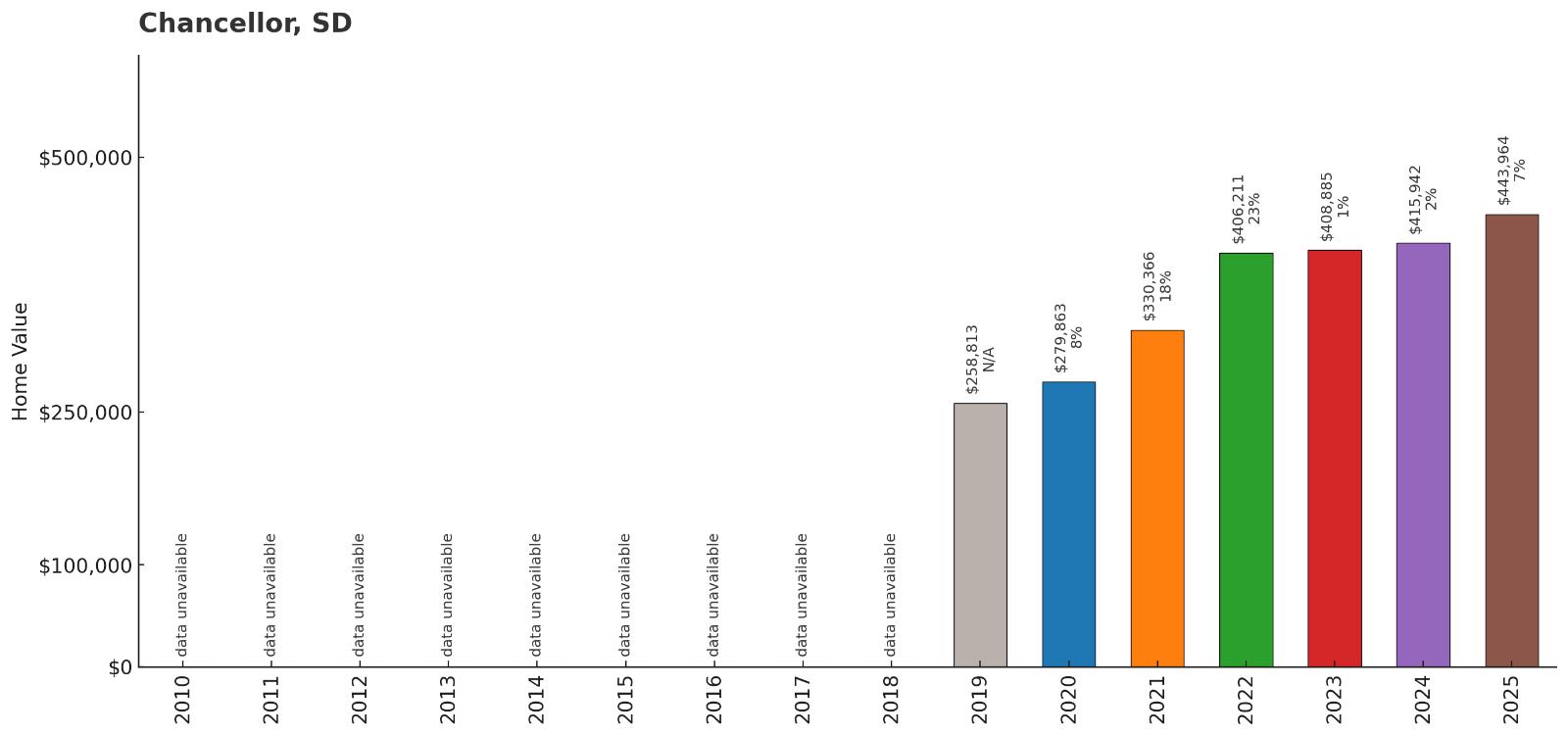
- 2010: N/A
- 2011: N/A
- 2012: N/A
- 2013: N/A
- 2014: N/A
- 2015: N/A
- 2016: N/A
- 2017: N/A
- 2018: N/A
- 2019: $258,813
- 2020: $279,863
- 2021: $330,366
- 2022: $406,211
- 2023: $408,885
- 2024: $415,942
- 2025: $443,964
Chancellor has experienced remarkable growth since 2019, reaching $443,964 in 2025 with the strongest gains occurring during 2021-2022. The community showed explosive appreciation during the pandemic housing boom and continues to grow steadily. Current values reflect Chancellor’s position as a desirable commuter community southwest of Sioux Falls.
Why Chancellor?
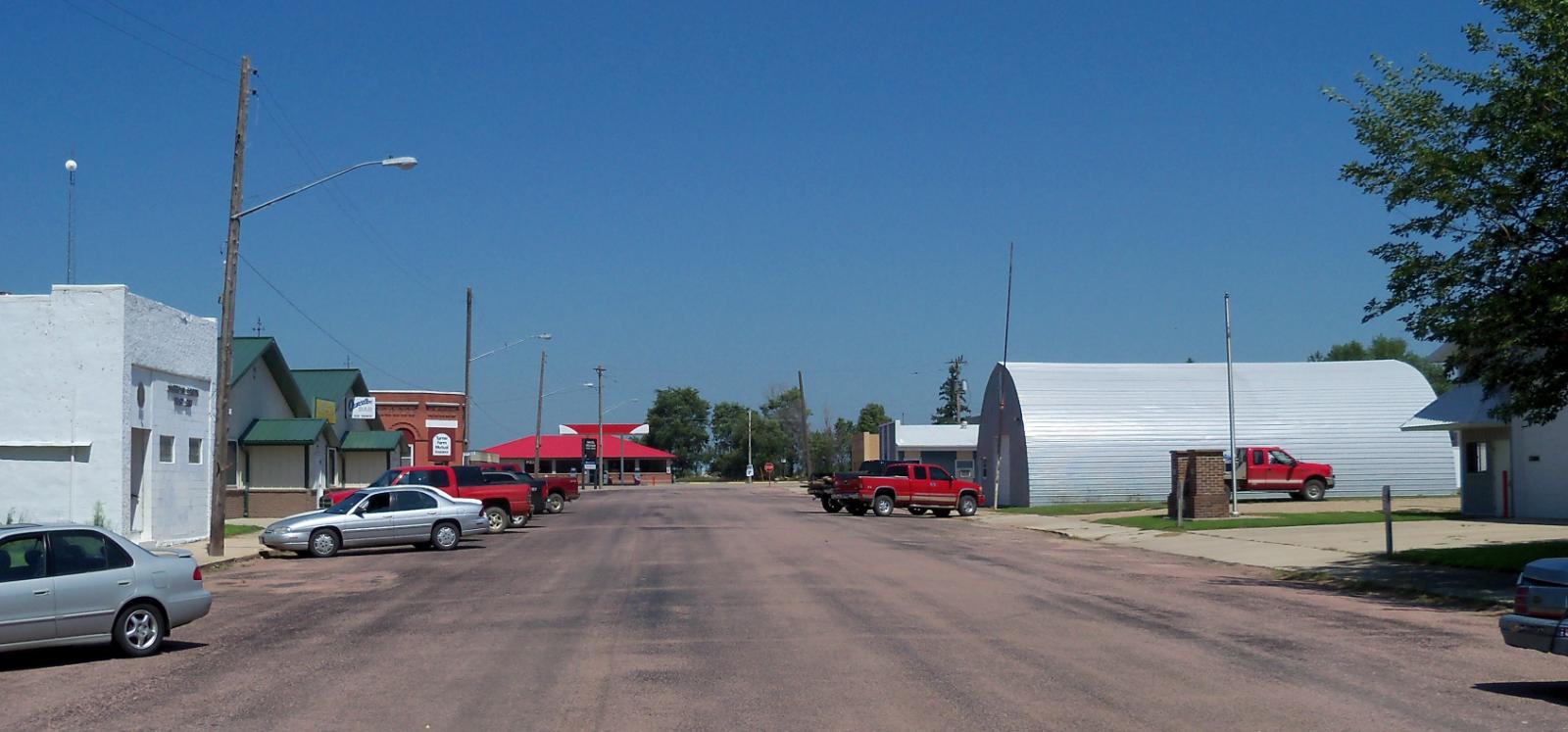
Why Are People Willing to Pay So Much to Live Here? What’s Special About It?
Chancellor offers rural tranquility with convenient access to Sioux Falls employment, attracting families seeking space, affordability, and small-town values. The community provides larger lots, newer housing developments, and agricultural heritage while remaining within commuting distance of the state’s largest city. Residents enjoy peaceful rural living without sacrificing urban employment opportunities.
The town features limited development pressure, ensuring properties maintain their rural character and privacy. Chancellor appeals to those seeking authentic rural lifestyle with modern conveniences and educational opportunities. Many buyers appreciate the community’s agricultural connections and traditional rural values combined with proximity to metropolitan amenities.
How Chancellor Rose to Prominence
Chancellor was established as a small agricultural community in Turner County during the late 1800s homestead period. The town developed around grain storage and shipping facilities that served local farmers throughout the county. Early settlers were primarily European immigrants who established farming operations across the fertile prairie landscape.
The community’s transformation accelerated during the 2000s as Sioux Falls expanded and created demand for rural residential alternatives. Chancellor’s location provided the perfect balance of rural lifestyle and urban access, attracting families seeking space and affordability. The town has carefully managed growth while preserving its agricultural heritage and community character.
3 Interesting Tidbits
1. Commuter Appeal – Chancellor provides rural living within 20 minutes of Sioux Falls, making it popular with professionals seeking space and affordability.
2. Agricultural Heritage – The community maintains strong connections to farming and agricultural traditions while embracing residential development.
3. Growth Management – Chancellor has experienced rapid appreciation while maintaining its rural character and small-town atmosphere.
13. Deadwood – 128% Home Price Increase Since 2012
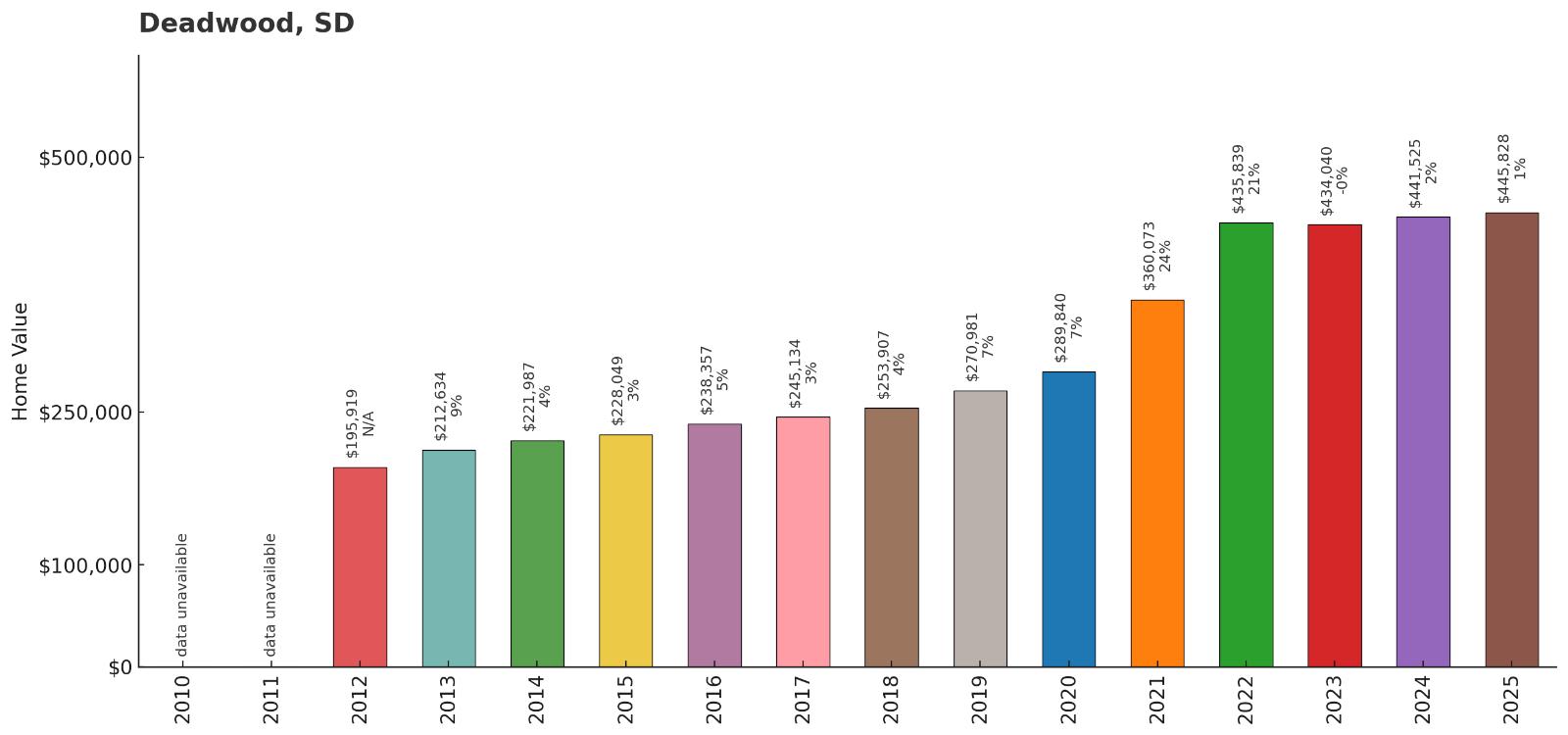
- 2010: N/A
- 2011: N/A
- 2012: $195,919
- 2013: $212,634
- 2014: $221,987
- 2015: $228,049
- 2016: $238,357
- 2017: $245,134
- 2018: $253,907
- 2019: $270,981
- 2020: $289,840
- 2021: $360,073
- 2022: $435,839
- 2023: $434,040
- 2024: $441,525
- 2025: $445,828
Deadwood has more than doubled since 2012, reaching $445,828 in 2025 with consistent growth throughout the period. The strongest appreciation occurred during 2021-2022, when values surged over $75,000 in two years. Current prices reflect the town’s unique position as both a historic destination and premium Black Hills real estate market.
Why Deadwood?
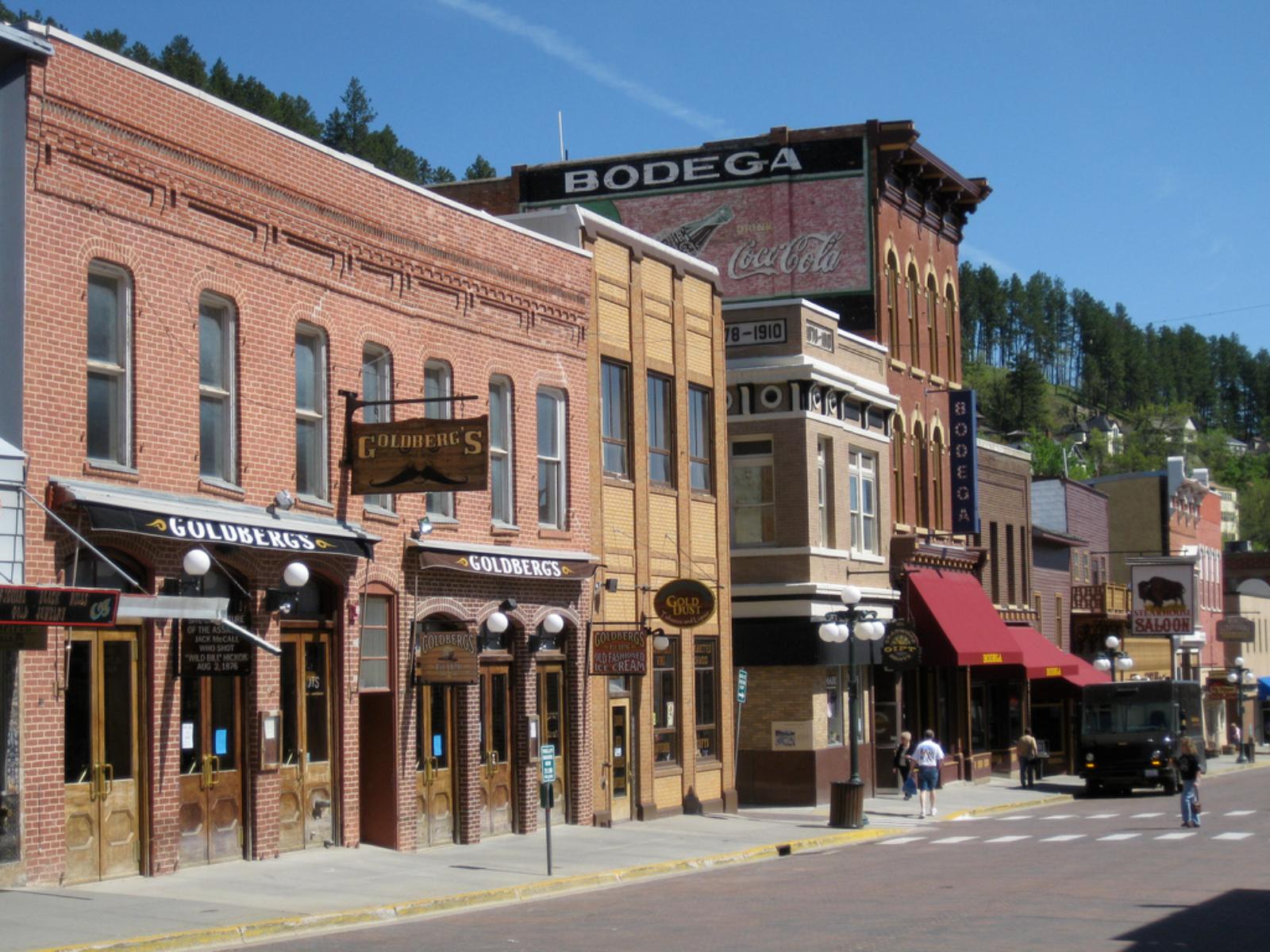
Why Are People Willing to Pay So Much to Live Here? What’s Special About It?
Deadwood offers unparalleled historic character combined with modern gaming and tourism amenities, creating a unique lifestyle in the heart of the Black Hills. Residents enjoy year-round entertainment, dining, and cultural attractions while living in beautifully preserved Victorian neighborhoods. The town provides mountain recreation access with urban-style amenities and employment opportunities.
The community features authentic Wild West history, world-class gaming facilities, and proximity to outdoor recreation throughout the Black Hills region. Deadwood appeals to those seeking active lifestyle with cultural attractions, entertainment options, and mountain living. Many residents appreciate the town’s successful balance of historic preservation and economic development.
How Deadwood Rose to Prominence
Deadwood was founded in 1876 during the Black Hills Gold Rush, quickly becoming one of the most famous boom towns in the American West. The town attracted legendary figures like Wild Bill Hickok, Calamity Jane, and Seth Bullock, creating a colorful history immortalized in books, movies, and television shows.
After mining declined, Deadwood faced economic challenges until gambling was legalized in 1989, creating a new economic foundation based on tourism and gaming. The community successfully balanced historic preservation with modern development, becoming a model for heritage tourism. Today’s Deadwood combines authentic Wild West history with contemporary amenities and mountain lifestyle.
3 Interesting Tidbits
1. Gaming Revenue – Deadwood’s casinos generate significant revenue that funds historic preservation and community improvements throughout the town.
2. Hollywood Fame – The town has been featured in numerous movies and the acclaimed HBO series “Deadwood,” bringing international recognition.
3. Historic District – The entire downtown area is listed on the National Register of Historic Places, preserving its authentic 1800s architecture and character.
12. Castlewood – 53% Home Price Increase Since 2017

- 2010: N/A
- 2011: N/A
- 2012: N/A
- 2013: N/A
- 2014: N/A
- 2015: N/A
- 2016: N/A
- 2017: $298,068
- 2018: $311,508
- 2019: $329,616
- 2020: $347,894
- 2021: $458,842
- 2022: $532,345
- 2023: $541,039
- 2024: $573,666
- 2025: $456,191
Castlewood has shown volatile growth since 2017, reaching $456,191 in 2025 after experiencing dramatic swings during the pandemic period. The community peaked in 2024 before correcting significantly in 2025, reflecting market adjustment in this premium lake community. Despite recent volatility, long-term appreciation remains strong.
Why Castlewood?

Why Are People Willing to Pay So Much to Live Here? What’s Special About It?
Castlewood offers premium lakefront and lake-adjacent living near Lake Poinsett, South Dakota’s second-largest natural lake, providing year-round recreation and scenic beauty. The community attracts buyers seeking waterfront properties, fishing, boating, and water sports in a peaceful rural setting. Residents enjoy small-town atmosphere with recreational amenities typically found in resort destinations.
The area features diverse housing from modest lake cabins to luxury waterfront estates, appealing to both seasonal and year-round residents. Castlewood’s proximity to Watertown provides access to employment and services while maintaining rural character. Many buyers appreciate the investment potential of lakefront properties and recreational lifestyle opportunities.
How Castlewood Rose to Prominence
Castlewood was established in the late 1800s as an agricultural community in Hamlin County, taking advantage of fertile farmland and water resources from nearby Lake Poinsett. The town served local farmers while also developing recreational activities around the lake’s fishing and hunting opportunities.
The community’s transformation to a recreational destination accelerated in recent decades as lake property became increasingly valuable and sought after. Castlewood has successfully balanced agricultural heritage with recreational development, attracting both seasonal visitors and permanent residents seeking lakefront lifestyle. The area represents eastern South Dakota’s premier lake country real estate market.
3 Interesting Tidbits
1. Lake Poinsett – Castlewood provides access to South Dakota’s second-largest natural lake, offering 4,800 acres of recreational water for fishing, boating, and water sports.
2. Fishing Paradise – Lake Poinsett is renowned for excellent walleye, northern pike, and perch fishing, drawing anglers from across the region.
3. Seasonal Economy – The community benefits from both agricultural activity and seasonal recreational tourism that supports local businesses year-round.
11. Goodwin – 41% Home Price Increase Since 2018
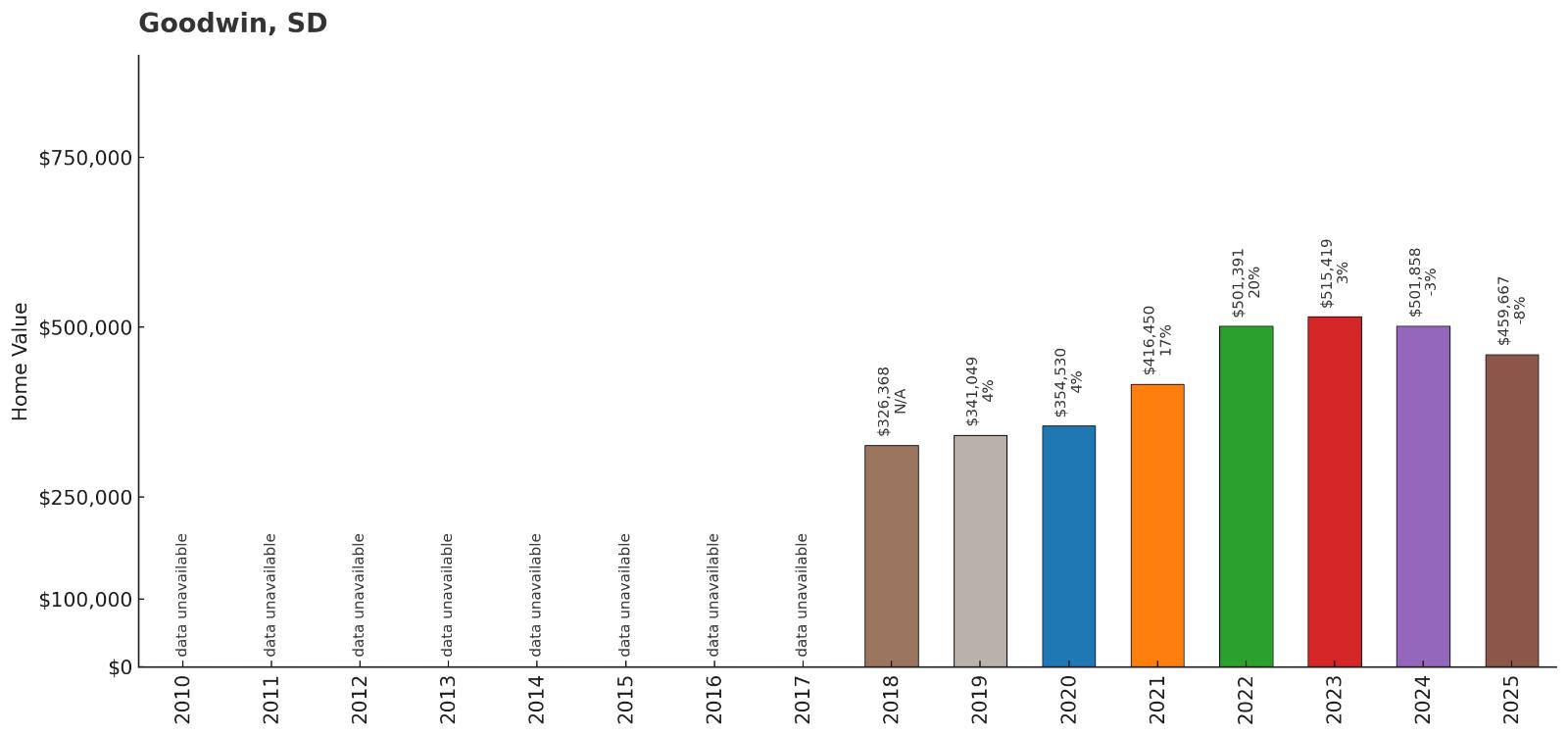
- 2010: N/A
- 2011: N/A
- 2012: N/A
- 2013: N/A
- 2014: N/A
- 2015: N/A
- 2016: N/A
- 2017: N/A
- 2018: $326,368
- 2019: $341,049
- 2020: $354,530
- 2021: $416,450
- 2022: $501,391
- 2023: $515,419
- 2024: $501,858
- 2025: $459,667
Goodwin has shown volatile growth since 2018, reaching $459,667 in 2025 after experiencing significant swings during the pandemic period. The community peaked in 2023 before correcting in recent years, reflecting market adjustment in this small rural community. Despite recent volatility, the town maintains premium pricing in Deuel County’s agricultural region.
Why Goodwin?
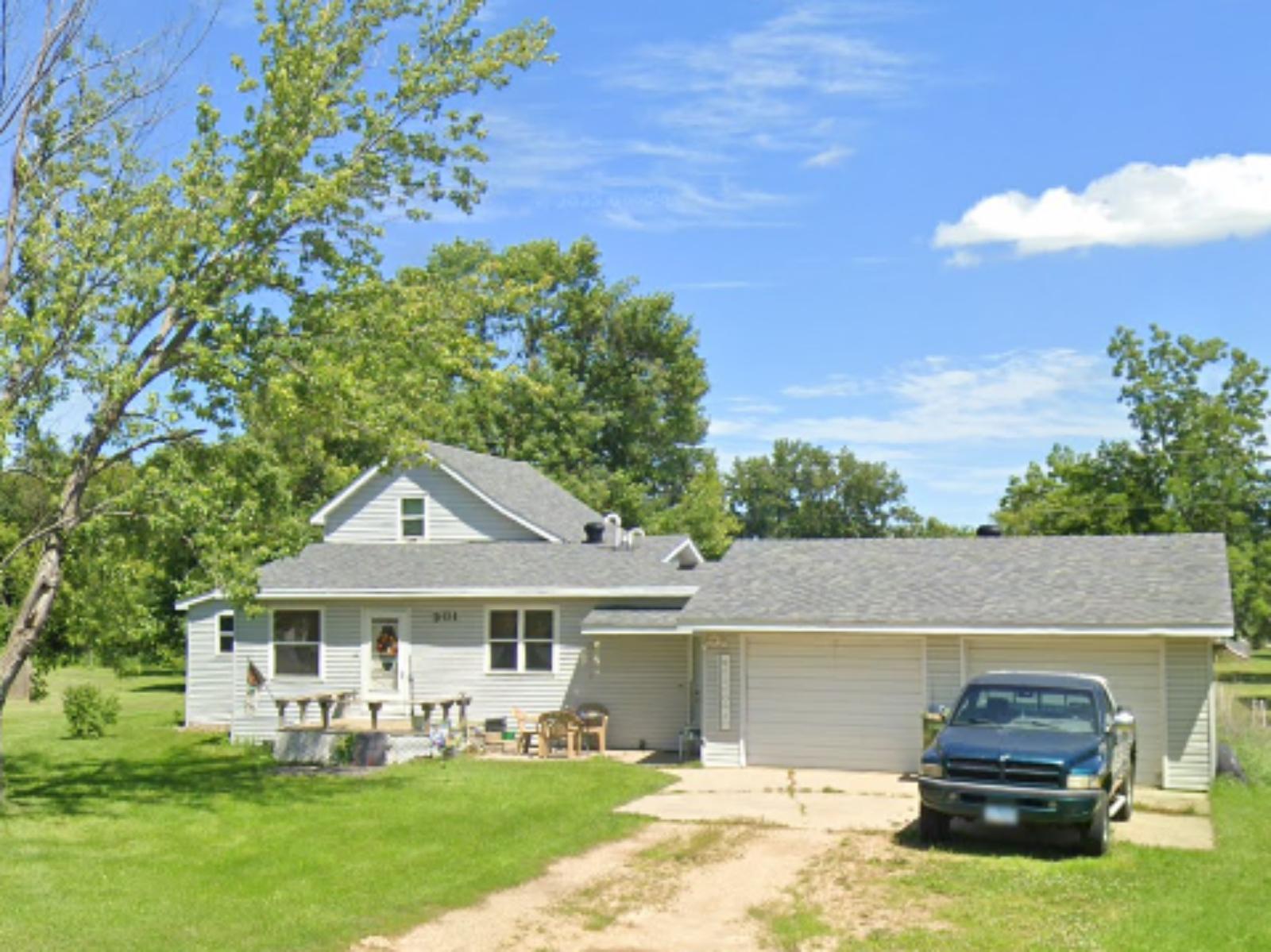
Why Are People Willing to Pay So Much to Live Here? What’s Special About It?
Goodwin attracts buyers seeking premium rural living in eastern South Dakota’s agricultural heartland, offering larger properties and agricultural investment opportunities. The community provides peace and privacy while maintaining access to regional services and employment. Properties often include significant acreage suitable for farming, ranching, or recreational use.
The area appeals to those interested in agricultural ventures, hunting, and outdoor recreation in Deuel County’s diverse landscape of prairie and wetlands. Goodwin offers authentic rural lifestyle with investment potential through agricultural operations. Limited housing supply creates premium pricing for available properties in this quiet agricultural setting.
How Goodwin Rose to Prominence
Goodwin was established as a small agricultural community in Deuel County during the homestead era, serving local farmers with essential services and supplies. The town developed around grain storage and shipping facilities that connected agricultural producers to regional markets via railroad transportation.
The community has remained closely connected to agricultural economics while adapting to changing rural demographics and lifestyle preferences. Goodwin represents the premium tier of rural real estate in eastern South Dakota, where agricultural land values and rural lifestyle appeal create elevated property prices. Recent interest in rural properties has maintained demand despite the community’s small size.
3 Interesting Tidbits
1. Agricultural Premium – Goodwin’s elevated property values reflect the high quality of surrounding agricultural land and farming operations.
2. Rural Lifestyle – The community appeals to buyers seeking authentic agricultural experiences and rural lifestyle opportunities.
3. Investment Potential – Properties often include agricultural land that provides both residential living and agricultural income opportunities.
10. Spearfish – 113% Home Price Increase Since 2012
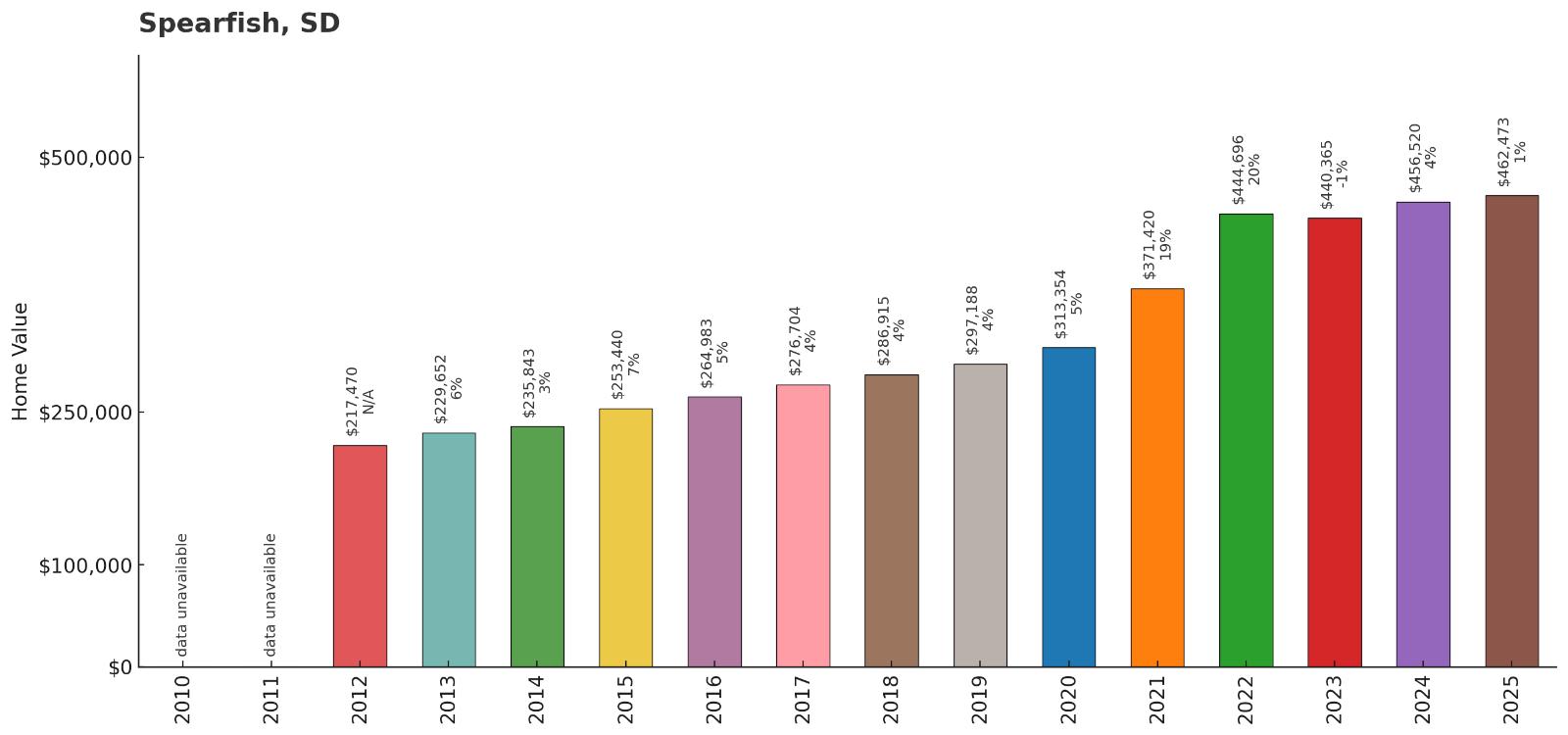
- 2010: N/A
- 2011: N/A
- 2012: $217,470
- 2013: $229,652
- 2014: $235,843
- 2015: $253,440
- 2016: $264,983
- 2017: $276,704
- 2018: $286,915
- 2019: $297,188
- 2020: $313,354
- 2021: $371,420
- 2022: $444,696
- 2023: $440,365
- 2024: $456,520
- 2025: $462,473
Spearfish has more than doubled since 2012, reaching $462,473 in 2025 with consistent growth throughout the period. The strongest appreciation occurred during 2021-2022, reflecting the broader pandemic housing boom. Current values demonstrate Spearfish’s appeal as a premier Black Hills community with university presence and outdoor recreation access.
Why Spearfish?

Why Are People Willing to Pay So Much to Live Here? What’s Special About It?
Spearfish offers the perfect combination of university town culture and Black Hills outdoor recreation, featuring Black Hills State University and world-class natural attractions like Spearfish Canyon. Residents enjoy educational opportunities, cultural events, and year-round outdoor activities from skiing to hiking. The community provides stable employment through education, healthcare, and tourism while maintaining mountain town character.
The town features excellent schools, diverse housing options, and amenities typically found in larger cities while maintaining access to pristine natural areas. Spearfish appeals to families, professionals, and retirees seeking active lifestyle with cultural enrichment. Many residents appreciate the community’s balance of economic stability and recreational opportunities in one of South Dakota’s most scenic settings.
How Spearfish Rose to Prominence
Spearfish was founded in 1876 as a supply center for Black Hills mining operations, taking its name from Spearfish Creek that flows through the dramatic Spearfish Canyon. The town developed educational infrastructure early, with the establishment of Spearfish Normal School (now Black Hills State University) in 1883, creating a foundation for long-term stability and growth.
The community successfully diversified beyond mining to include education, agriculture, and tourism, creating economic resilience that has sustained growth for over a century. Spearfish has become known for its spectacular natural setting, quality educational institutions, and recreational opportunities that attract residents and visitors year-round.
3 Interesting Tidbits
1. Spearfish Canyon – The town provides access to one of America’s most spectacular canyons, featuring towering limestone cliffs, waterfalls, and brilliant fall colors.
2. University Town – Black Hills State University provides cultural events, athletics, and educational opportunities that enrich community life year-round.
3. Passion Play – Spearfish hosts the longest-running outdoor passion play in the United States, drawing visitors from around the world each summer.
9. Hill City – 114% Home Price Increase Since 2010
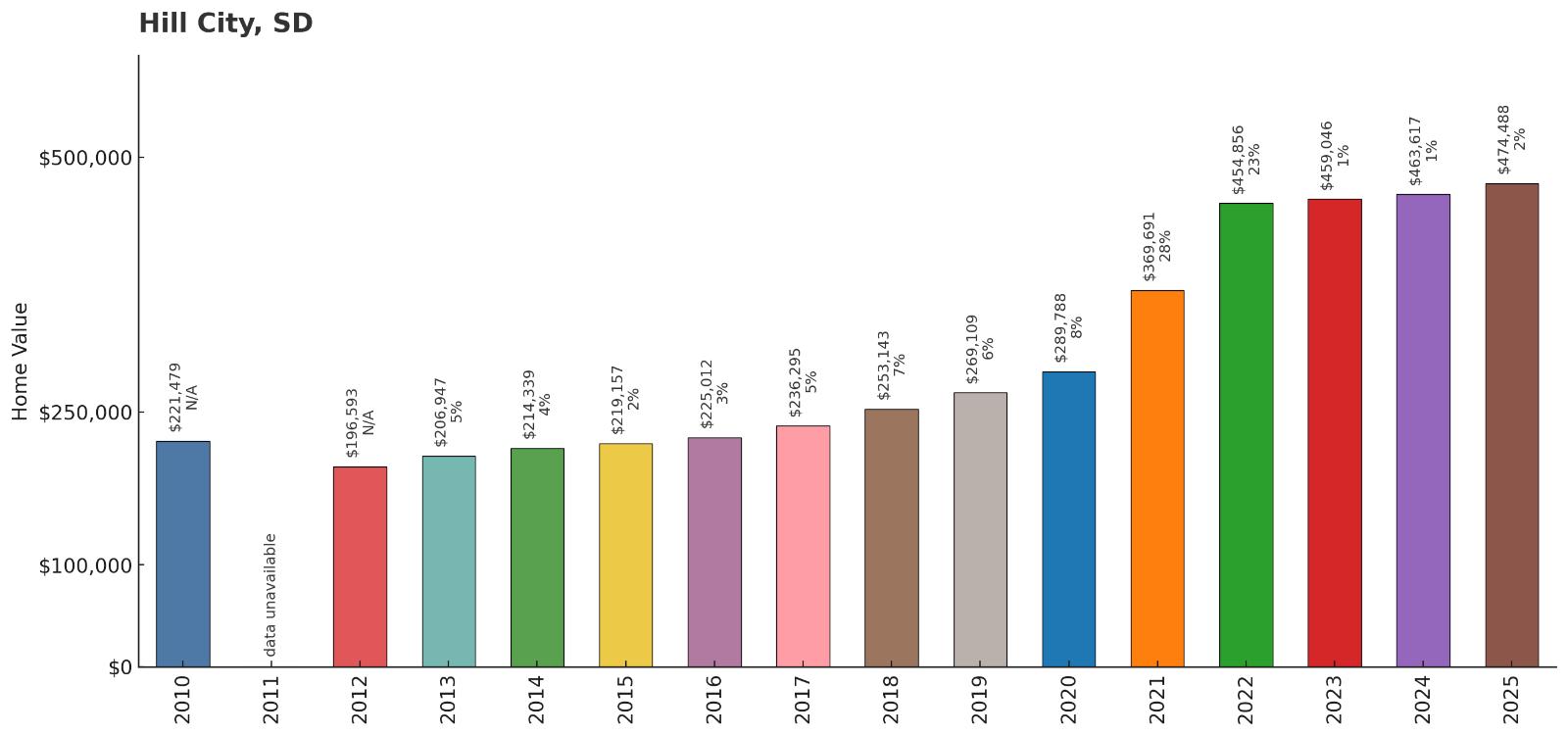
- 2010: $221,479
- 2011: N/A
- 2012: $196,593
- 2013: $206,947
- 2014: $214,339
- 2015: $219,157
- 2016: $225,012
- 2017: $236,295
- 2018: $253,143
- 2019: $269,109
- 2020: $289,788
- 2021: $369,691
- 2022: $454,856
- 2023: $459,046
- 2024: $463,617
- 2025: $474,488
Hill City has more than doubled since 2010, reaching $474,488 in 2025 with particularly strong growth from 2020 onward. The community experienced explosive appreciation during the pandemic housing boom and continues to grow steadily. Current values reflect Hill City’s position as the heart of the Black Hills tourism and recreation economy.
Why Hill City?

Why Are People Willing to Pay So Much to Live Here? What’s Special About It?
Hill City serves as the geographic heart of the Black Hills, offering unparalleled access to outdoor recreation, cultural attractions, and mountain lifestyle. Residents enjoy proximity to Mount Rushmore, Crazy Horse Memorial, Custer State Park, and countless hiking and recreational opportunities. The town provides authentic mountain living with tourism-based employment and seasonal business opportunities.
The community features art galleries, unique shops, and the historic 1880 Train that connects to Keystone, creating a vibrant tourism economy. Hill City appeals to those seeking four-season mountain recreation, artistic community, and entrepreneurial opportunities in the tourism sector. Many residents appreciate the town’s authentic Western character and central location for exploring the entire Black Hills region.
How Hill City Rose to Prominence
Hill City was established in 1876 during the Black Hills Gold Rush as one of the original mining camps in the region. The town developed as a supply center for surrounding mining operations and became known as the “Heart of the Hills” due to its central location in the Black Hills region.
As mining declined, Hill City successfully transitioned to tourism and recreation, capitalizing on its central location and natural beauty. The community has become a hub for Black Hills tourism, offering visitors authentic mountain town experience with access to major attractions throughout the region. The town represents successful adaptation from mining economy to sustainable tourism and recreation-based prosperity.
3 Interesting Tidbits
1. 1880 Train – Hill City is home to the historic steam locomotive that provides scenic rides through the Black Hills between Hill City and Keystone.
2. Art Community – The town hosts numerous art galleries, studios, and cultural events that attract artists and visitors throughout the year.
3. Central Location – Hill City’s position in the heart of the Black Hills provides easy access to virtually all major attractions and recreational areas in the region.
8. Custer – 168% Home Price Increase Since 2011
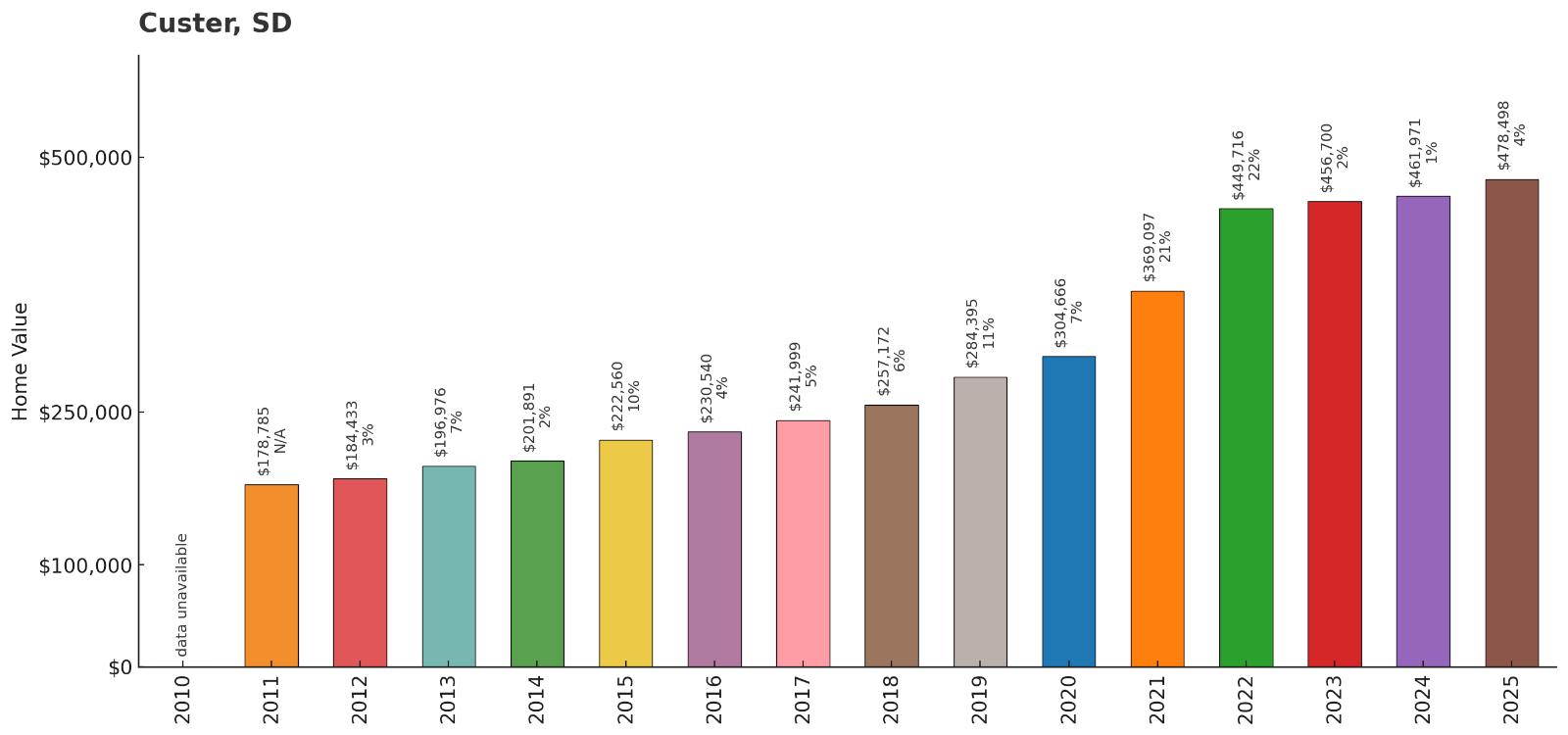
- 2010: N/A
- 2011: $178,785
- 2012: $184,433
- 2013: $196,976
- 2014: $201,891
- 2015: $222,560
- 2016: $230,540
- 2017: $241,999
- 2018: $257,172
- 2019: $284,395
- 2020: $304,666
- 2021: $369,097
- 2022: $449,716
- 2023: $456,700
- 2024: $461,971
- 2025: $478,498
Custer has shown exceptional growth since 2011, more than doubling to reach $478,498 in 2025 with consistent appreciation throughout the period. The strongest gains occurred during 2021-2022, reflecting the broader Black Hills real estate boom. Current values demonstrate Custer’s appeal as a gateway to some of South Dakota’s premier natural attractions.
Why Custer?

Why Are People Willing to Pay So Much to Live Here? What’s Special About It?
Custer offers direct access to Custer State Park, Wind Cave National Park, and some of the Black Hills’ most spectacular scenery and wildlife viewing opportunities. Residents enjoy year-round outdoor recreation from buffalo viewing to hiking, fishing, and cave exploration. The town provides mountain living with tourism employment and recreational business opportunities.
The community features historic character, mountain scenery, and proximity to major attractions that draw millions of visitors annually. Custer appeals to outdoor enthusiasts, retirees, and those seeking mountain lifestyle with tourism-related income potential. Many residents appreciate living adjacent to preserved natural areas while maintaining modern amenities and services.
How Custer Rose to Prominence
Custer was founded in 1875 and named after Lieutenant Colonel George Armstrong Custer, who led the 1874 expedition that confirmed gold in the Black Hills. The town developed as a supply center for mining operations and became the first county seat in the Black Hills region.
As mining declined, Custer successfully transitioned to tourism and recreation, benefiting from its proximity to Custer State Park (established in 1919) and Wind Cave National Park. The community has become a premier destination for those seeking authentic Black Hills experience with access to world-class natural attractions. Custer represents successful adaptation from mining town to sustainable tourism-based economy.
3 Interesting Tidbits
1. Park Gateway – Custer serves as the primary gateway to Custer State Park, home to the famous buffalo herd and scenic Wildlife Loop Road.
2. Gold Discovery – The town sits near the location where gold was first discovered in the Black Hills during the 1874 Custer Expedition.
3. Natural Attractions – Residents have immediate access to two national parks, state parks, and countless hiking trails and recreational opportunities.
7. Renner – 2% Home Price Increase Since 2024
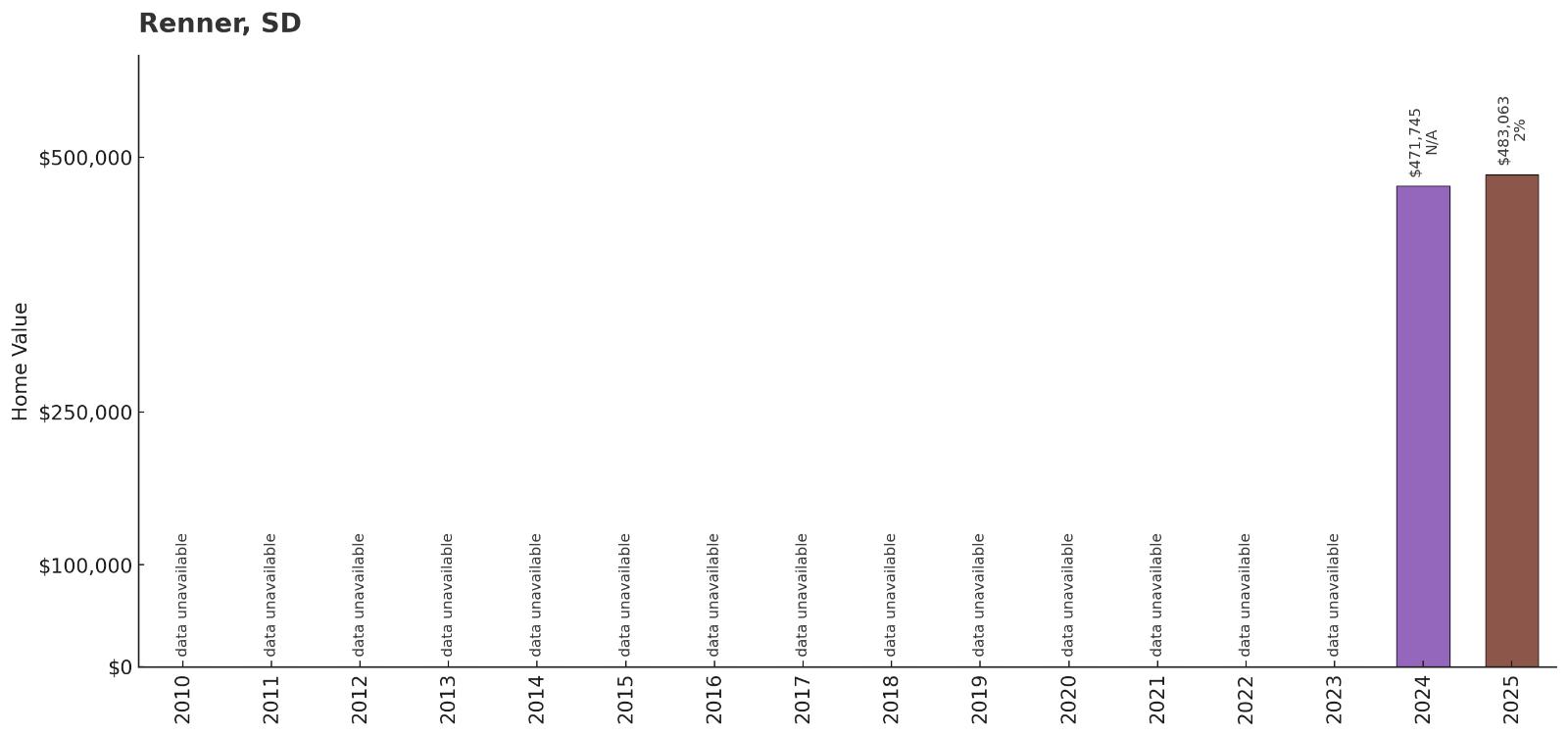
- 2010: N/A
- 2011: N/A
- 2012: N/A
- 2013: N/A
- 2014: N/A
- 2015: N/A
- 2016: N/A
- 2017: N/A
- 2018: N/A
- 2019: N/A
- 2020: N/A
- 2021: N/A
- 2022: N/A
- 2023: N/A
- 2024: $471,745
- 2025: $483,063
Renner shows modest growth with a 2% increase from 2024 to 2025, reaching $483,063 in current values. The limited data suggests a premium rural market with stable pricing, likely reflecting high-end agricultural or estate properties. Current values place Renner among the state’s most expensive small communities despite limited historical data.
Why Renner?

Why Are People Willing to Pay So Much to Live Here? What’s Special About It?
Renner attracts buyers seeking premium rural living near Sioux Falls with larger estates, agricultural opportunities, and privacy while maintaining convenient urban access. The community offers high-end rural properties with significant acreage, appealing to those seeking luxury rural lifestyle. Properties often feature custom homes, agricultural facilities, and recreational amenities.
The area provides space for horses, agriculture, and outdoor activities while remaining within commuting distance of Sioux Falls employment and services. Renner appeals to affluent buyers seeking rural retreat properties or agricultural investments. Limited housing supply ensures premium pricing for available estates and agricultural properties.
How Renner Rose to Prominence
Renner developed as a small agricultural community in Minnehaha County, serving local farming and rural residential needs. The area has traditionally attracted larger agricultural operations and rural estates due to its fertile farmland and proximity to Sioux Falls.
The community has evolved into a premium rural residential area where larger properties and custom homes command significant values. Renner represents the high end of rural real estate near Sioux Falls, attracting buyers willing to pay premium prices for space, privacy, and agricultural opportunities while maintaining urban access.
3 Interesting Tidbits
1. Estate Properties – Renner features larger rural estates and custom homes that command premium prices in the Sioux Falls area market.
2. Agricultural Excellence – The area is known for high-quality farmland and agricultural operations that add value to rural properties.
3. Urban Proximity – Despite its rural character, Renner provides convenient access to Sioux Falls employment and amenities.
6. Florence – 17% Home Price Increase Since 2022

- 2010: N/A
- 2011: N/A
- 2012: N/A
- 2013: N/A
- 2014: N/A
- 2015: N/A
- 2016: N/A
- 2017: N/A
- 2018: N/A
- 2019: N/A
- 2020: N/A
- 2021: N/A
- 2022: $438,158
- 2023: $516,404
- 2024: $531,084
- 2025: $512,234
Florence has shown volatile growth since entering tracking in 2022, reaching $512,234 in 2025 after significant swings during the period. The community experienced dramatic growth in 2023-2024 followed by correction in 2025, reflecting market adjustment in this premium Codington County location. Despite recent volatility, Florence maintains high property values.
Why Florence?

Why Are People Willing to Pay So Much to Live Here? What’s Special About It?
Florence offers premium rural living in northeastern South Dakota’s lake region, providing access to recreational lakes and upscale rural lifestyle. The community attracts buyers seeking luxury rural properties with recreational amenities and proximity to Watertown’s services and employment. Properties often feature significant acreage, custom homes, and recreational facilities.
The area appeals to affluent buyers interested in recreational properties, agricultural investments, or luxury rural retreats. Florence’s location in Codington County provides access to regional lakes while maintaining rural character and privacy. Limited high-end inventory creates premium pricing for available luxury rural properties.
How Florence Rose to Prominence
Florence developed as a small rural community in Codington County, serving agricultural and rural residential needs in northeastern South Dakota. The area has traditionally attracted larger agricultural operations and rural estates due to its location near recreational lakes and quality farmland.
The community has evolved into a premium rural residential area where luxury properties and recreational estates command significant values. Florence represents the high end of rural real estate in northeastern South Dakota, attracting buyers seeking upscale rural lifestyle with recreational amenities and agricultural opportunities.
3 Interesting Tidbits
1. Lake Country – Florence provides access to northeastern South Dakota’s recreational lake region, popular for fishing, boating, and water sports.
2. Luxury Rural – The community features high-end rural properties and custom homes that represent premium rural living.
3. Agricultural Heritage – The area maintains connections to quality agricultural operations while embracing recreational and luxury residential development.
5. Wentworth – 104% Home Price Increase Since 2017
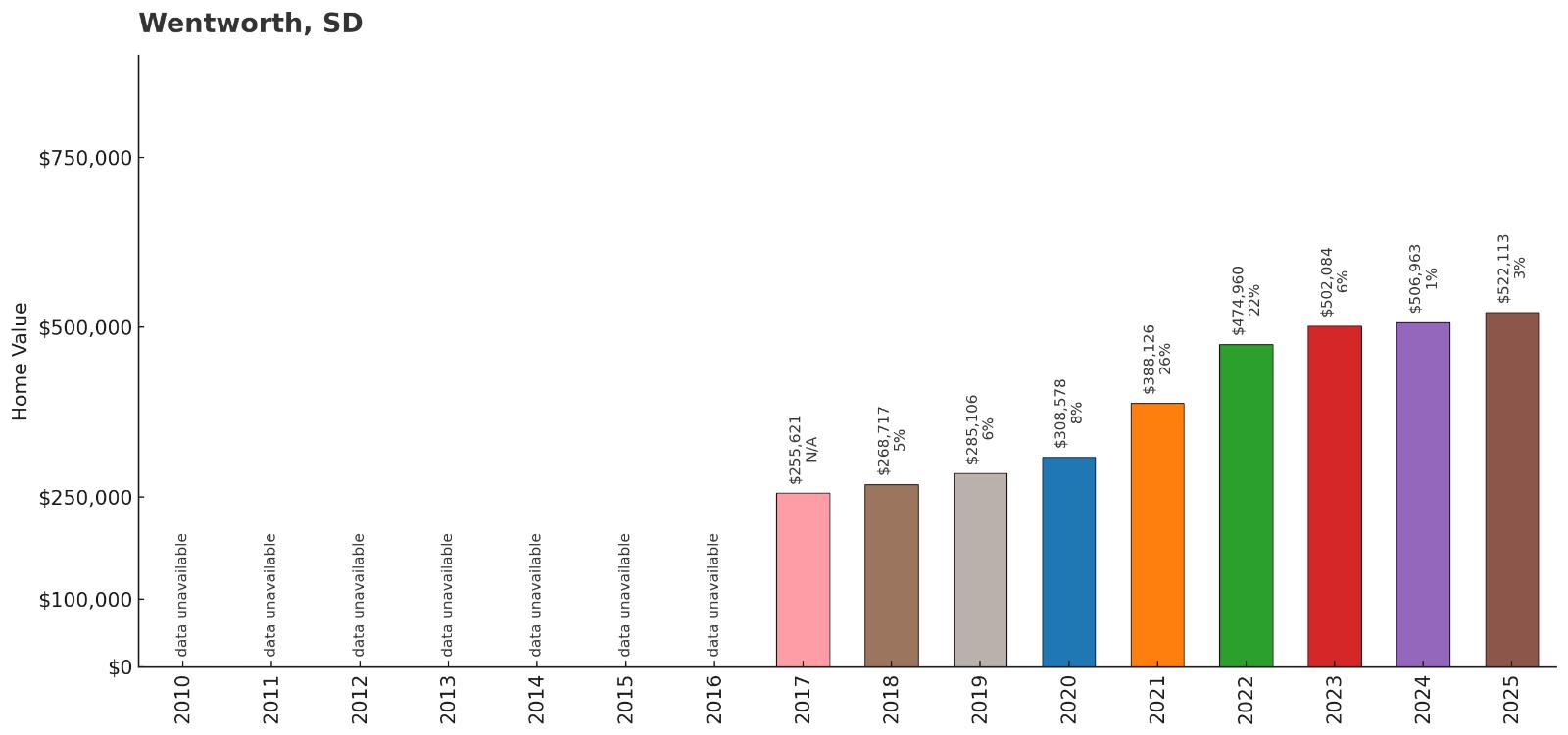
- 2010: N/A
- 2011: N/A
- 2012: N/A
- 2013: N/A
- 2014: N/A
- 2015: N/A
- 2016: N/A
- 2017: $255,621
- 2018: $268,717
- 2019: $285,106
- 2020: $308,578
- 2021: $388,126
- 2022: $474,960
- 2023: $502,084
- 2024: $506,963
- 2025: $522,113
Wentworth has more than doubled since 2017, reaching $522,113 in 2025 with explosive growth during 2021-2022 when values surged over $86,000 in two years. The community continues to appreciate steadily, reflecting strong demand for rural Lake County properties. Current values demonstrate Wentworth’s position among South Dakota’s premium small communities.
Why Wentworth?
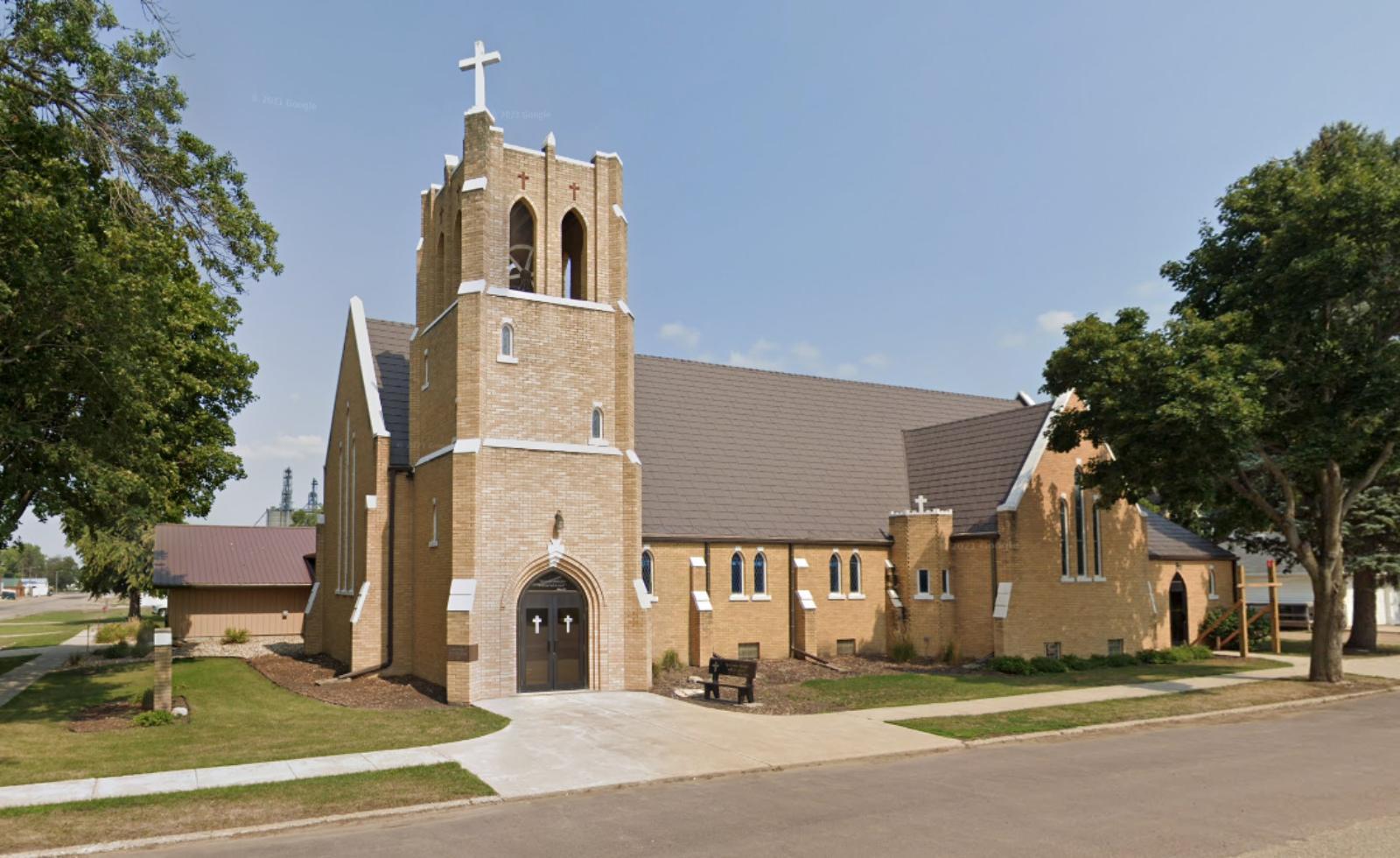
Why Are People Willing to Pay So Much to Live Here? What’s Special About It?
Wentworth provides access to Lake County’s recreational opportunities while maintaining small-town character and agricultural heritage. The community offers peaceful rural living with access to regional lakes for fishing, boating, and water sports. Residents enjoy authentic small-town atmosphere with proximity to recreational amenities and natural beauty.
The town features well-maintained infrastructure, community amenities, and access to agricultural and recreational opportunities that appeal to diverse buyers. Wentworth attracts those seeking rural lifestyle with recreational access and investment potential. Limited housing supply and growing demand have driven significant appreciation in this lake country community.
How Wentworth Rose to Prominence
Wentworth was established in the late 1800s as an agricultural community in Lake County, serving local farmers and taking advantage of the area’s numerous natural lakes for recreation and transportation. The town developed around grain storage and shipping facilities while also supporting recreational activities.
The community has successfully balanced agricultural heritage with recreational development, attracting both farming families and recreational property buyers. Wentworth has benefited from increased interest in lake country real estate and rural lifestyle properties. The town represents successful adaptation to changing rural economics while maintaining community character.
3 Interesting Tidbits
1. Lake Access – Wentworth provides access to multiple recreational lakes that support fishing, boating, and water recreation throughout the year.
2. Agricultural Balance – The community successfully combines agricultural heritage with recreational tourism and rural residential development.
3. Community Events – Wentworth hosts annual festivals and events that celebrate both its agricultural heritage and recreational opportunities.
4. Hermosa – 209% Home Price Increase Since 2011
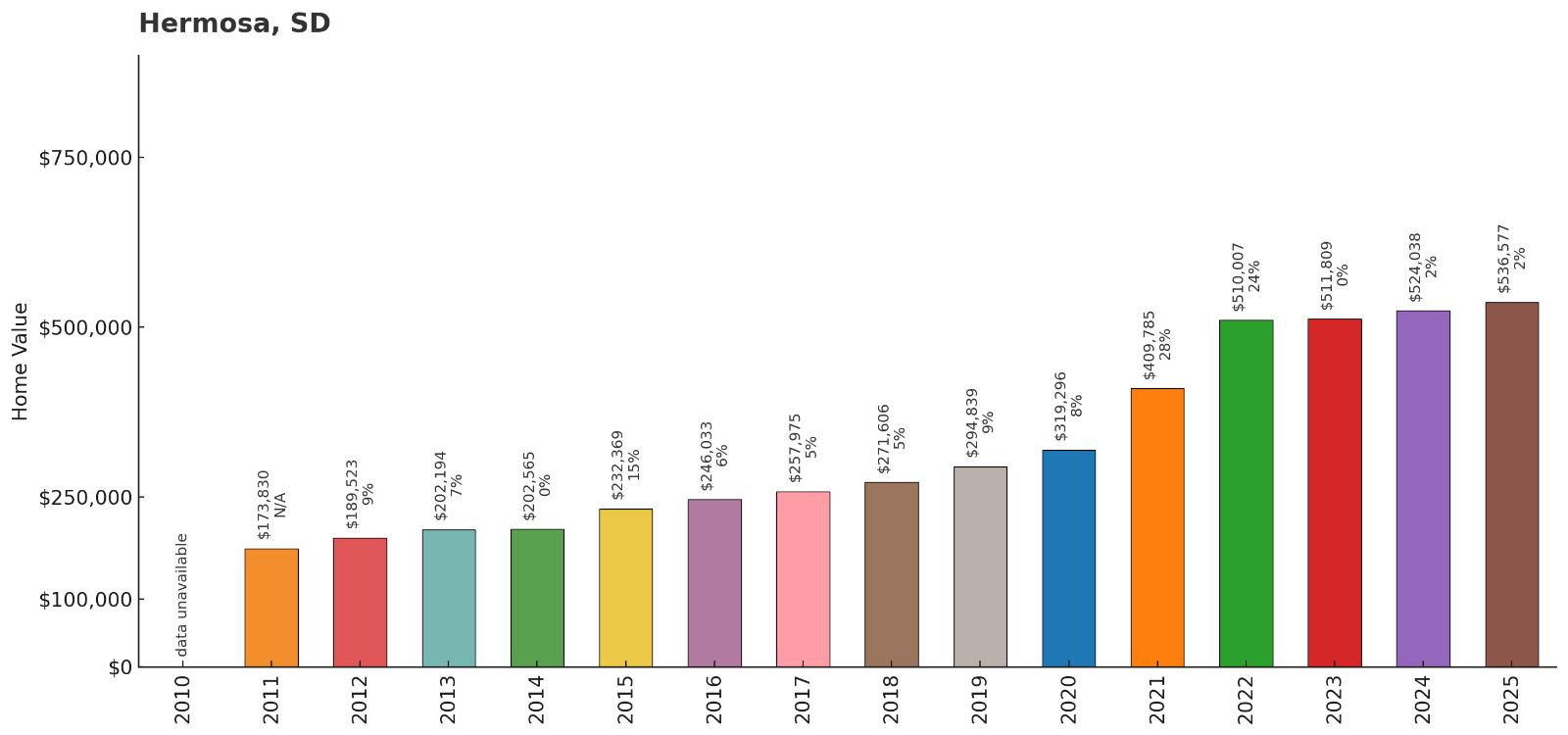
- 2010: N/A
- 2011: $173,830
- 2012: $189,523
- 2013: $202,194
- 2014: $202,565
- 2015: $232,369
- 2016: $246,033
- 2017: $257,975
- 2018: $271,606
- 2019: $294,839
- 2020: $319,296
- 2021: $409,785
- 2022: $510,007
- 2023: $511,809
- 2024: $524,038
- 2025: $536,577
Hermosa has shown exceptional growth since 2011, more than tripling to reach $536,577 in 2025 with consistent appreciation throughout the period. The strongest gains occurred during 2021-2022, when values surged over $100,000 in two years. Current values reflect Hermosa’s transformation into one of South Dakota’s most expensive small communities.
Why Hermosa?
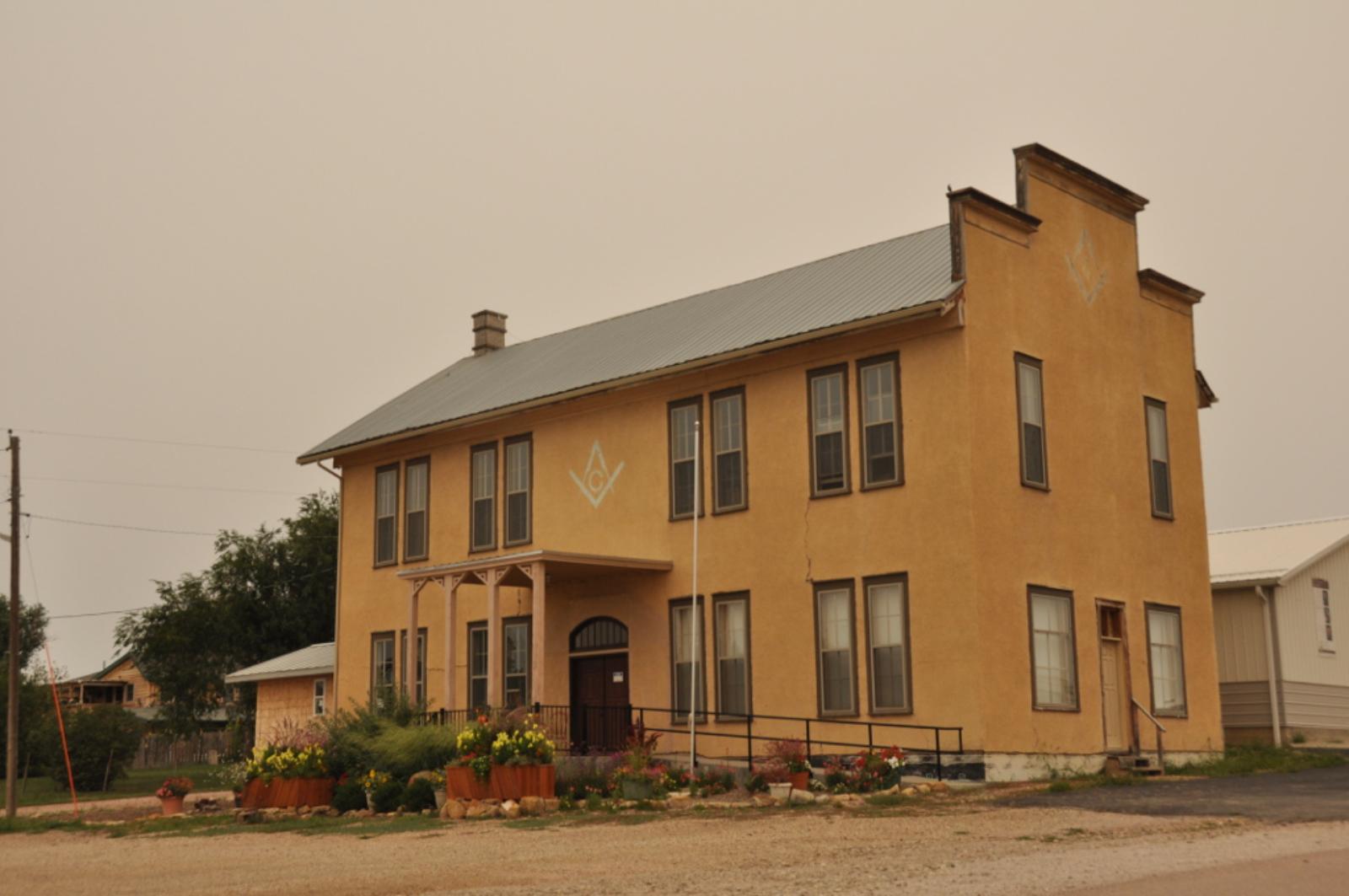
Why Are People Willing to Pay So Much to Live Here? What’s Special About It?
Hermosa offers rural tranquility between Rapid City and the Black Hills, providing easy access to both urban employment and mountain recreation. The community attracts buyers seeking larger lots, newer homes, and peaceful rural lifestyle while maintaining convenient access to regional amenities. Residents enjoy wide-open spaces with mountain views and outdoor recreation opportunities.
The area features agricultural heritage combined with modern residential development, appealing to families seeking space and rural character. Hermosa provides excellent value for buyers wanting rural lifestyle with urban access and Black Hills recreation. Many residents appreciate the community’s growth potential while maintaining authentic rural character and agricultural connections.
How Hermosa Rose to Prominence
Hermosa was established as a small agricultural community in Custer County, serving local ranchers and farmers in the area between Rapid City and the Black Hills. The town developed around livestock shipping and agricultural services that connected rural producers to regional markets.
The community’s transformation accelerated as Rapid City expanded and Black Hills tourism grew, creating demand for rural residential alternatives with access to both urban employment and mountain recreation. Hermosa has successfully attracted new residents while maintaining its agricultural heritage and rural character. The town represents successful rural residential development in the greater Black Hills region.
3 Interesting Tidbits
1. Gateway Location – Hermosa sits strategically between Rapid City and the Black Hills, providing access to both urban amenities and mountain recreation.
2. Rural Development – The community has experienced significant residential growth while maintaining its agricultural heritage and rural character.
3. Mountain Views – Many properties in Hermosa offer scenic views of the Black Hills and surrounding ranch country landscape.
3. South Shore – 32% Home Price Decrease Since 2022
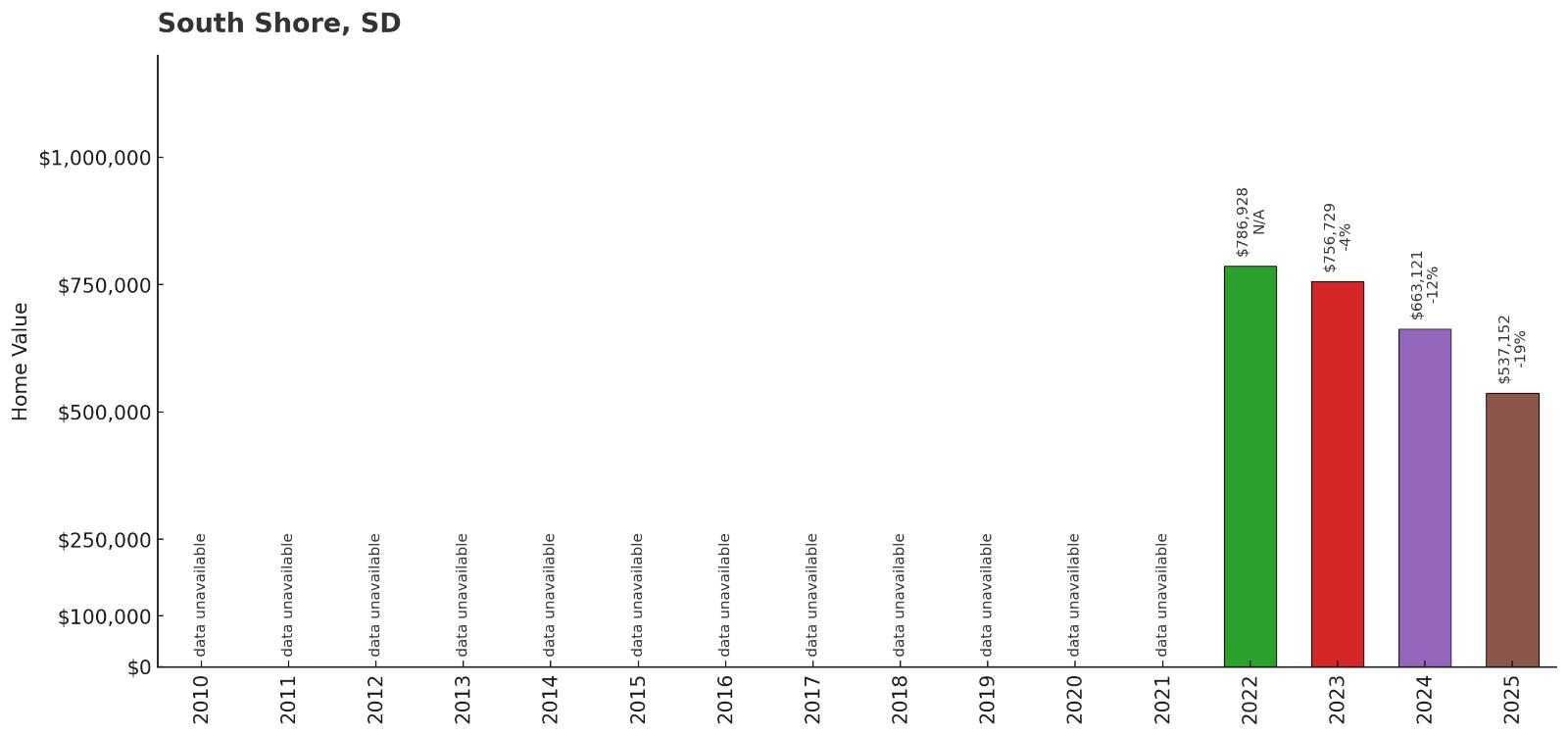
- 2010: N/A
- 2011: N/A
- 2012: N/A
- 2013: N/A
- 2014: N/A
- 2015: N/A
- 2016: N/A
- 2017: N/A
- 2018: N/A
- 2019: N/A
- 2020: N/A
- 2021: N/A
- 2022: $786,928
- 2023: $756,729
- 2024: $663,121
- 2025: $537,152
South Shore has experienced significant volatility since entering tracking in 2022, declining 32% to reach $537,152 in 2025 after peaking at nearly $787,000. The dramatic correction reflects market adjustment in this premium lakefront community. Despite recent declines, South Shore maintains high property values in Codington County’s recreational market.
Why South Shore?
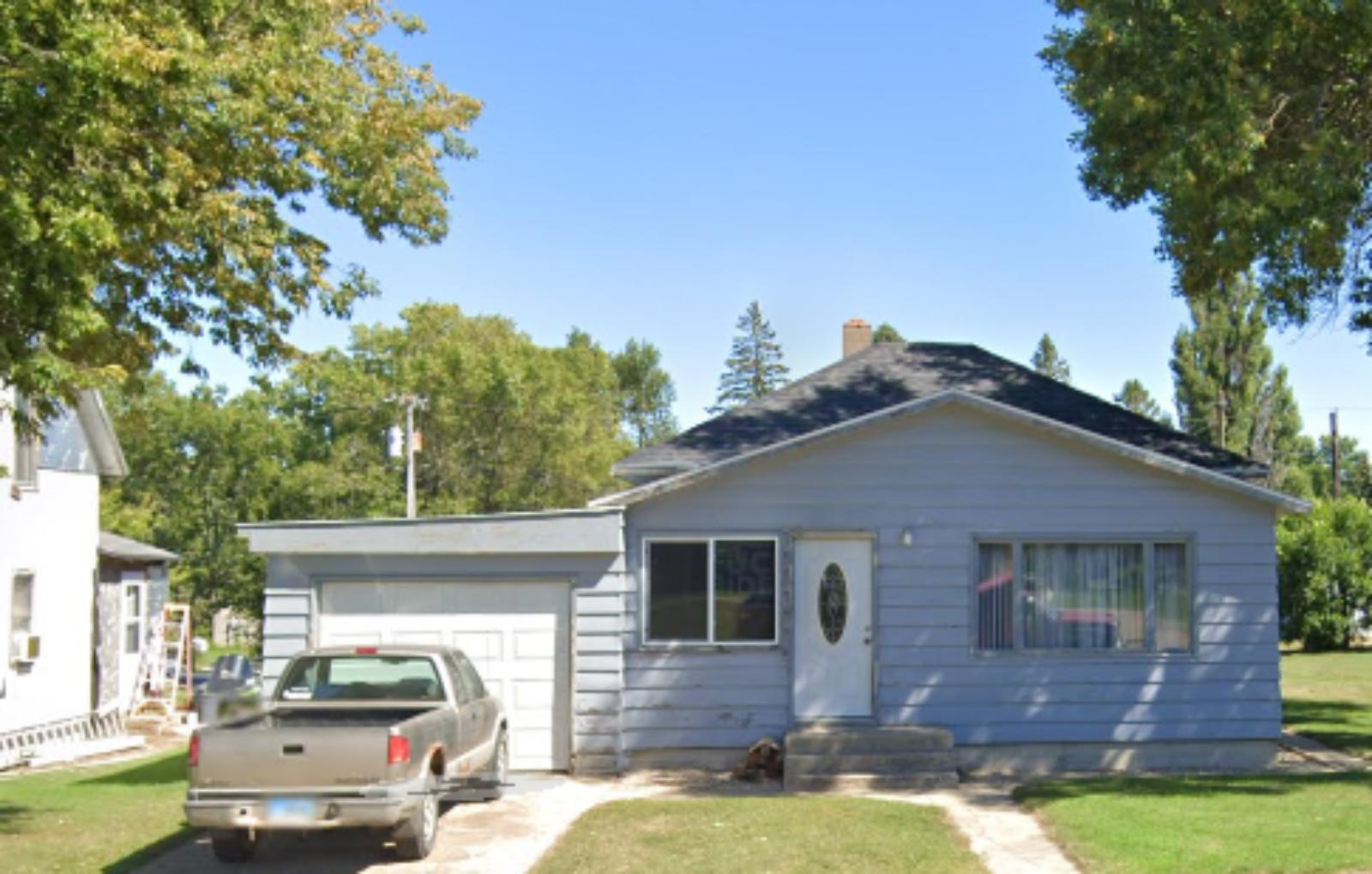
Why Are People Willing to Pay So Much to Live Here? What’s Special About It?
South Shore offers premium lakefront living on Big Stone Lake, providing luxury recreational properties with year-round water access and scenic beauty. The community attracts affluent buyers seeking high-end lake homes, recreational estates, and investment properties. Residents enjoy fishing, boating, water sports, and luxury lakefront lifestyle in northeastern South Dakota.
The area features exclusive lakefront properties, custom homes, and recreational amenities typically found in resort destinations. South Shore appeals to buyers seeking luxury recreational properties and seasonal retreats with investment potential. Limited lakefront inventory ensures premium pricing despite recent market corrections.
How South Shore Rose to Prominence
South Shore developed as a recreational community along Big Stone Lake, taking advantage of one of the region’s premier fishing and recreational destinations. The area evolved from seasonal lake cabins to year-round luxury residential properties as recreational real estate became increasingly valuable.
The community has attracted buyers seeking premium lakefront lifestyle and recreational investment opportunities. South Shore represents the high end of recreational real estate in northeastern South Dakota, where lakefront properties command significant premiums despite market volatility. The area continues to appeal to affluent buyers seeking luxury lake living.
3 Interesting Tidbits
1. Big Stone Lake – South Shore provides access to one of the region’s premier recreational lakes, known for excellent fishing and water recreation.
2. Luxury Market – The community represents the premium tier of lakefront real estate in South Dakota, featuring high-end properties and recreational amenities.
3. Seasonal Appeal – Many properties serve as seasonal retreats and recreational investments for buyers from urban areas throughout the region.
2. Henry – 68% Home Price Increase Since 2016
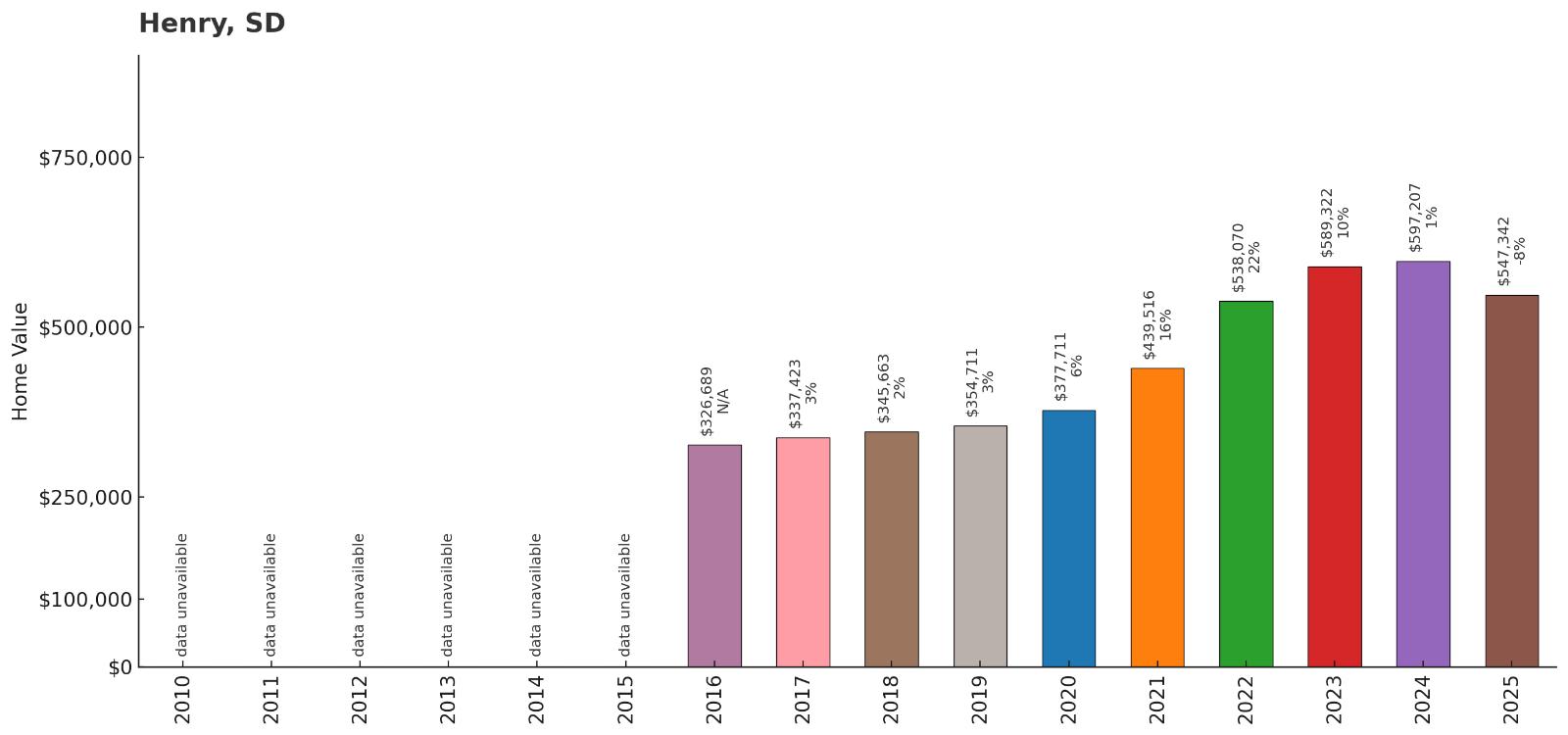
- 2010: N/A
- 2011: N/A
- 2012: N/A
- 2013: N/A
- 2014: N/A
- 2015: N/A
- 2016: $326,689
- 2017: $337,423
- 2018: $345,663
- 2019: $354,711
- 2020: $377,711
- 2021: $439,516
- 2022: $538,070
- 2023: $589,322
- 2024: $597,207
- 2025: $547,342
Henry has shown strong growth since 2016, reaching $547,342 in 2025 despite recent volatility that saw values peak in 2024 before correcting. The community experienced dramatic appreciation through 2024, reflecting its appeal as a premium recreational destination. Current values maintain Henry’s position among South Dakota’s most expensive small communities.
Why Henry?
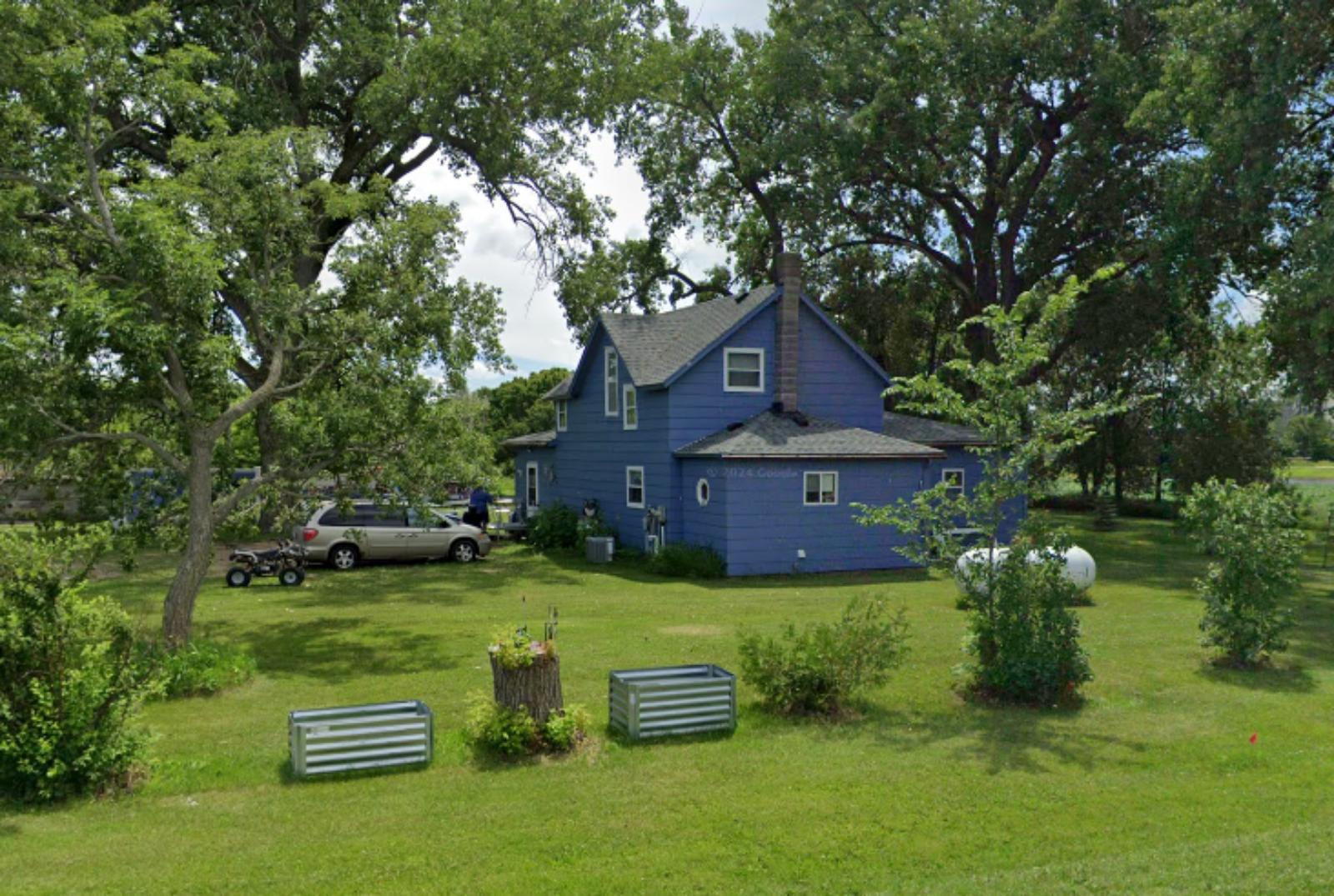
Why Are People Willing to Pay So Much to Live Here? What’s Special About It?
Henry attracts buyers seeking premium rural living near recreational lakes and natural areas in Codington County. The community offers luxury rural properties with access to fishing, hunting, and outdoor recreation while maintaining privacy and larger acreage. Properties often feature custom homes, recreational amenities, and agricultural or recreational land use.
The area appeals to affluent buyers interested in recreational properties, luxury rural retreats, and agricultural investments. Henry’s extremely limited inventory creates statistical volatility while maintaining high average valuations. Many buyers appreciate the recreational appeal, acreage, and rural lifestyle opportunities in this exclusive setting.
How Henry Rose to Prominence
Henry developed as a small rural community in Codington County, serving agricultural and recreational needs in the lake region of northeastern South Dakota. The area has traditionally attracted larger rural properties and recreational estates due to its proximity to natural lakes and quality farmland.
The community evolved into a premium rural residential area where luxury properties and recreational estates command exceptional values. Henry represents the exclusive tier of rural real estate in northeastern South Dakota, attracting buyers willing to pay premium prices for luxury rural lifestyle and recreational opportunities.
3 Interesting Tidbits
1. Lake Proximity – Henry provides access to Dry Lake and other recreational areas popular for fishing, hunting, and outdoor activities.
2. Exclusive Market – The community’s extremely limited inventory creates a premium market for high-end rural and recreational properties.
3. Rural Luxury – Henry represents the highest tier of rural residential real estate in the Watertown region of South Dakota.
1. Keystone – 183% Home Price Increase Since 2010
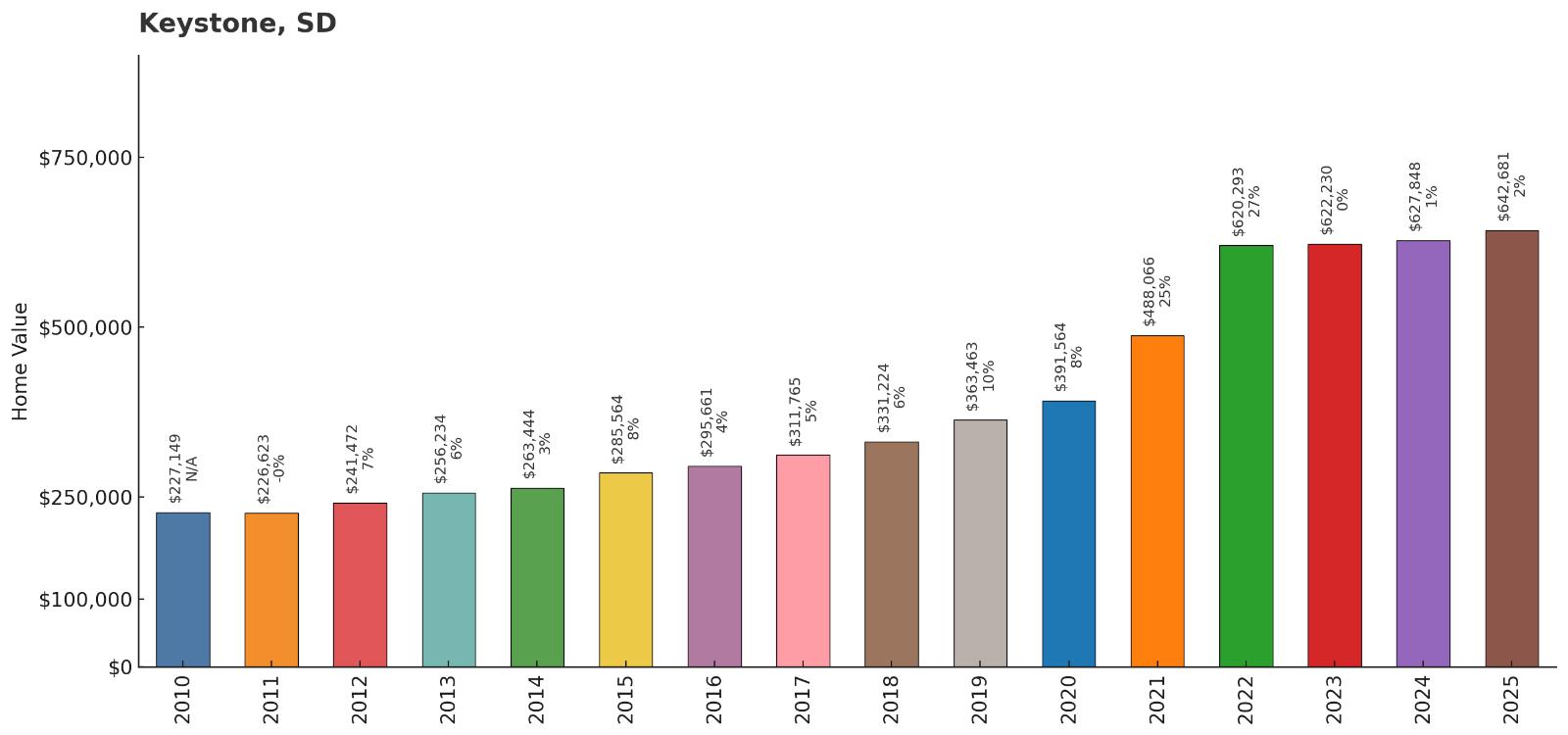
- 2010: $227,149
- 2011: $226,623
- 2012: $241,472
- 2013: $256,234
- 2014: $263,444
- 2015: $285,564
- 2016: $295,661
- 2017: $311,765
- 2018: $331,224
- 2019: $363,463
- 2020: $391,564
- 2021: $488,066
- 2022: $620,293
- 2023: $622,230
- 2024: $627,848
- 2025: $642,681
Keystone leads South Dakota with exceptional growth since 2010, nearly tripling to reach $642,681 in 2025. The strongest appreciation occurred during 2021-2022, when values surged over $132,000 in two years. Current values reflect Keystone’s unique position as the gateway to Mount Rushmore and premier Black Hills destination.
Why Keystone?
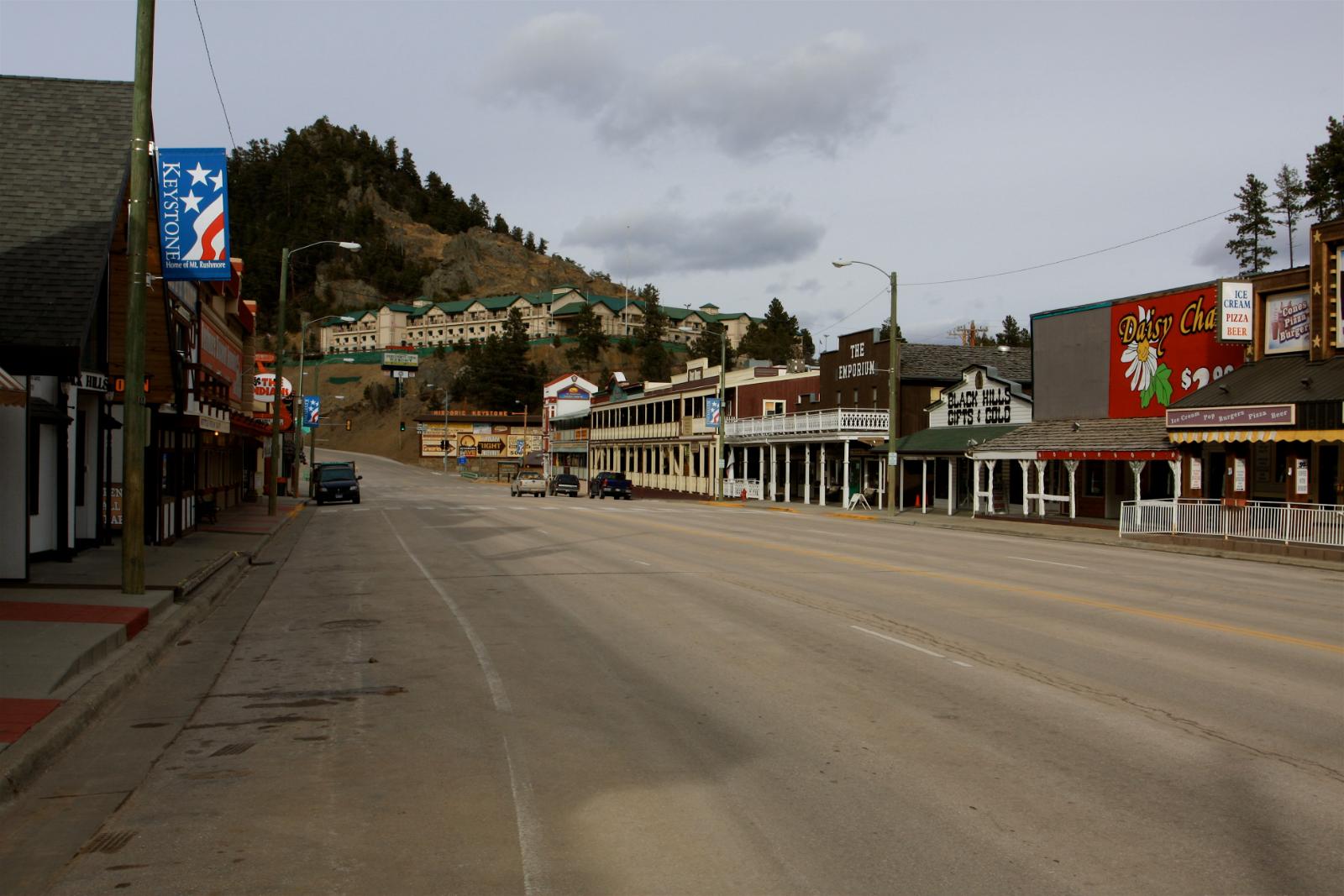
Why Are People Willing to Pay So Much to Live Here? What’s Special About It?
Keystone offers unparalleled proximity to Mount Rushmore National Memorial, making it one of America’s most famous small towns and a premier destination for tourism investment. Residents enjoy year-round access to world-class attractions, outdoor recreation, and tourism-based business opportunities. The town provides mountain living with international recognition and economic stability through tourism.
The community features unique investment opportunities through vacation rentals, tourism businesses, and seasonal enterprises that capitalize on millions of annual visitors. Keystone appeals to entrepreneurs, retirees, and those seeking mountain lifestyle with income potential from tourism. Many residents appreciate living in a globally recognized destination while maintaining small-town character and Black Hills outdoor recreation access.
How Keystone Rose to Prominence
Keystone was established in the 1880s as a gold mining camp, taking its name from the Keystone Mine operation in the area. The town developed around placer gold mining activities, with prospectors and miners settling in the gulch that would become the community center. Early economic activity centered on gold extraction and support services for mining operations throughout the region.
The town’s transformation began in the 1920s when Mount Rushmore construction started just three miles away, gradually shifting the economy from mining to tourism. Keystone became the primary gateway community for Mount Rushmore visitors, developing restaurants, shops, and accommodations to serve millions of annual tourists. This evolution created a unique economic model where a small mountain town serves an international tourism market.
3 Interesting Tidbits
1. Mount Rushmore Gateway – Keystone serves as the primary access point to Mount Rushmore National Memorial, hosting millions of visitors annually just three miles from the monument.
2. Tourism Economics – The town’s economy generates significant revenue from tourism, with visitor spending supporting local businesses and property values year-round.
3. Mining Heritage – The historic Big Thunder Gold Mine still operates as a tourist attraction, allowing visitors to pan for gold and explore underground mining tunnels.



